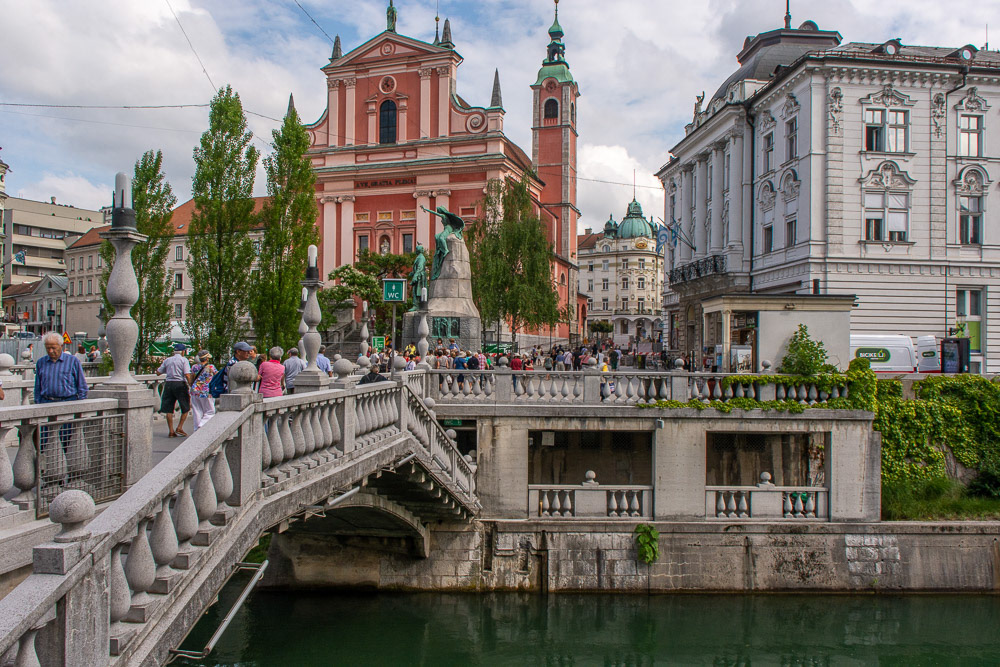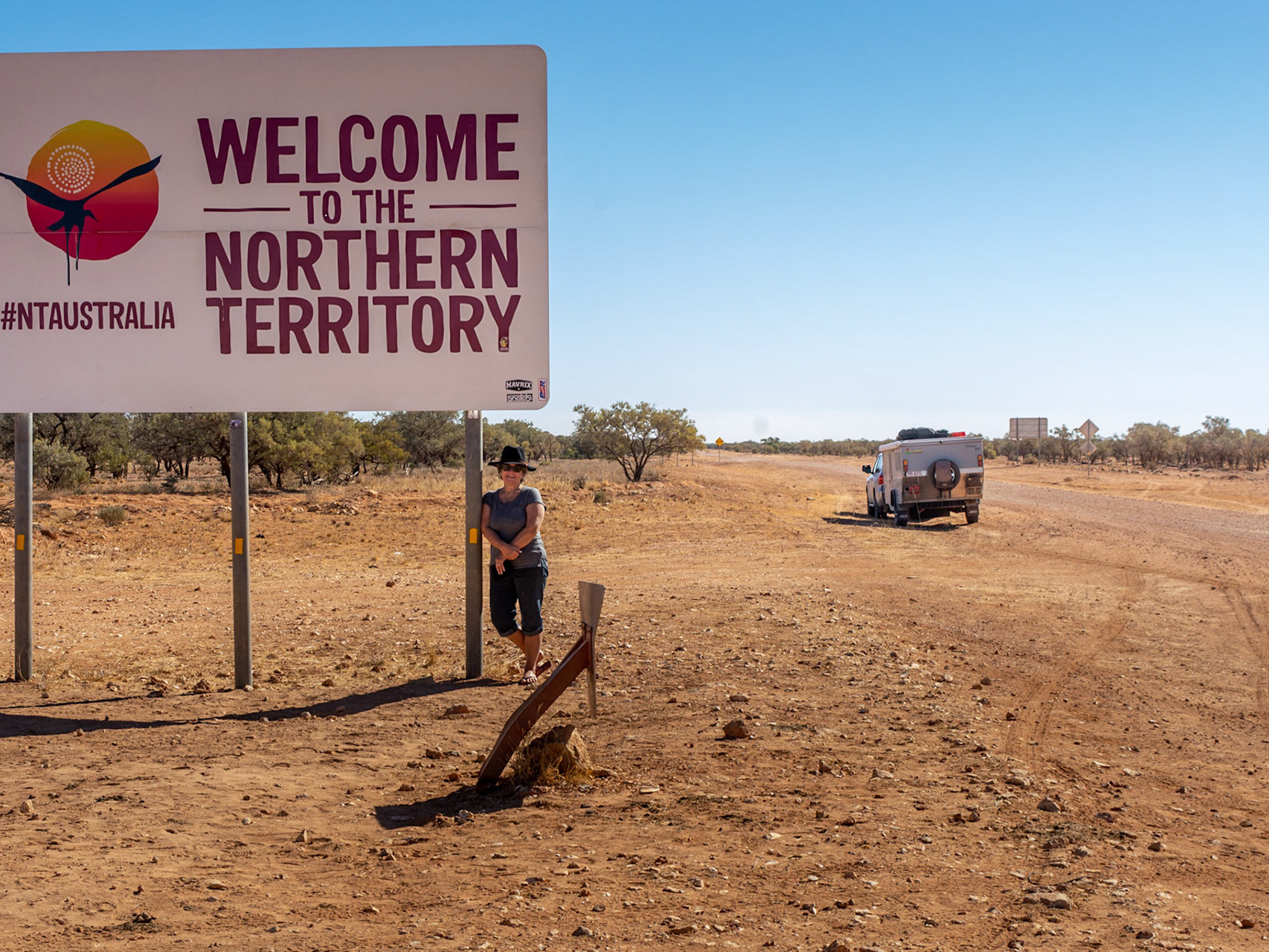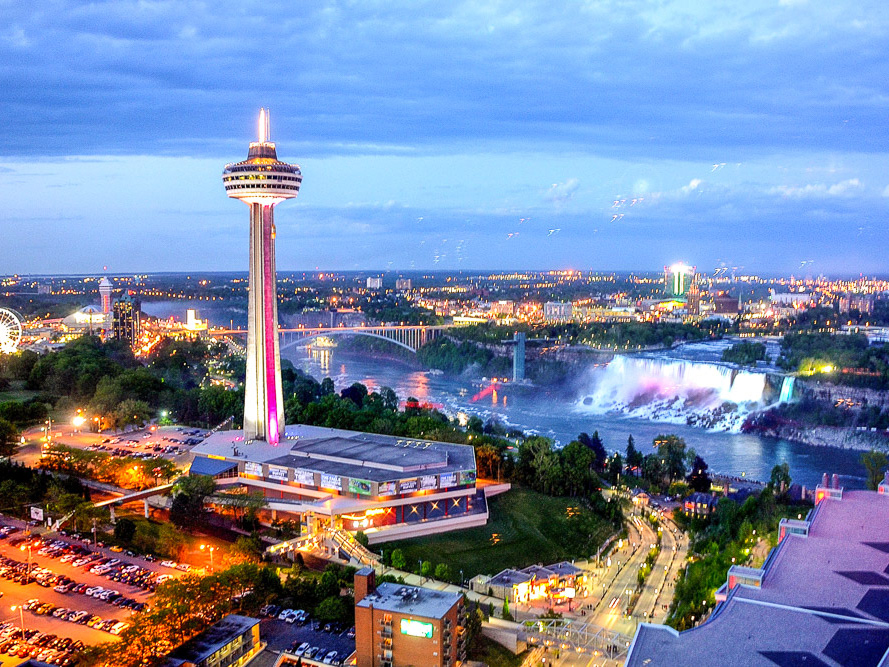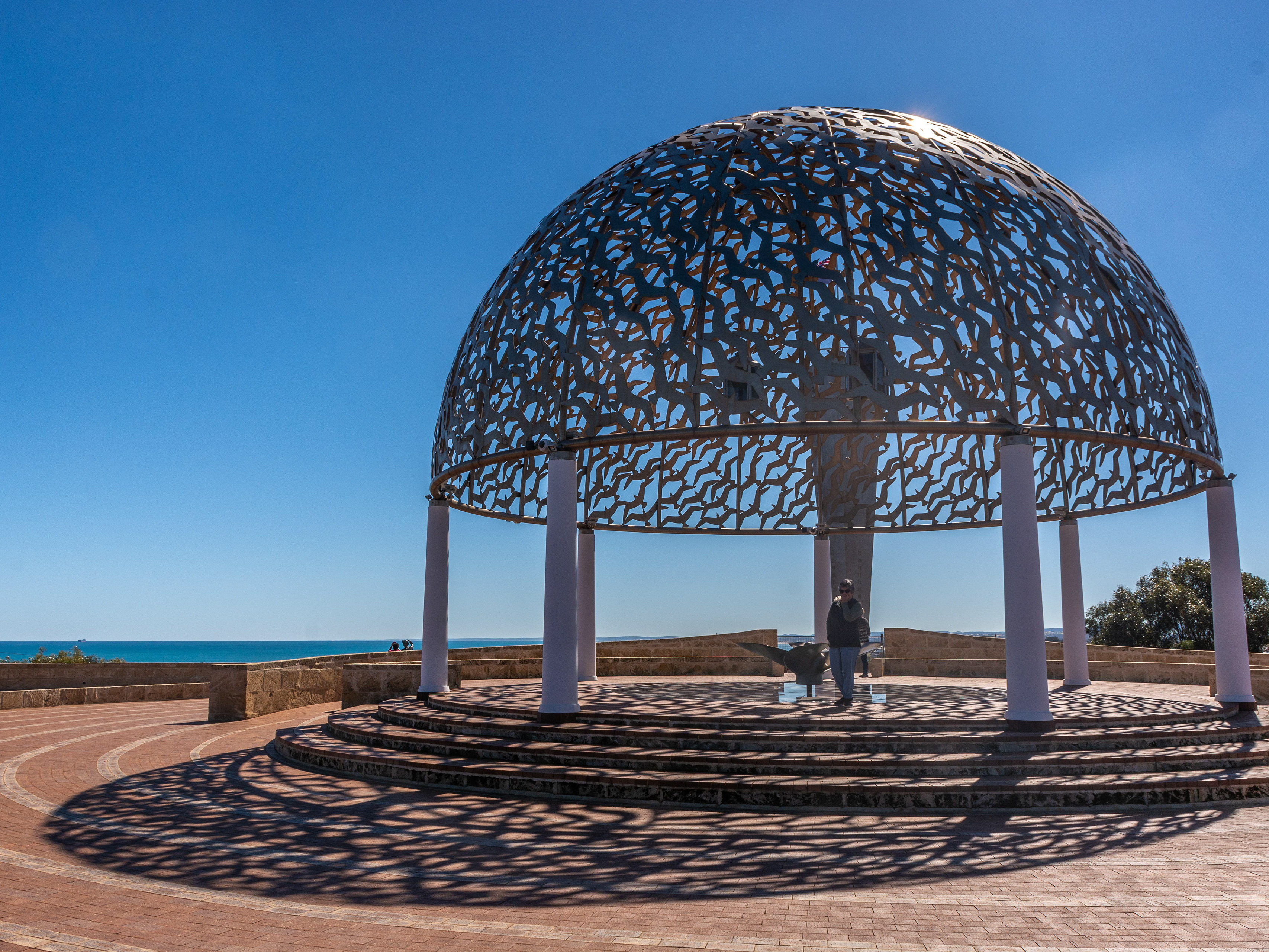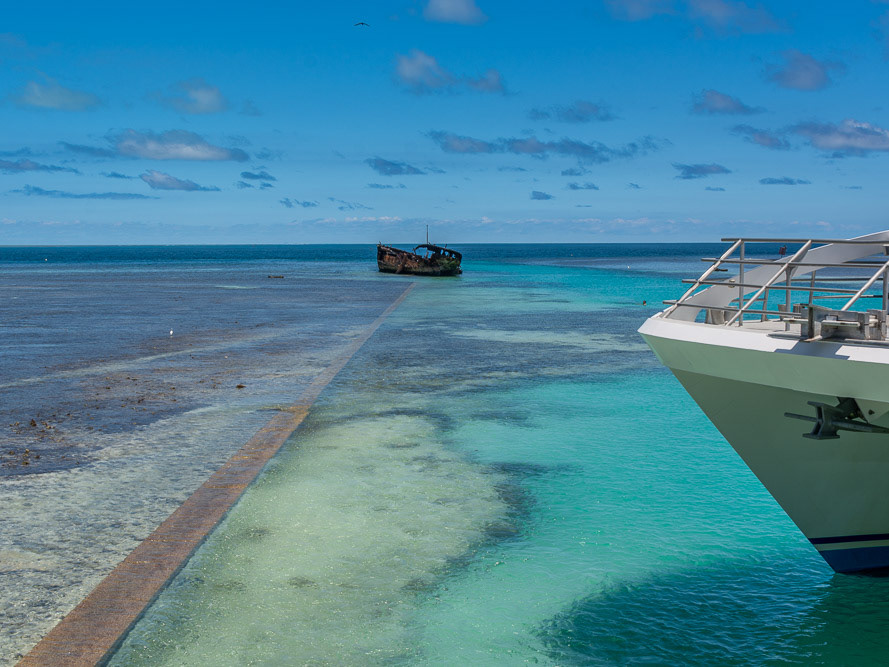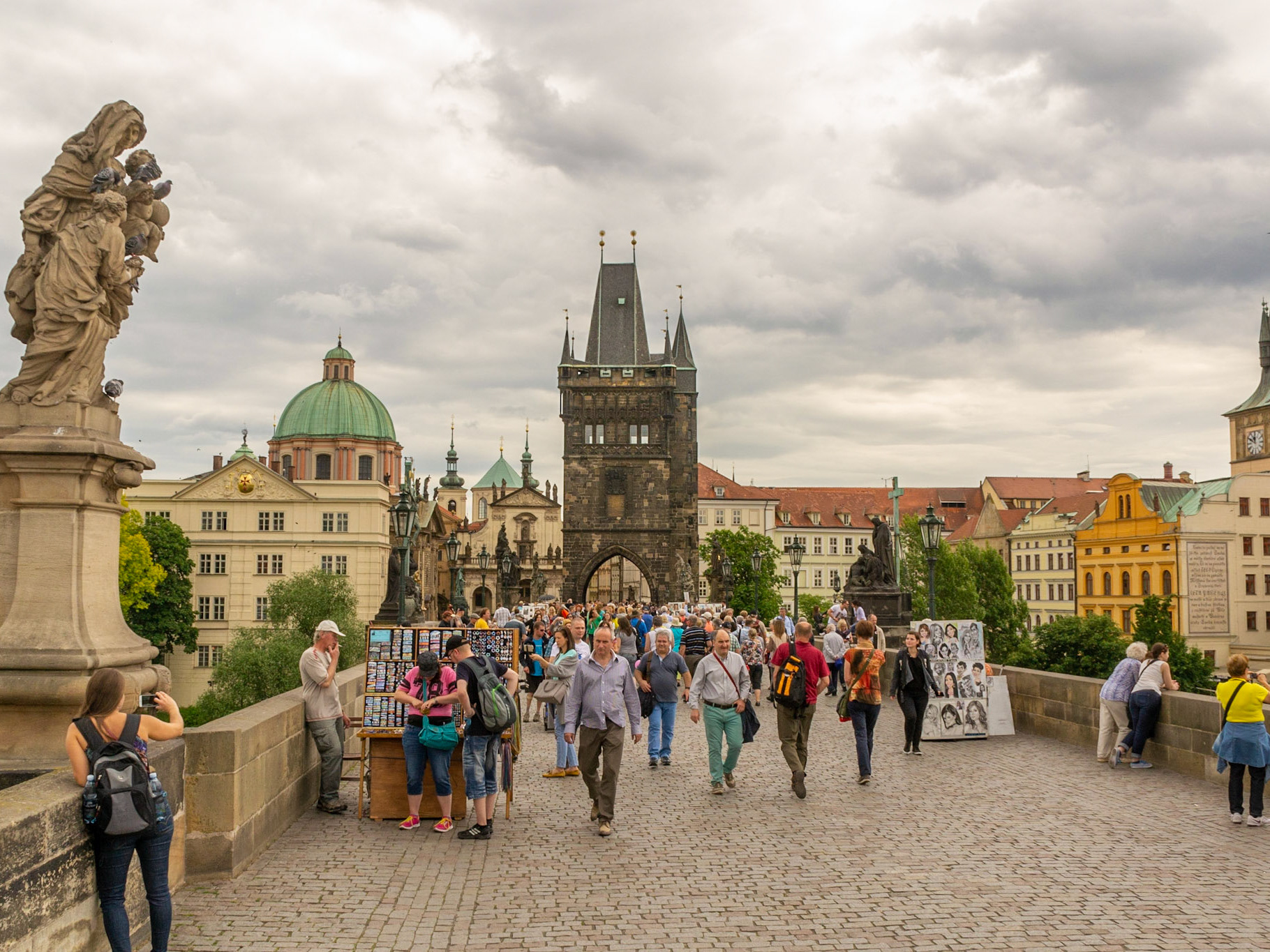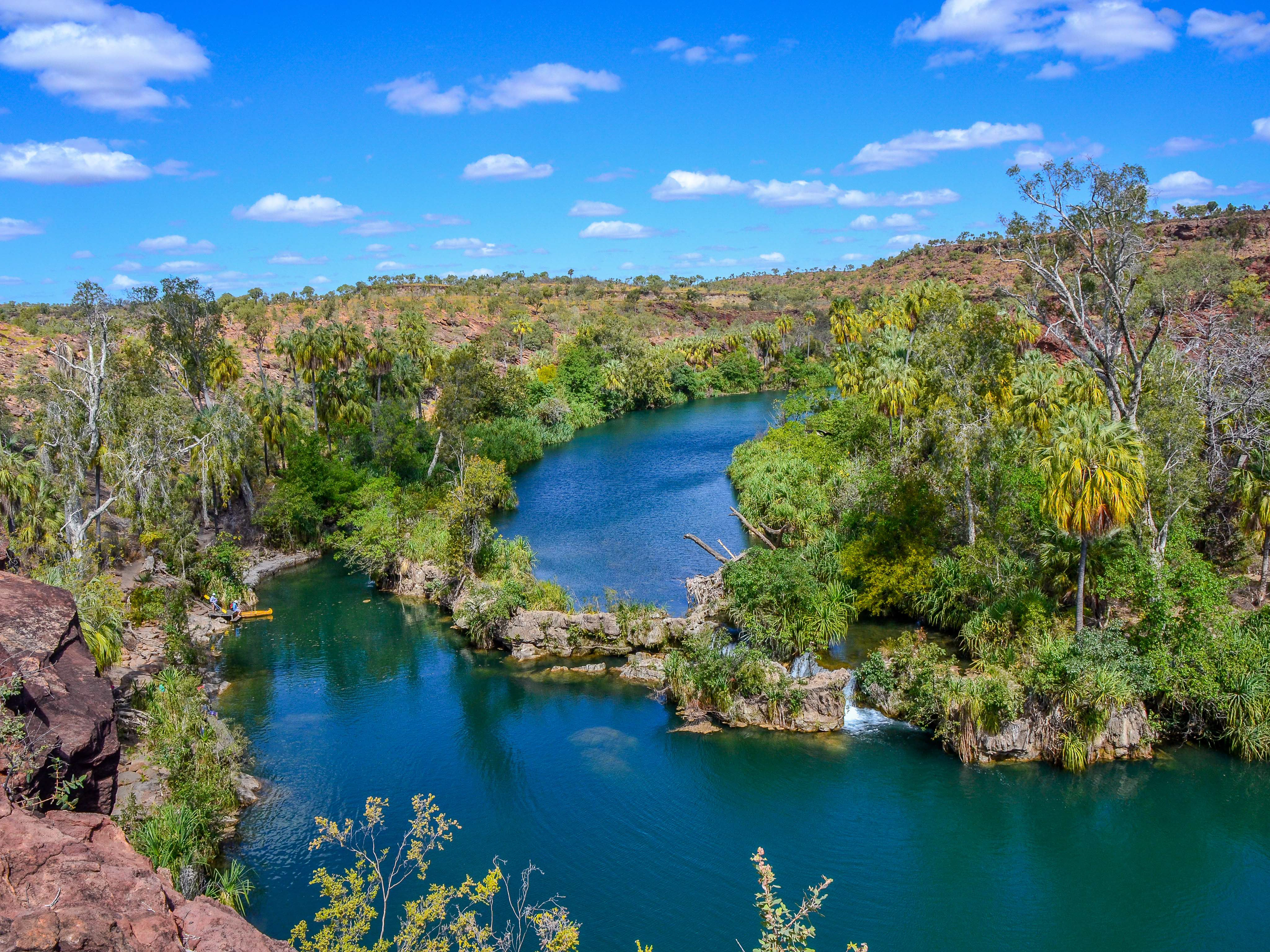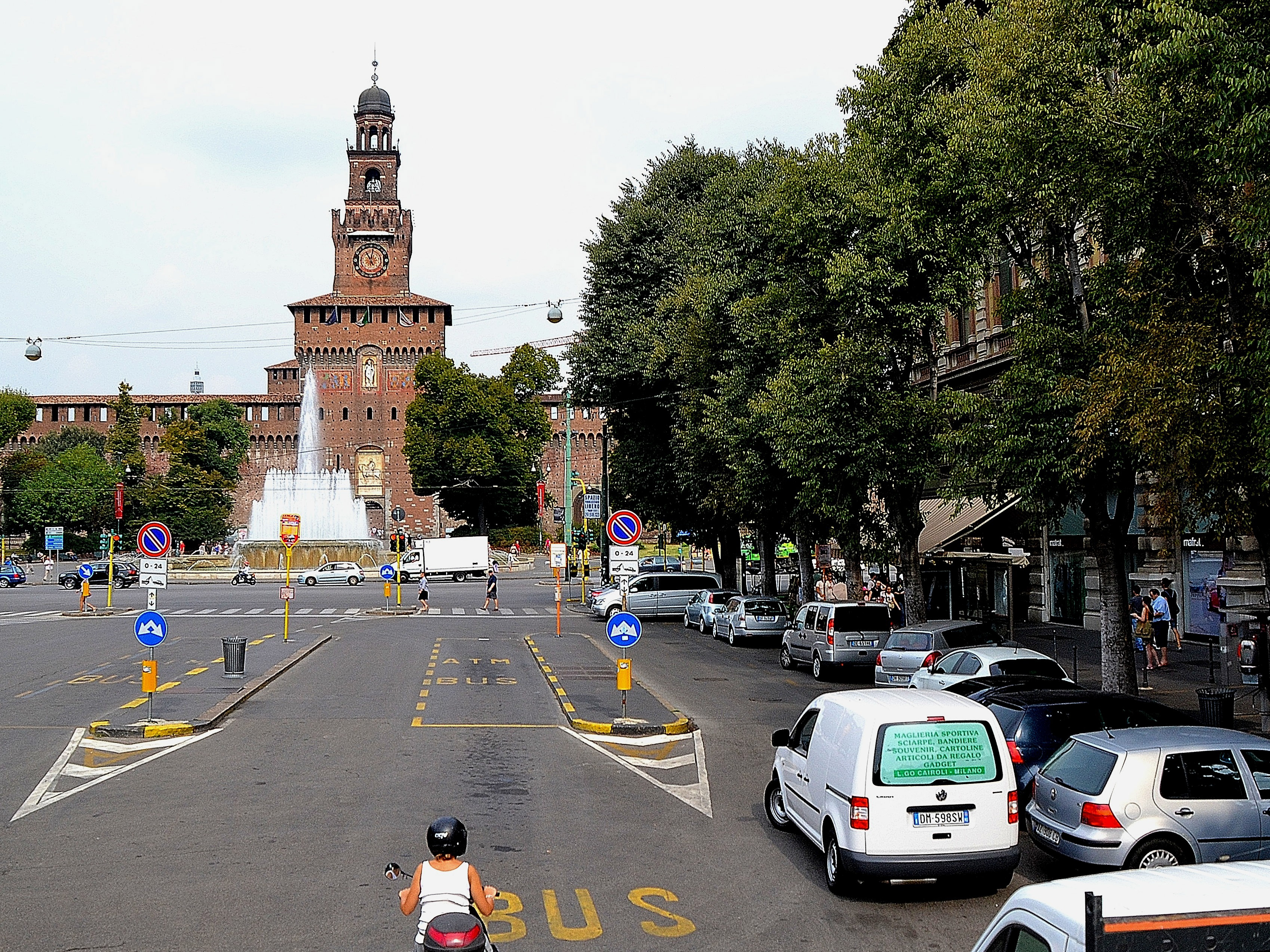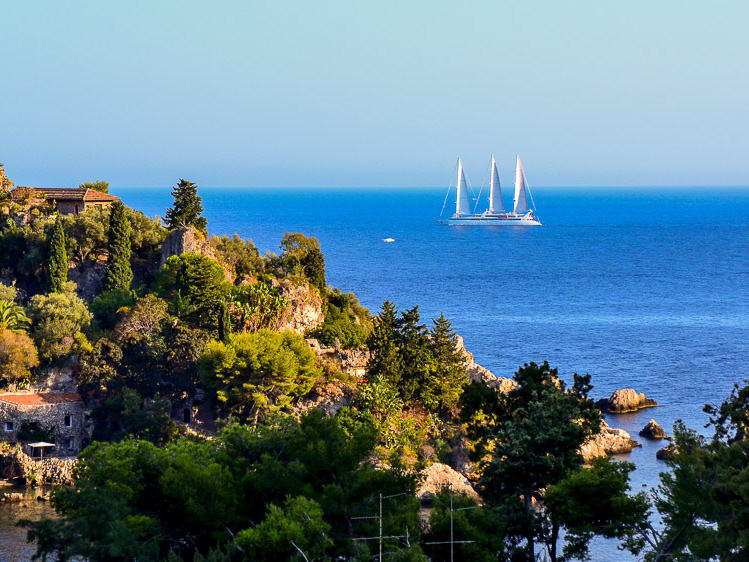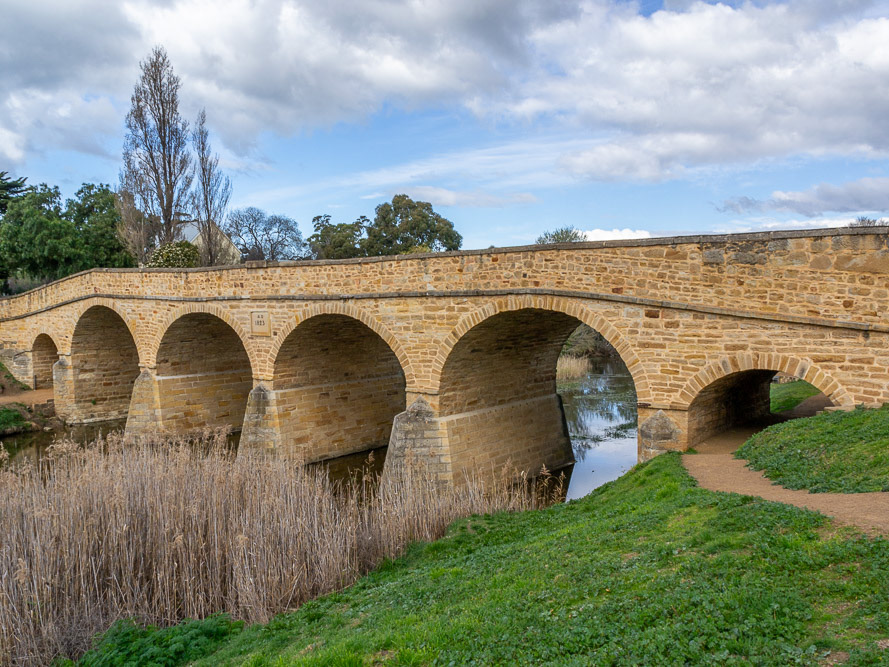Our first stop on day one, the Postojna Caves, a 24km long Kast cave system in Southwest Slovenia formed by the Pivka River.
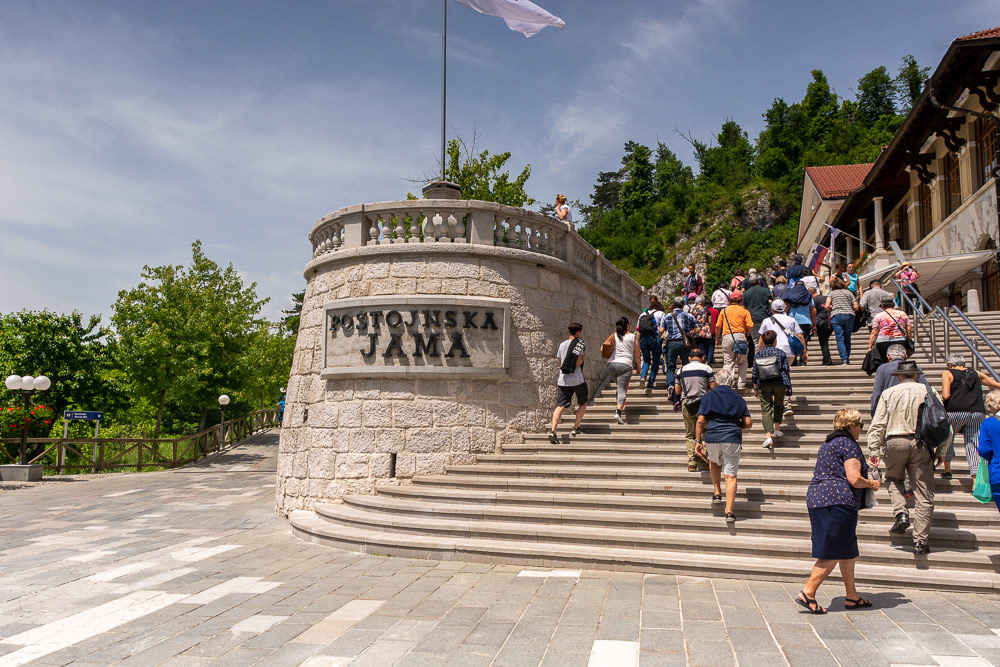
Postojna Caves the world's most visited - 1 million plus tourists per year
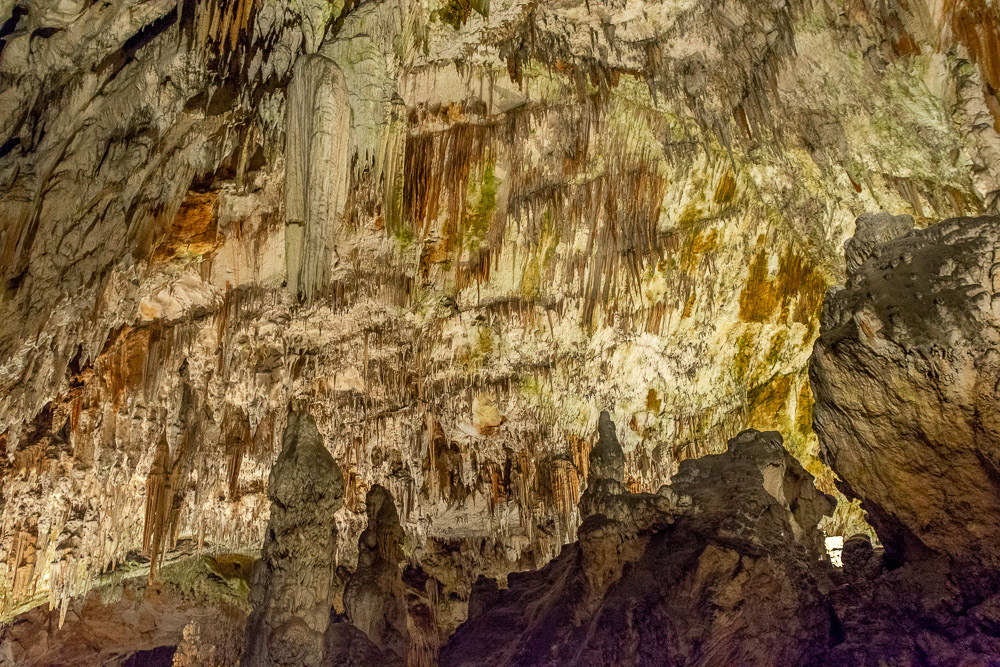
Postojna Caves, Stalegmites and Stalegtites of all shapes and sizes.

Lighting not only highlights but silhouettes features within the caves

An extensive network of well formed paths lead deep into cave


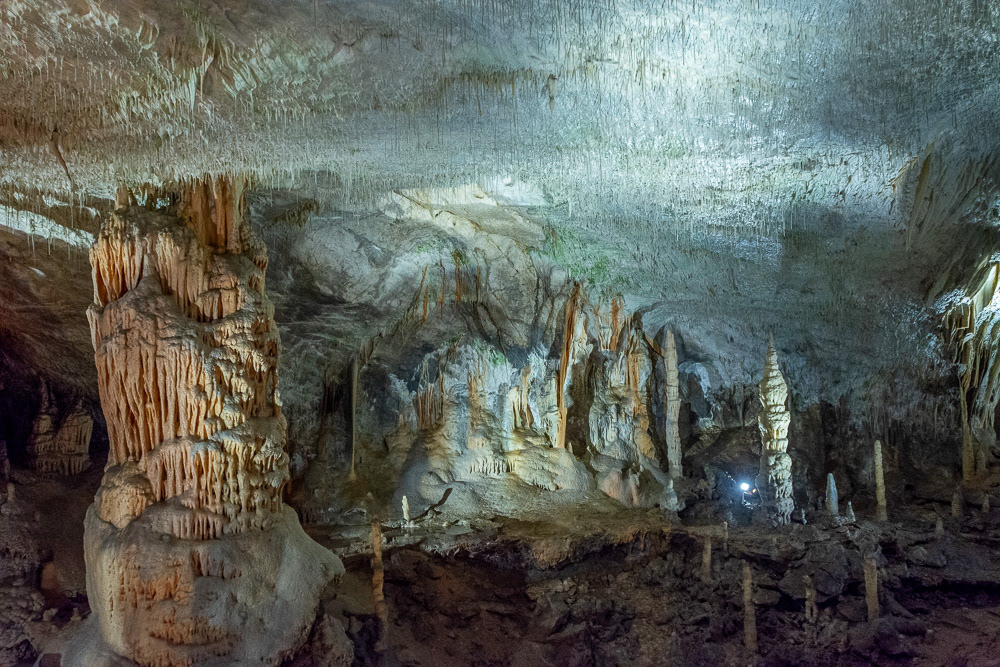
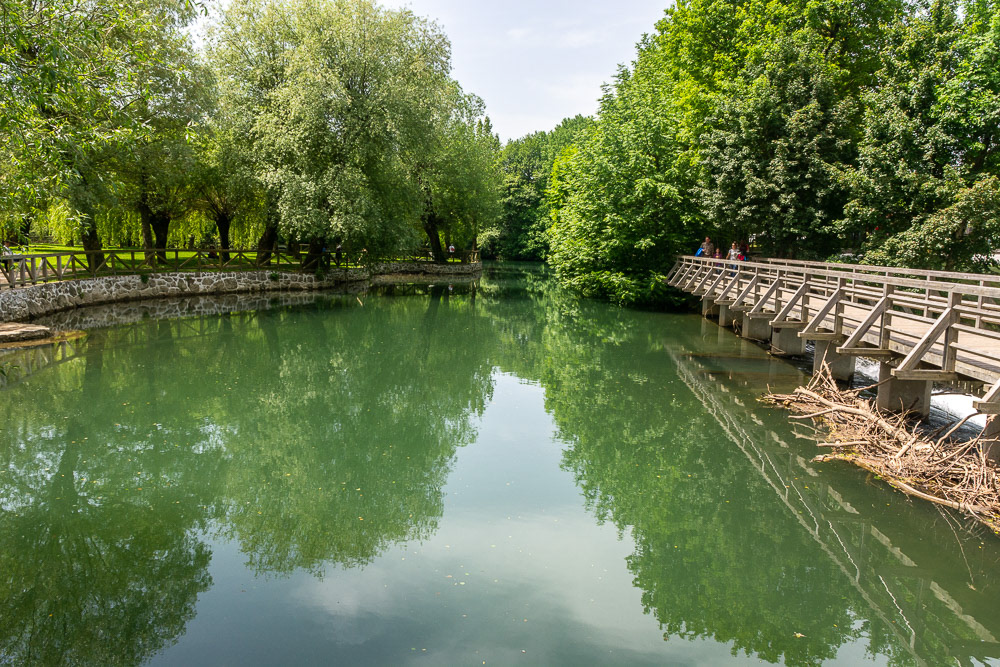
The river Pivka Ponor

The Modrijan Mill (or the Lower Mill) on the Pivka.
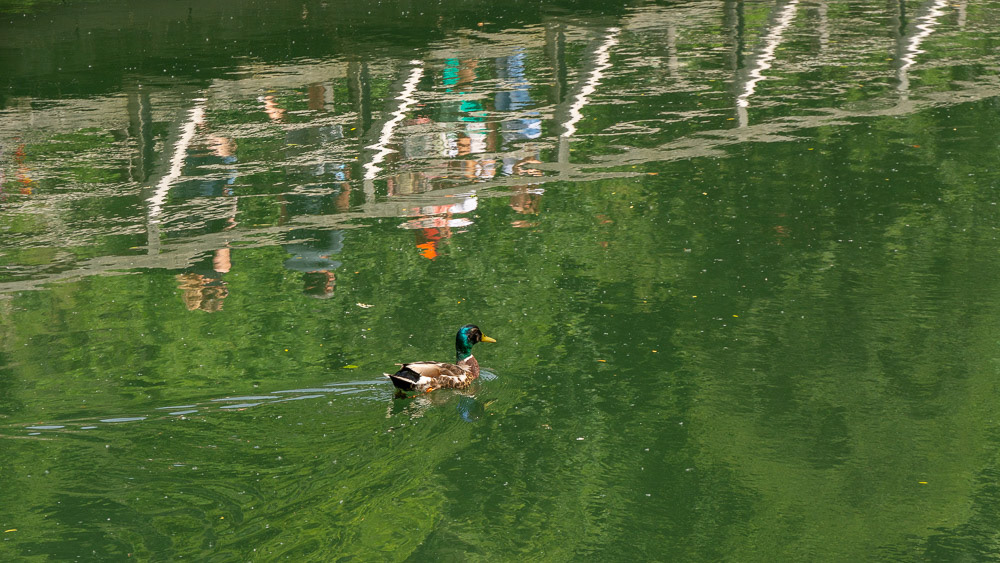
A Mallard glides silently across the still waters upstream of the millstream weir.
Opatija, our home base for the next couple of days is a traditional seaside resort in west Croatia.
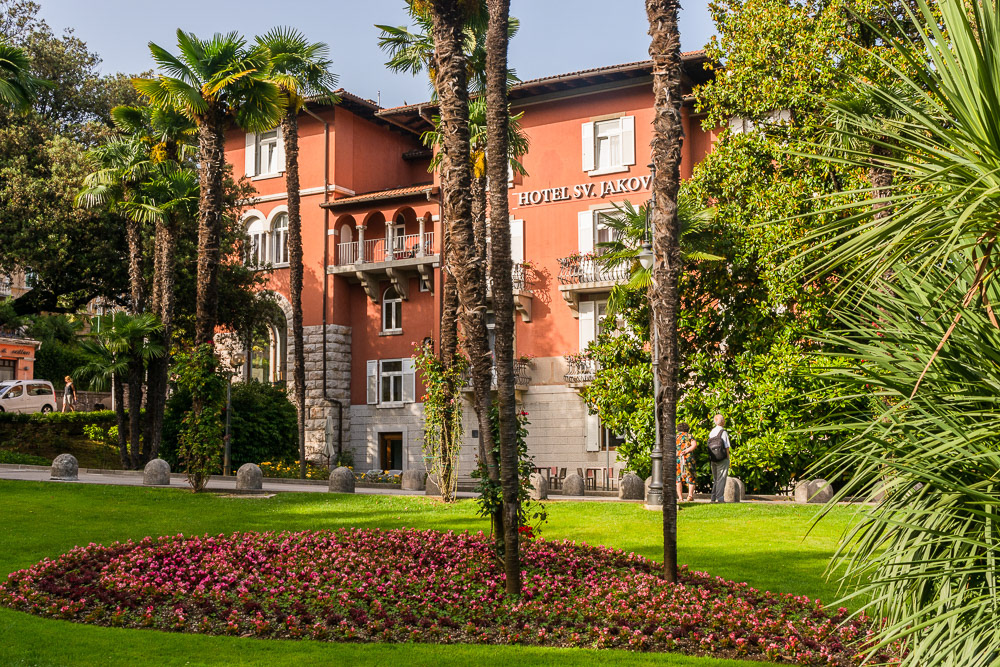
Hotel Jakov an example of the historic buildings reminiscent of the Austrian Riviera.

Opatija waterfront - a traditional seaside resort town on the Kvarner Gulf

Opatija small boat marina

Alfresco dining
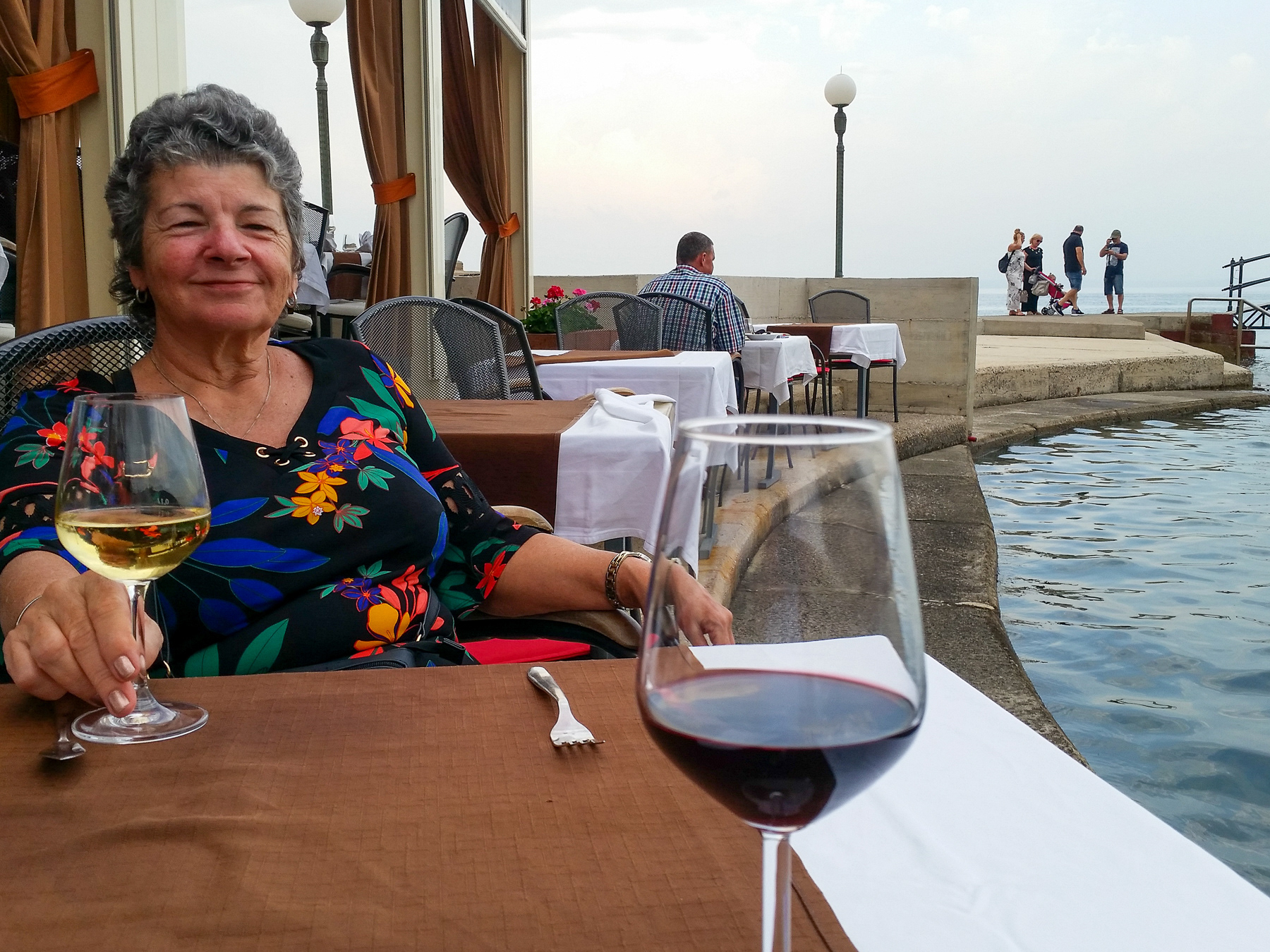
Cher enjoying a local wine.
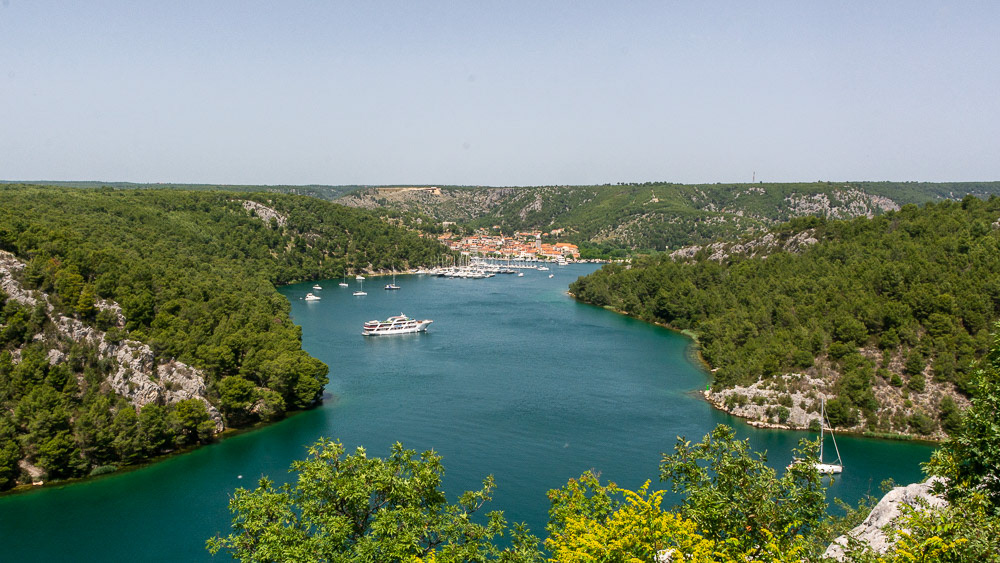
The town of Skradin on the Krka River as we head towards Split.
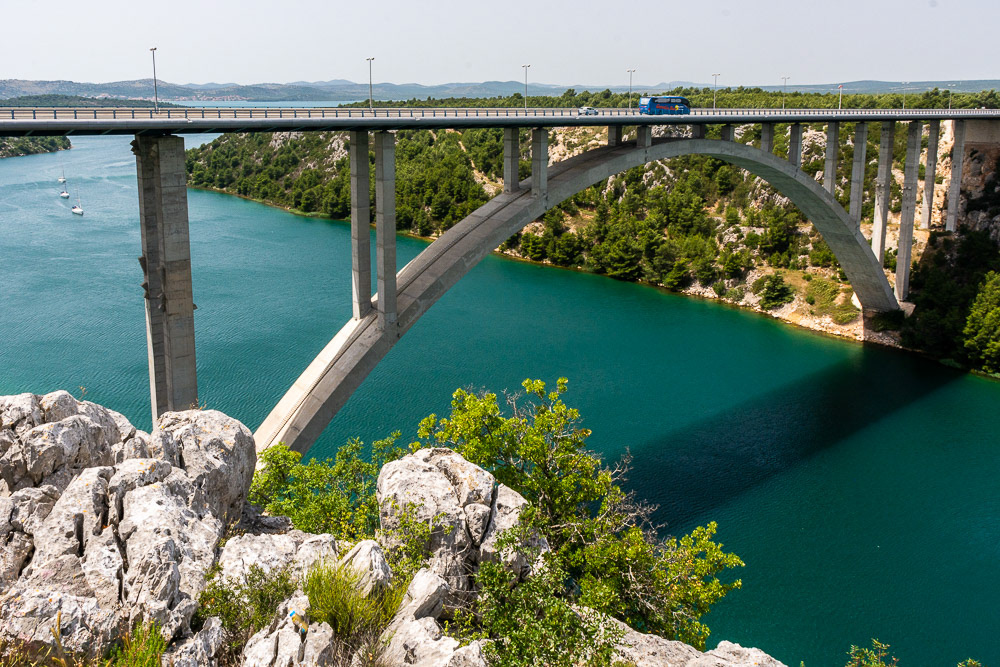
The Krka Bridge between the Skradin and Šibenik interchanges.
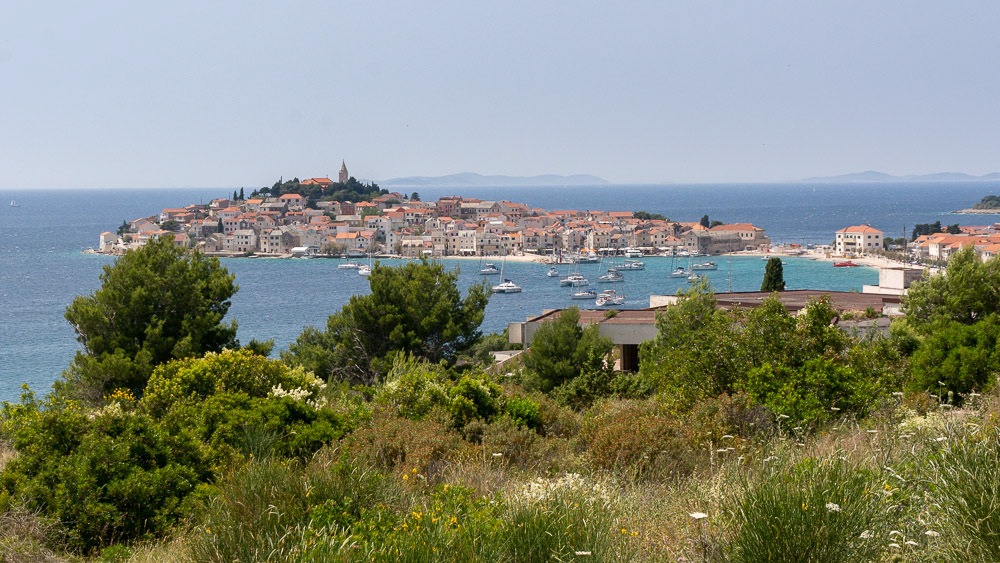
Primošten, once an islet close to the mainland. In 1542 the islet was protected walls and towers and a draw bridge connected it to the mainland.
A day trip to Rovinj, a popular tourist resort and active fishing port on the Istrian peninsular.
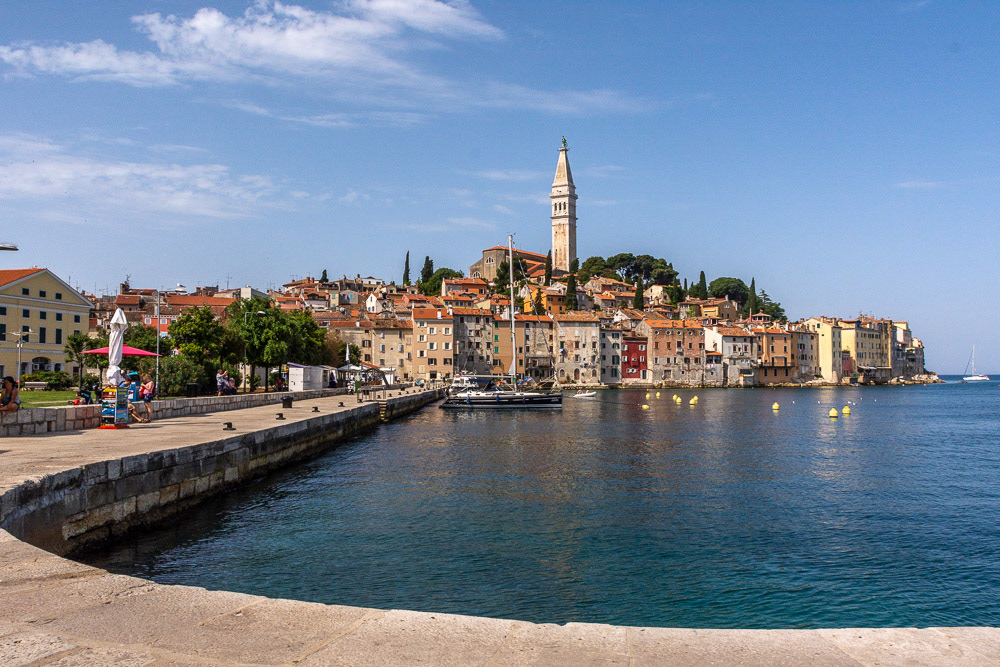
The Campanile of St Euphemia church dominates the skyline

Produce markets - popular with locals and tourists.

Balbi's Arch built in 1678–79 leads to Grisia Street.
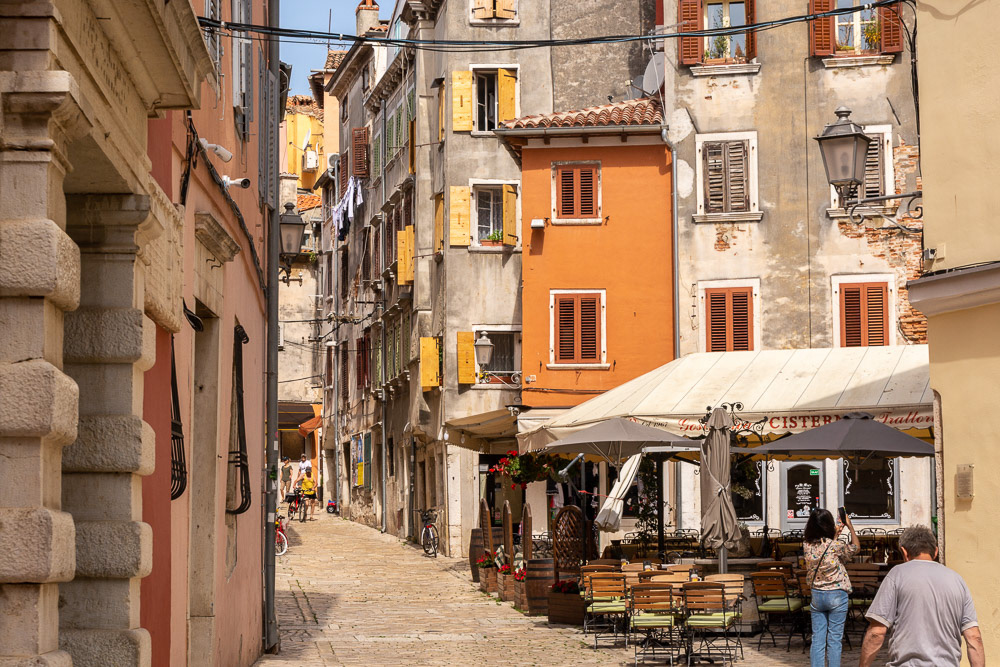
Exploring Grisia Street on our way to St Euphemia
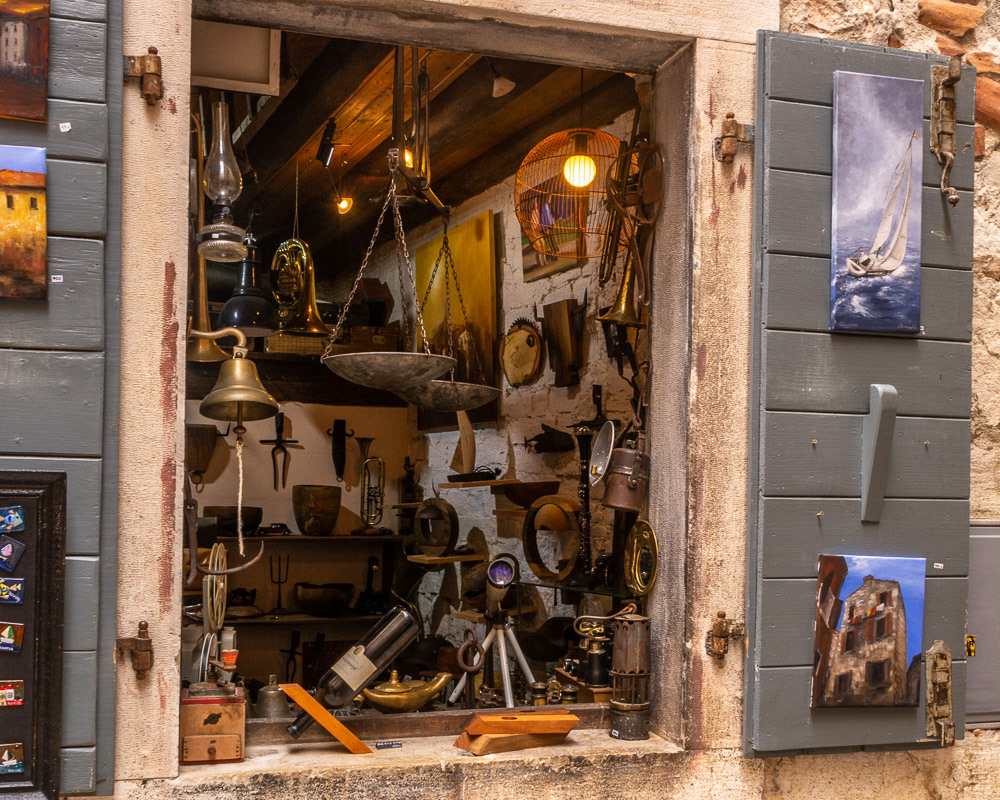
Window shopping, treasure inside......
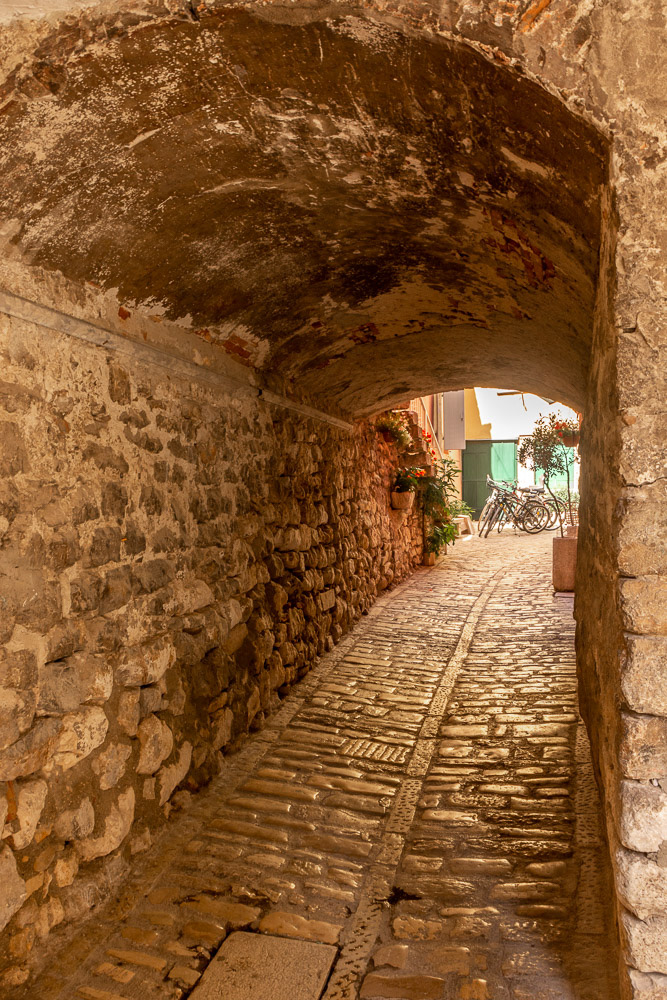
Bicycles in the light at the end of the tunnel.........
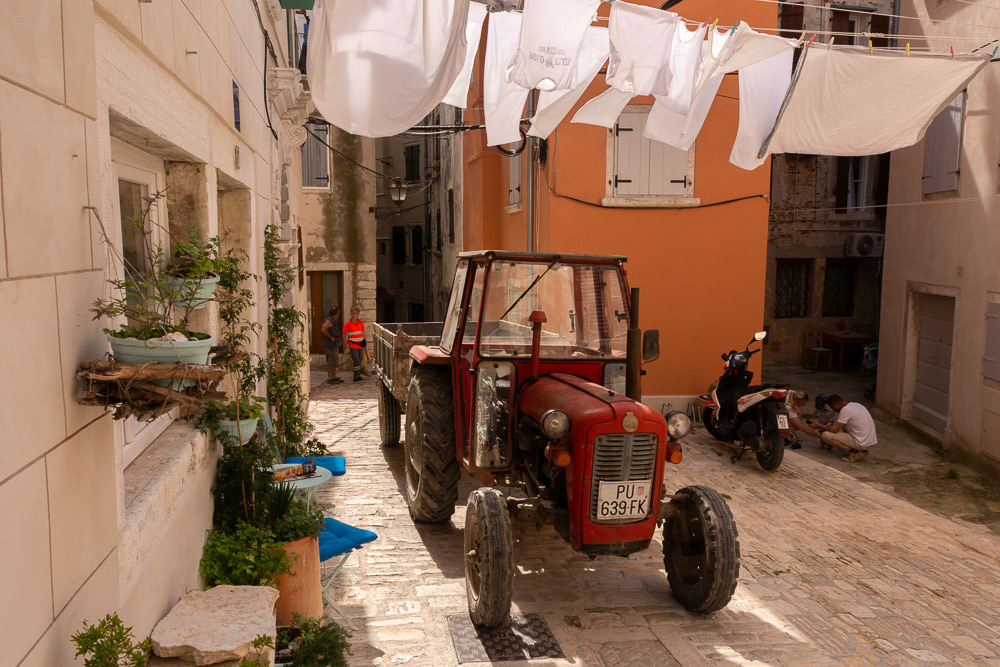
And life goes on .......
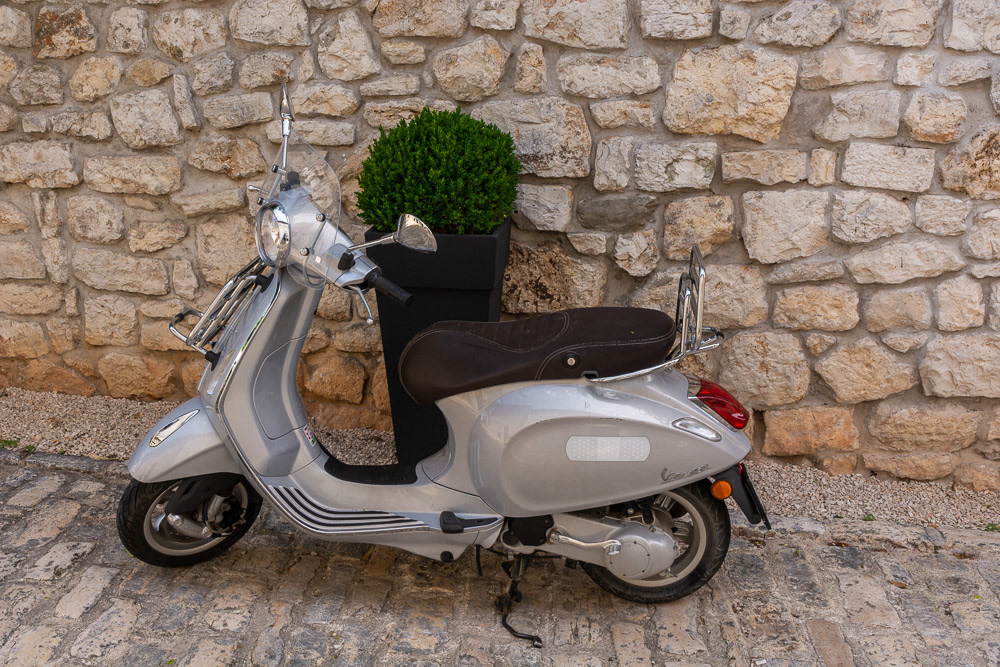
Band aid for a Vespa....
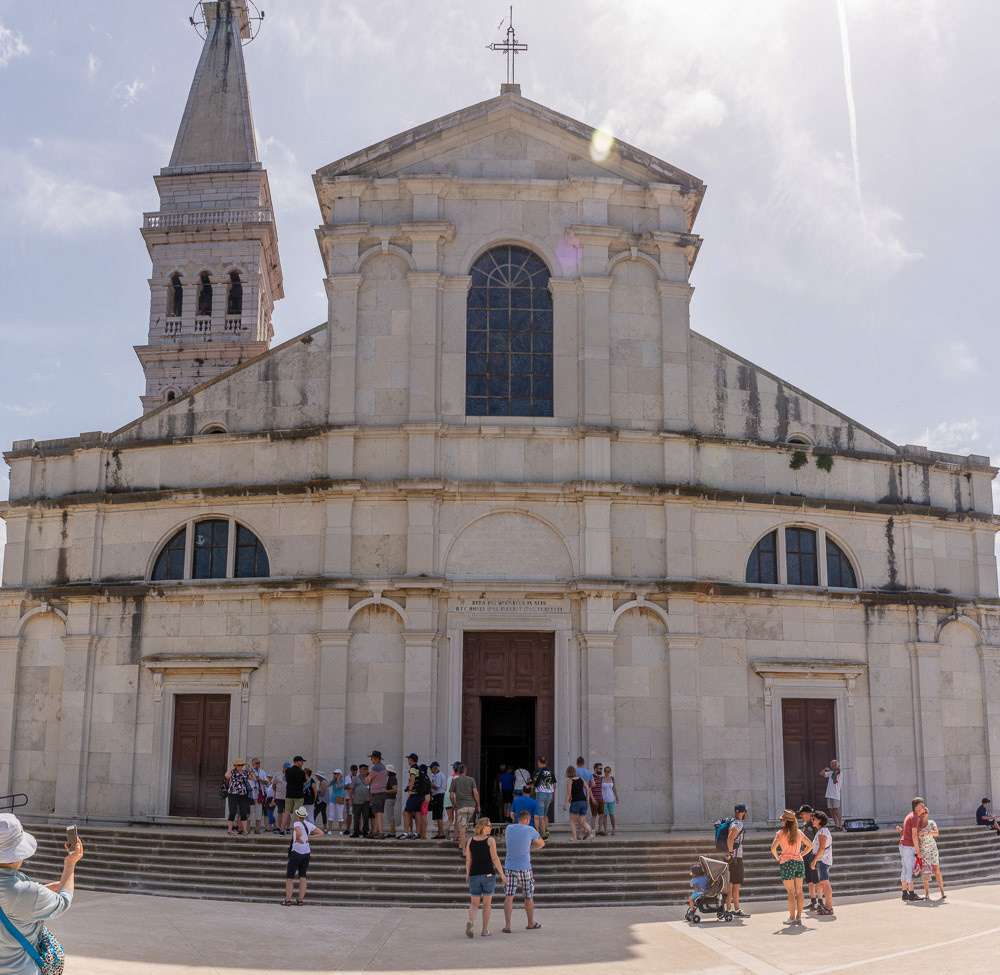
The western facade of the Church of St Euphemia.
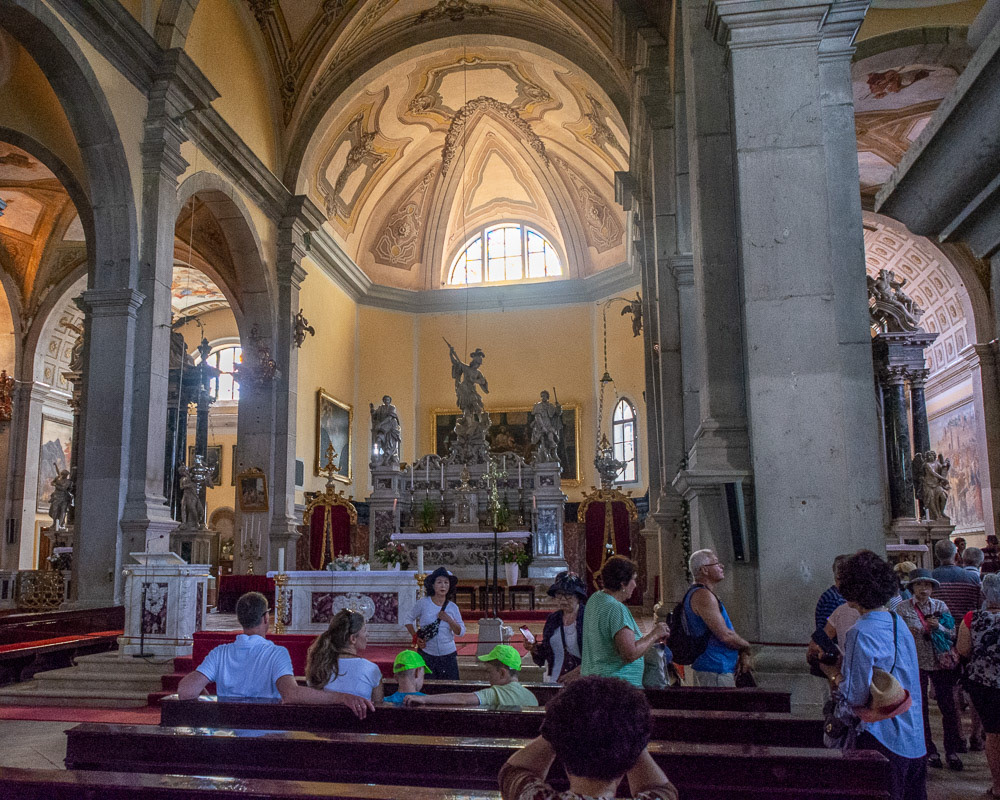
Inside the Baroque church of St Euphemia.
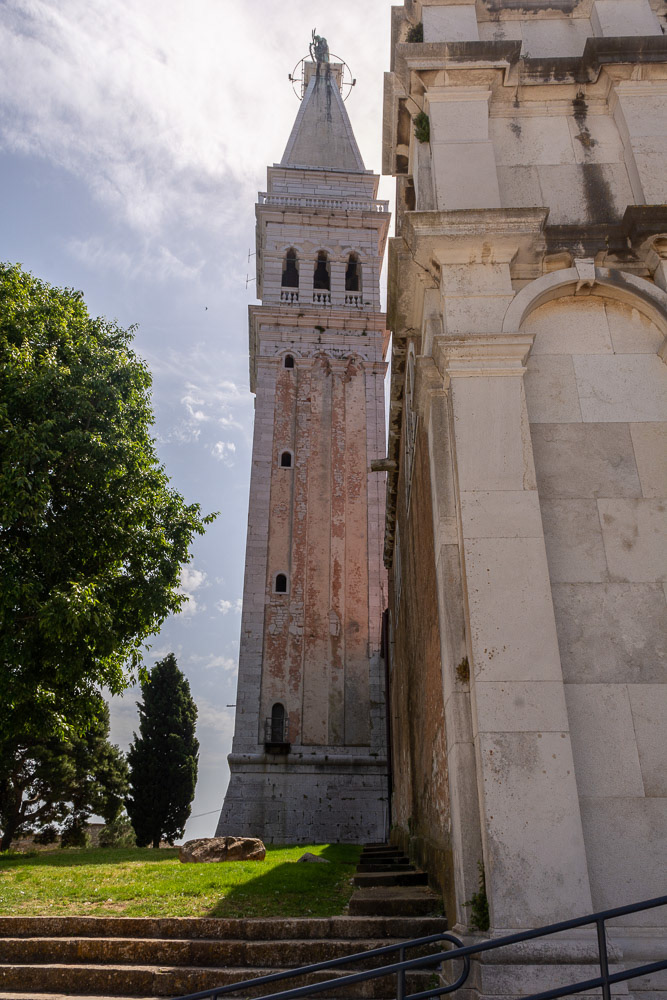
The bell tower resembles the tower of St Mark's Basilica in Venice. It was built during 1654–1680.
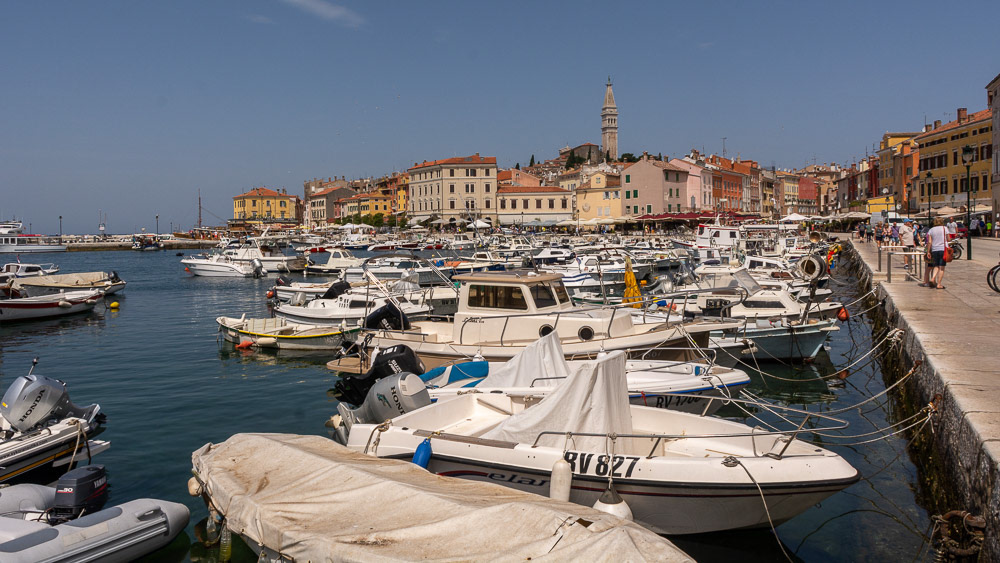
Rovinj Harbour looking towards St Euphemia church - originally located on an island but later joined to the mainland.
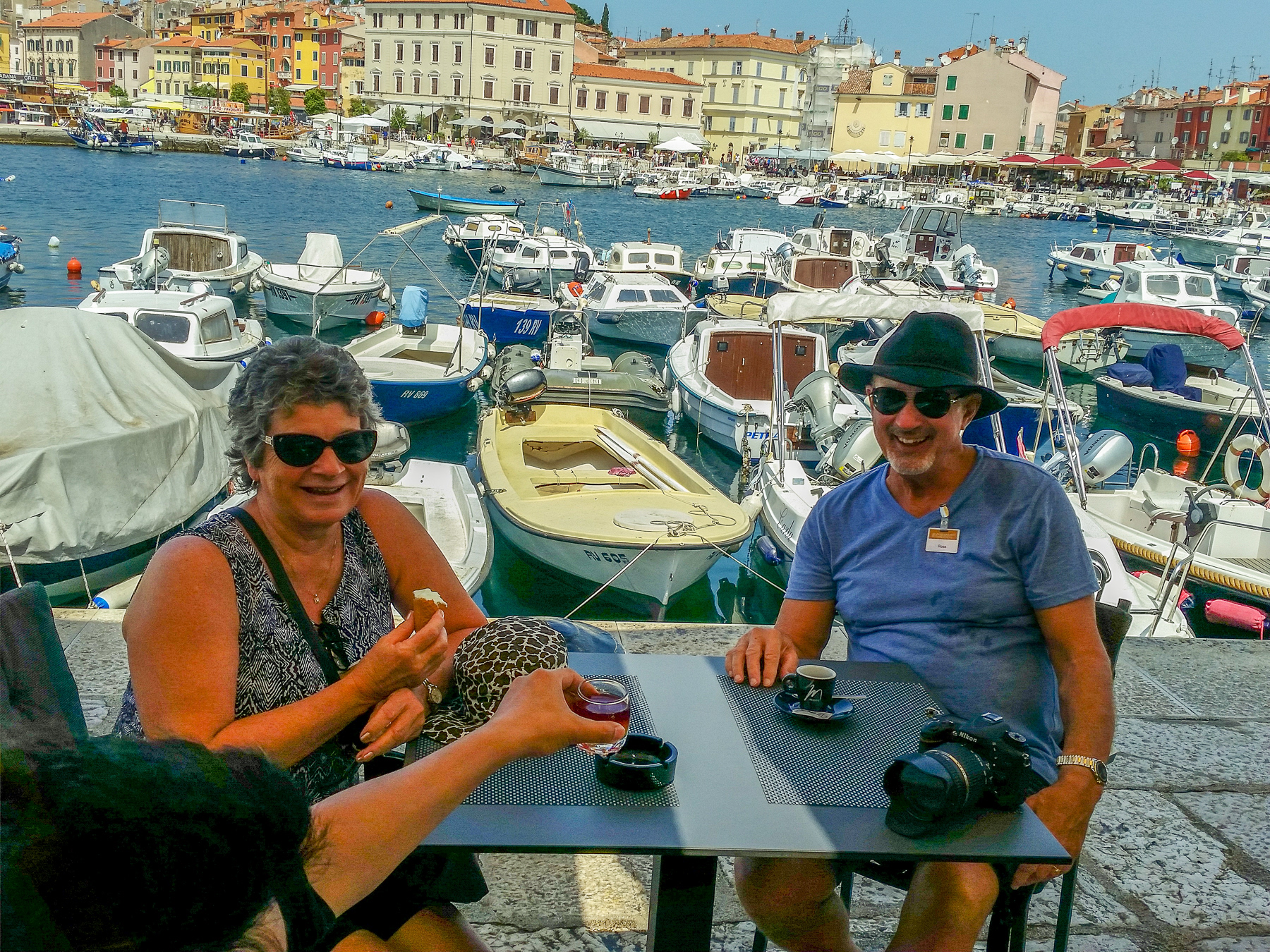
Enjoying an expresso and ice cream in a harbour-side café.
On our return journey to Opatja we visit Paula, home to ruins of a Roman Arena.
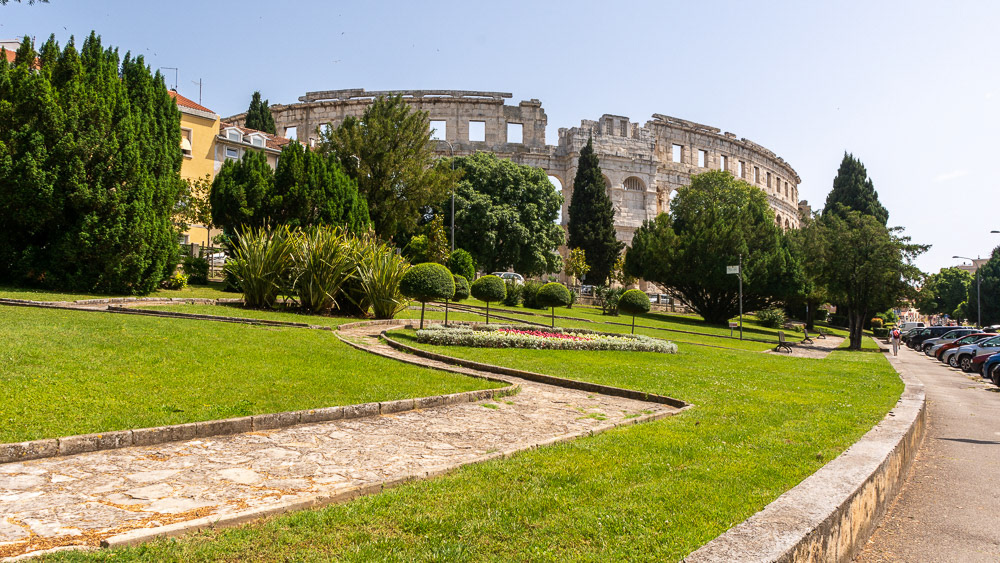
Pula Areana (Pulska Arena)) is the best preserved ancient monument in Croatia. It was built along the Via Flavia, the road from Pula to Aquileia and Rome.
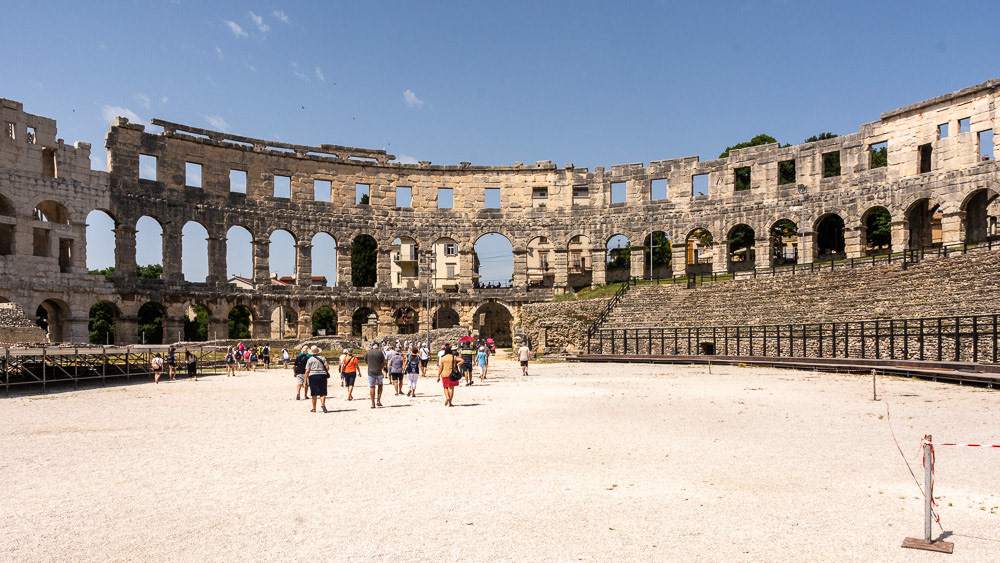
Inside the Arena - The exterior wall is constructed in limestone. The part facing the sea consists of three stories, the other side only two stories as the amphitheatre was built on a slope.
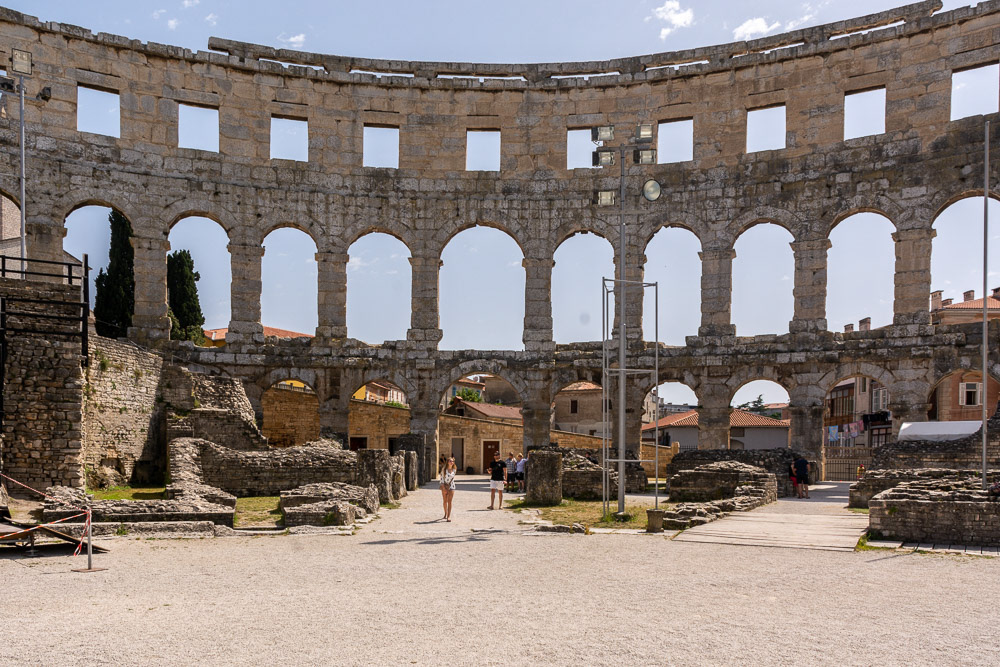
The Arena was built between 27 BC and 68 AD, as the city of Pula became a regional centre of Roman rule, called Pietas Julia.
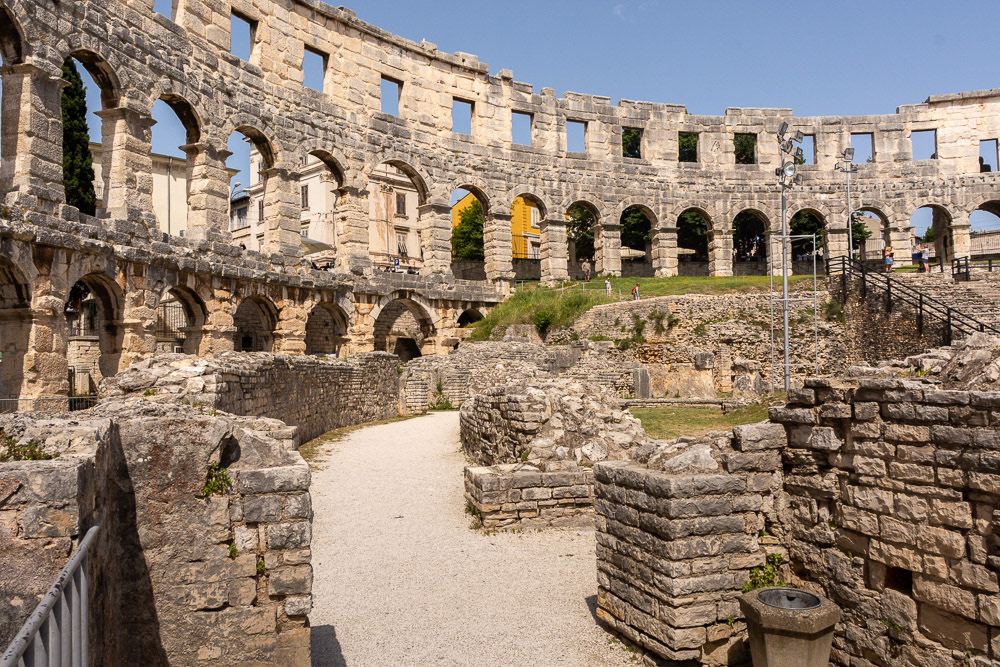
Seating was provided on the sloping ground on the opposite hill side - this side raked timber seating was provided with stores and shops underneath.
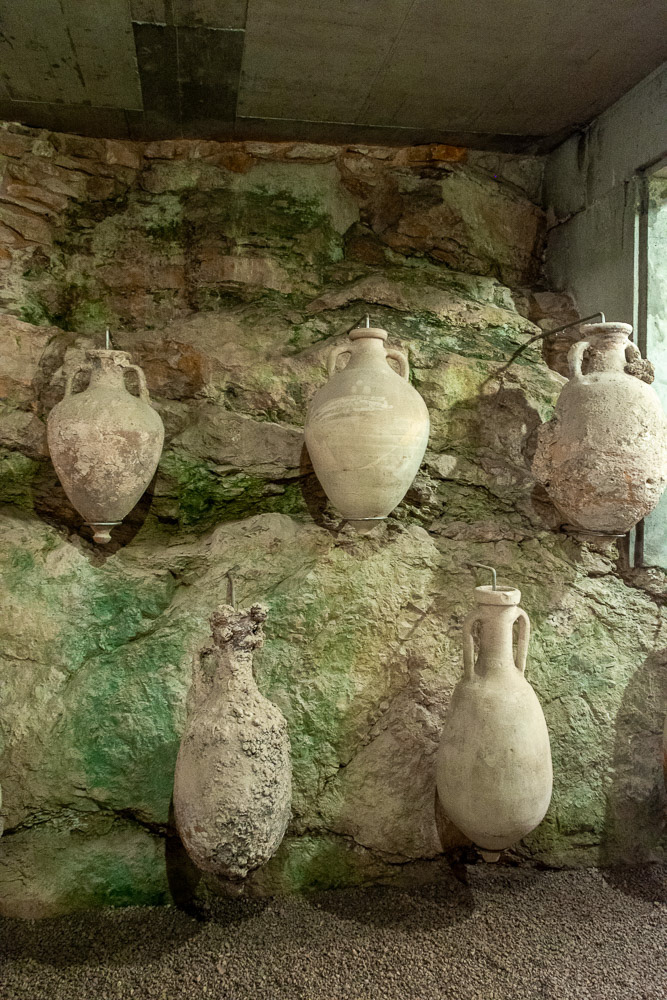
Amphora - ancient vessels used for the storage and transport of liquids such as wine and olive oil.

Each of the four towers (lighter colour in this photo) had two cisterns filled with perfumed water that fed a fountain or could be sprinkled on the spectators.
Split, the second-largest city of Croatia and the largest city of the region of Dalmatia. It lies on the eastern shore of the Adriatic Sea and is spread over a central peninsula and its surroundings. An intraregional transport hub and popular tourist destination, the city is linked to the Adriatic islands and the Apennine peninsula.
It's also home to Dicoletian's Palace, built in AD 305 for the Roman Emperor.

A panorama of the Port of Split.
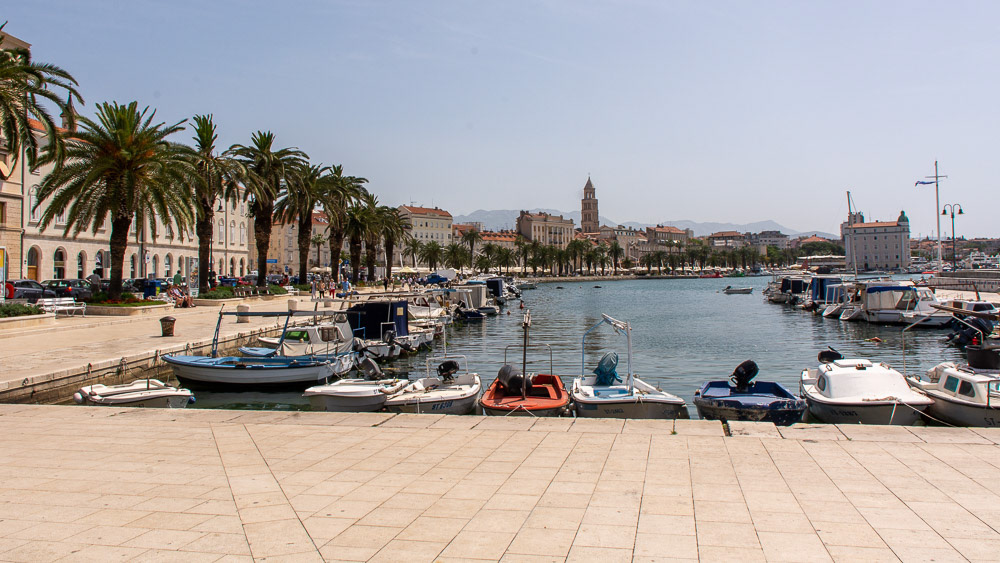
Matejuska Cove looking towards Diocletian's Palace.
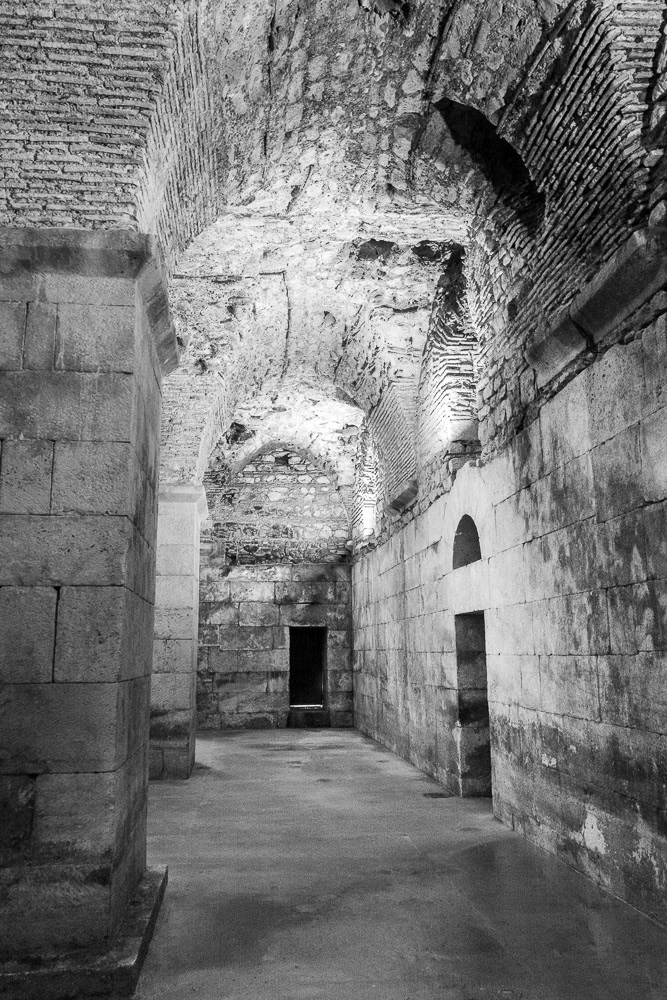
Inside the cellars of Diocletian's Palace.
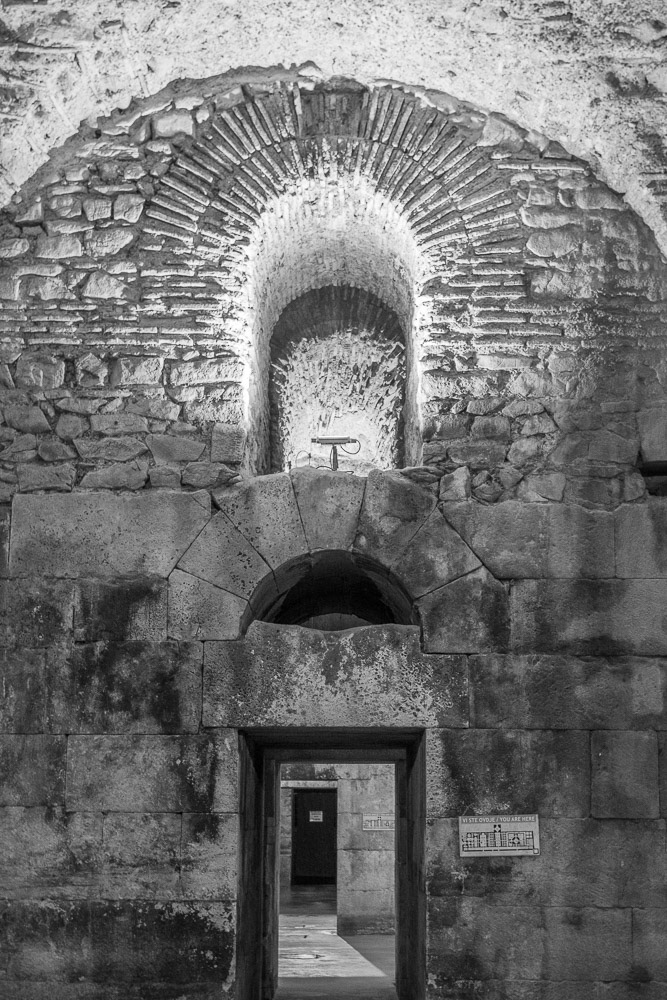
Inside the cellars of Diocletian's Palace.
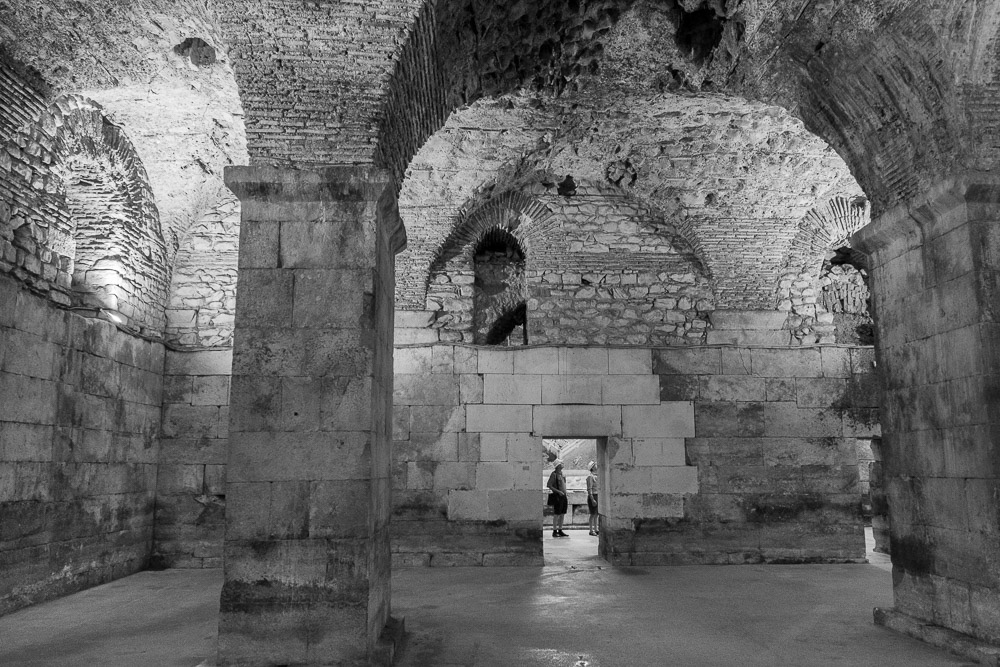
Inside the cellars of Diocletian's Palace.
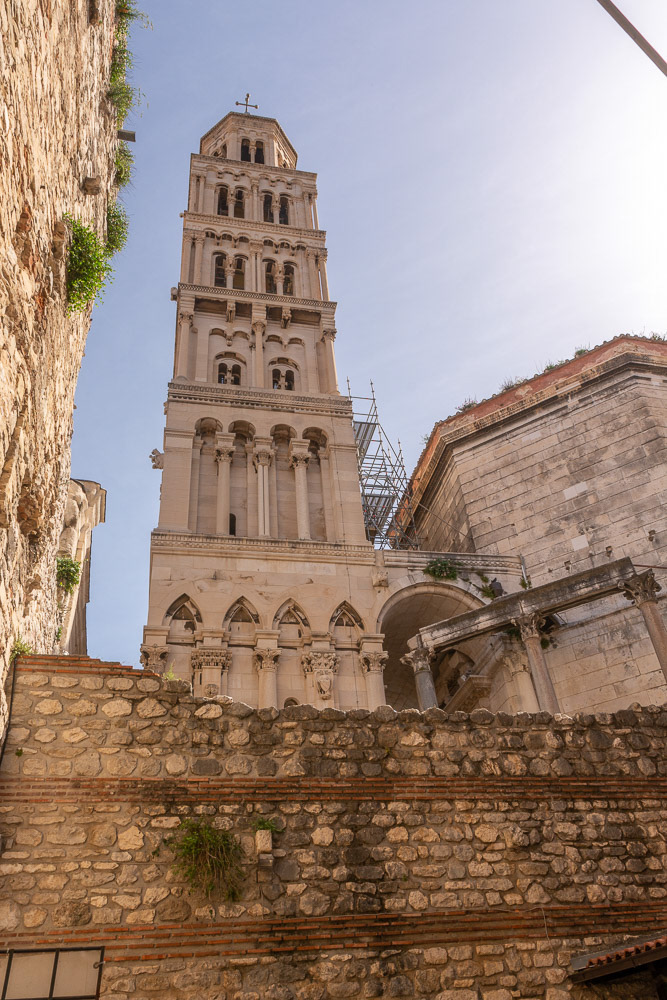
The Romanesque bell tower of the Cathedral of Saint Domnius.

Inside Diocletian's Palace columns, capitals and beams stand the test of time.
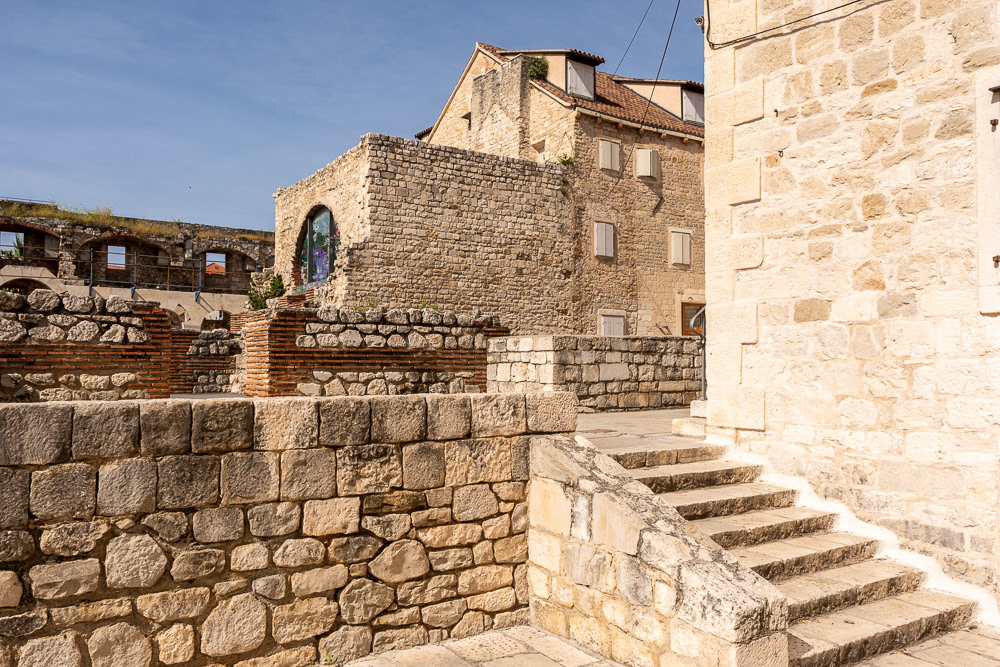
Inside Diocletian's Palace (the world's most complete remains of a Roman palace). Between the 12th and 14th centuries, there was a greater architectural development, when many medieval houses filled not only Roman buildings but also a large part of the free space of streets and docks.
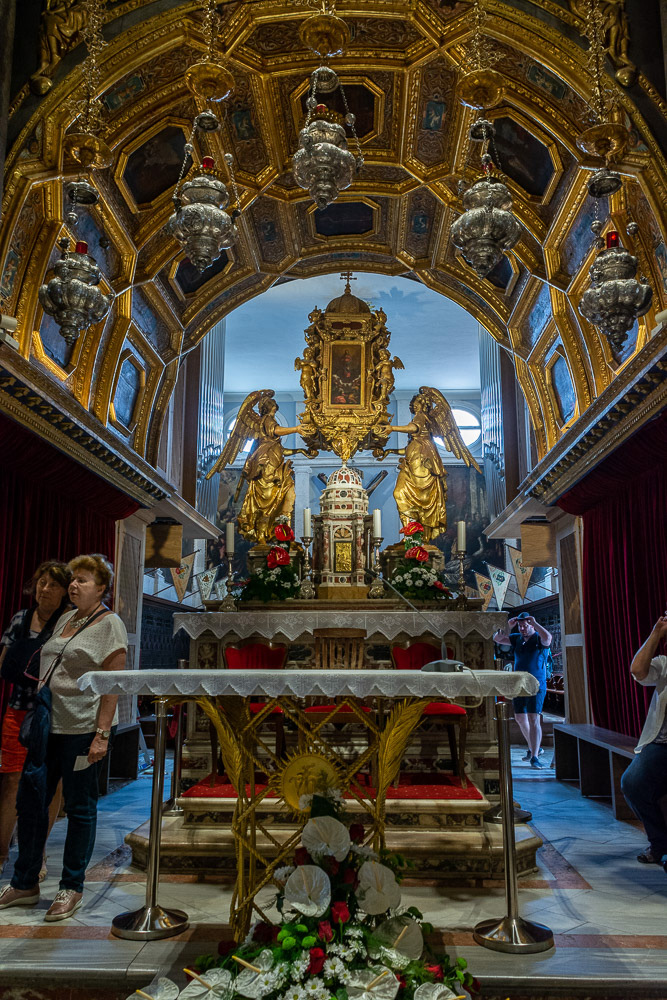
Inside the Cathederal of St Dominous.
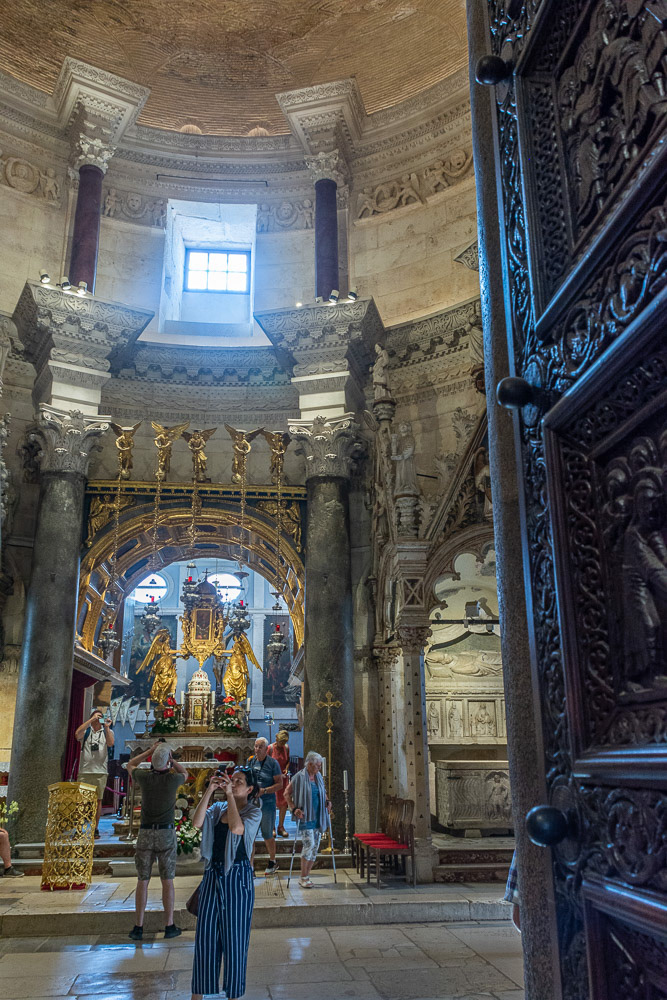
Cathederal of St Dominous.
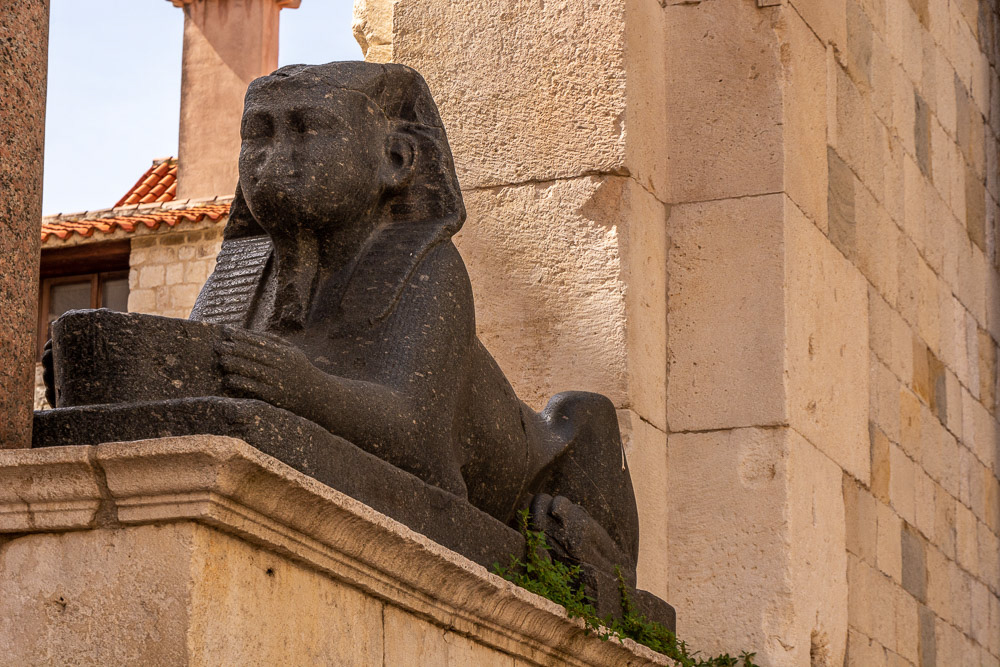
One of a pair of 3,500-year-old granite sphinxes, originating from the site of Egyptian Pharaoh Thutmose III.
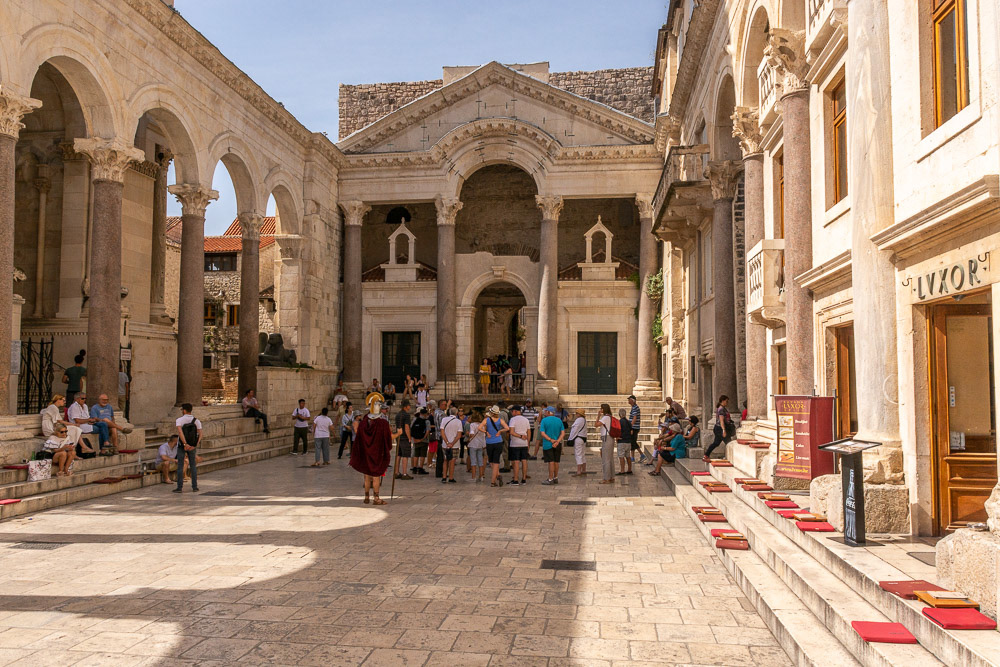
The Peristyle, this is the central square of the Palace, where the main entrance to Diocletian's quarters is located.
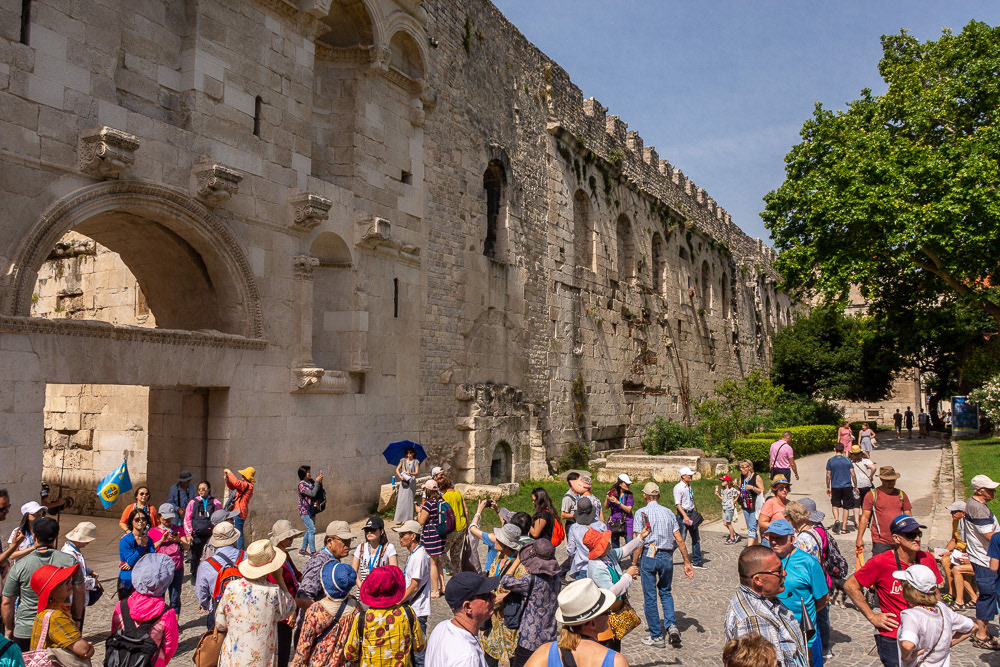
Diocletian's Palace - outside the Golden Gate looking west along the northern wall of the fortress.

Bishop Gregory of Nin outside the Golden Gate of Dicletian's Palace.
Arguably the highlight of the trip to date...…..the fortified Old Town of Dubrovnik.
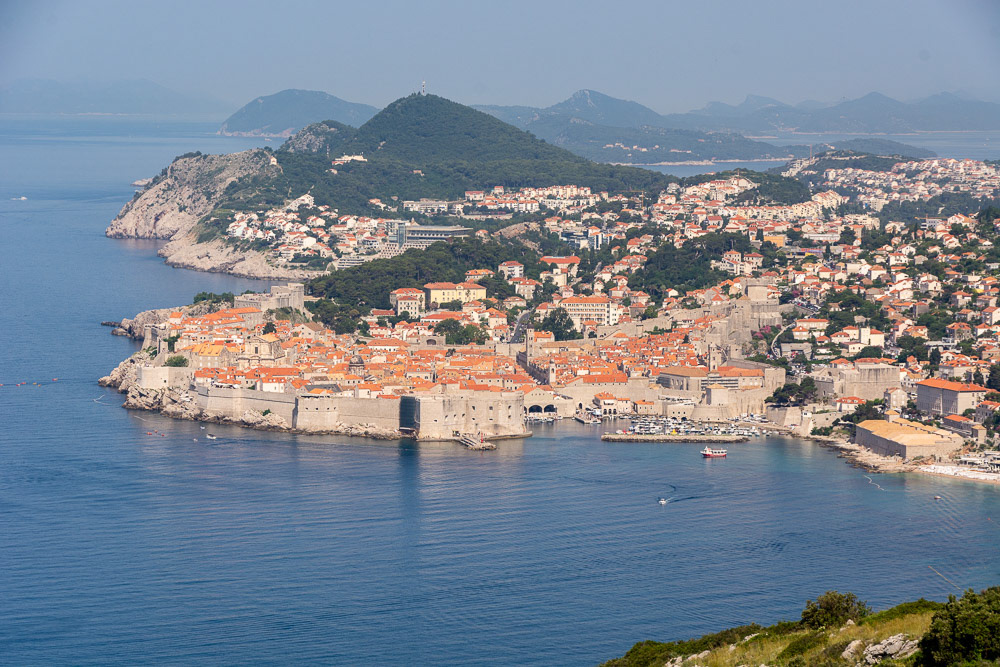
Terracotta roofs of the Old Town area are highlighted in the morning sun.
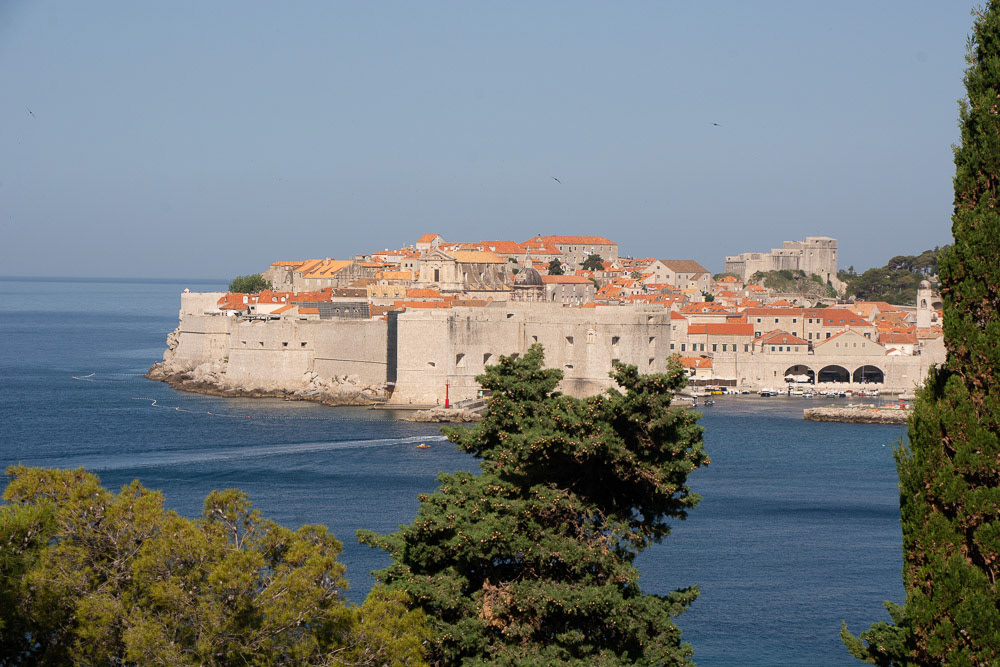
The fortified walls of the Old Town area of Dubrovnik framed by pines as we make our way along the coastal strip towards the city.

Banje Beach with the Old City walls and Old Port area in the background.
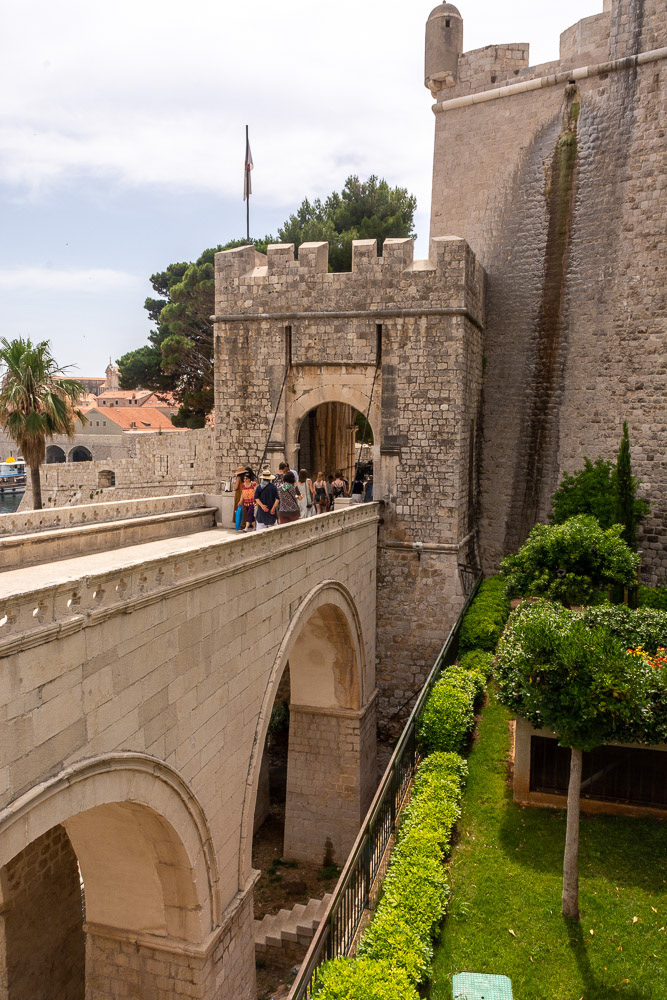
The stone bridge to Ploce Gate (Vrata od Ploca) is the outer a gate providing access from the east.
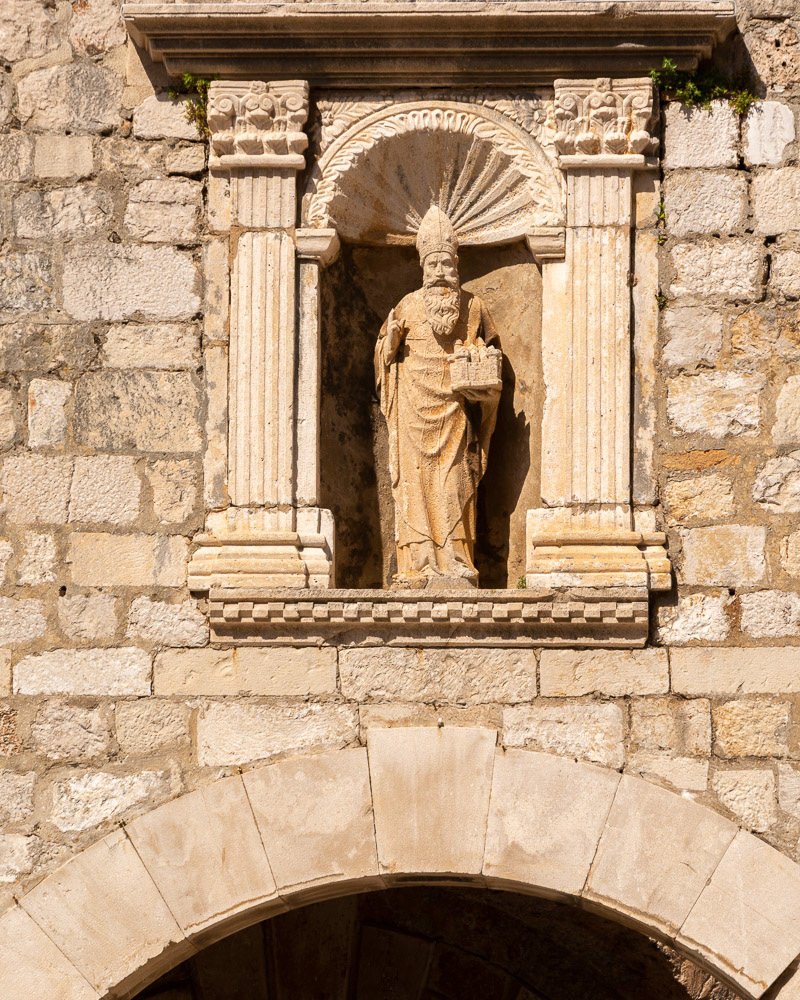
Statue of Sveti Vlaho, the patron saint of Dubrovnik above Ploce Gate.
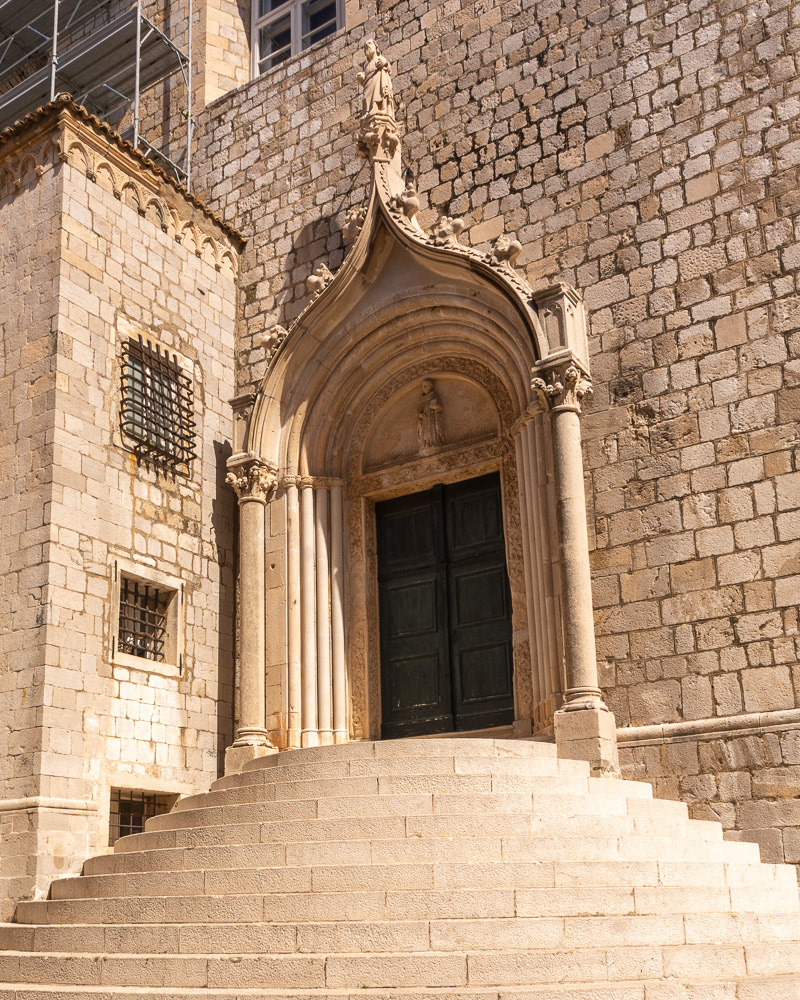
Entrance into the Dominican Monastry, now a museum.
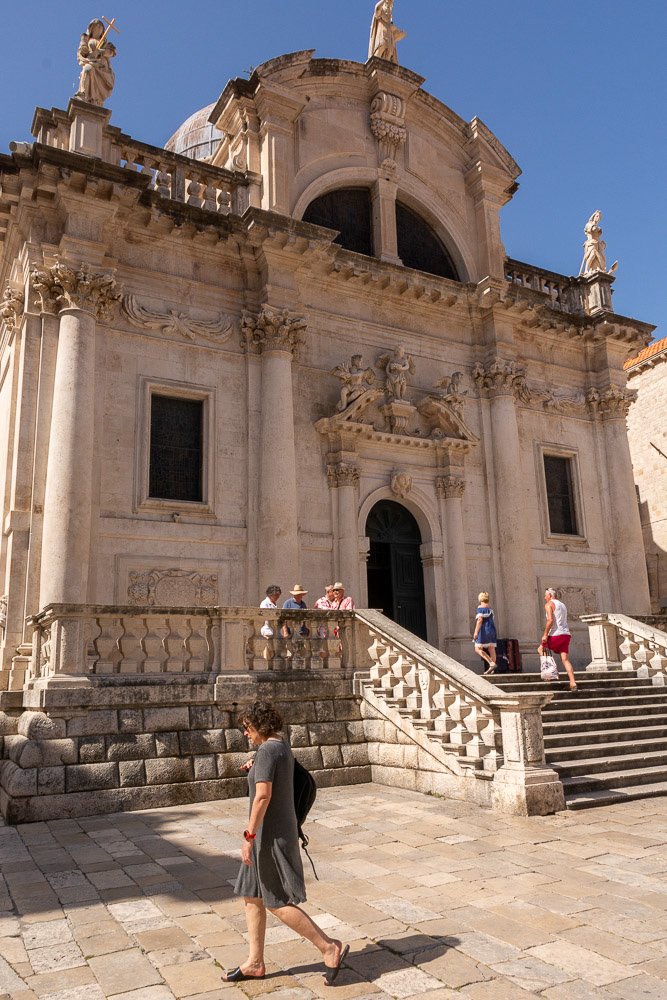
St Blaise church.
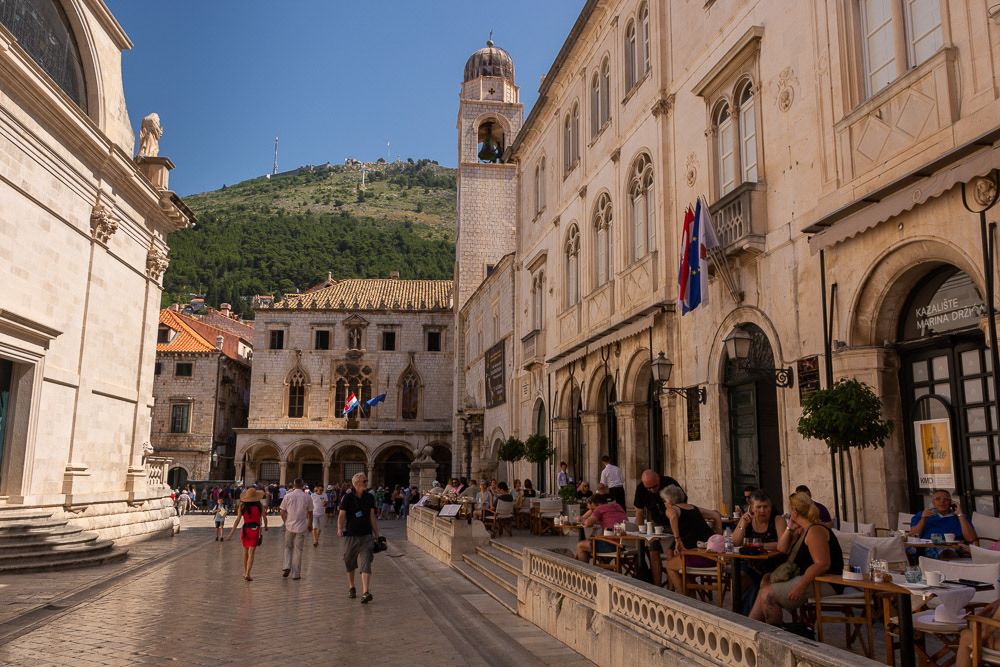
Strada of Dubrovnik - looking toward Mt Srd and the cable car station.
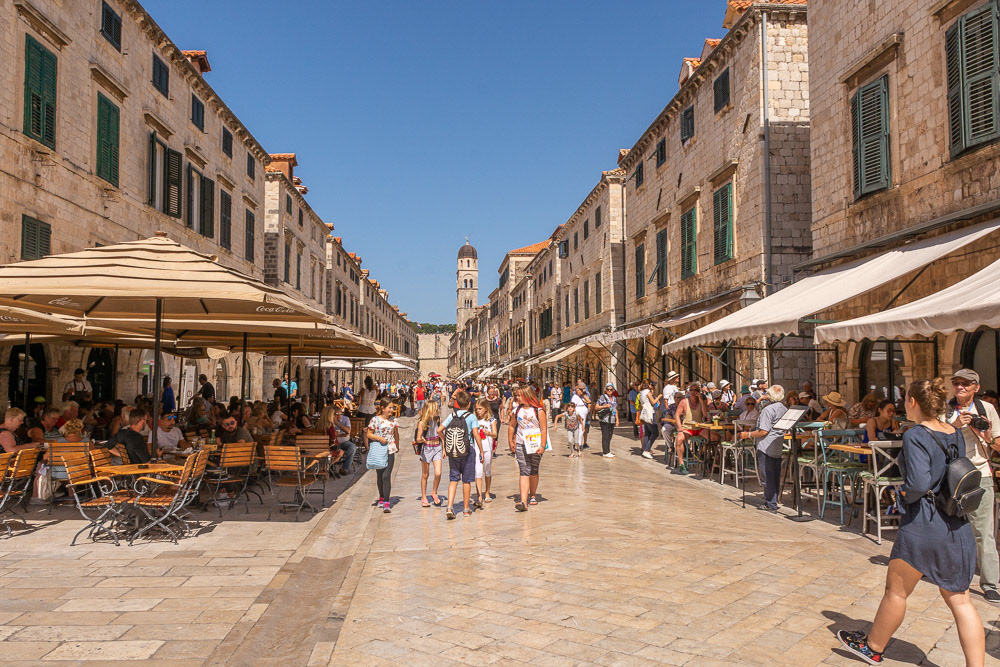
Placa Stradun - the main shopping and dining precint of the Old Town.
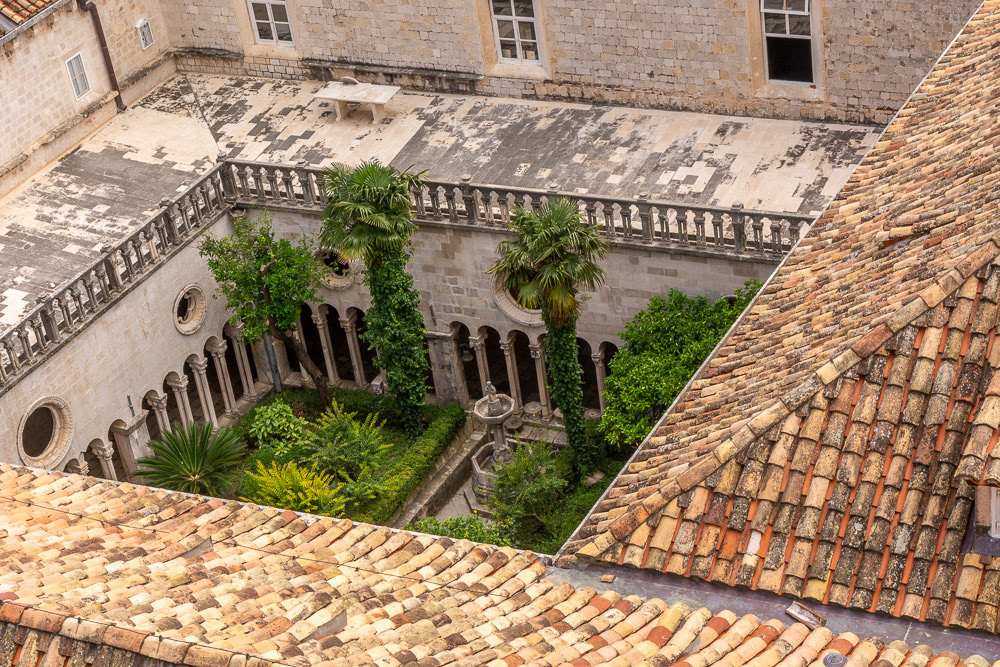
A birds eye view of the Franciscan Monastry's central courtyard and it's surrounding cloisters from the city walls.
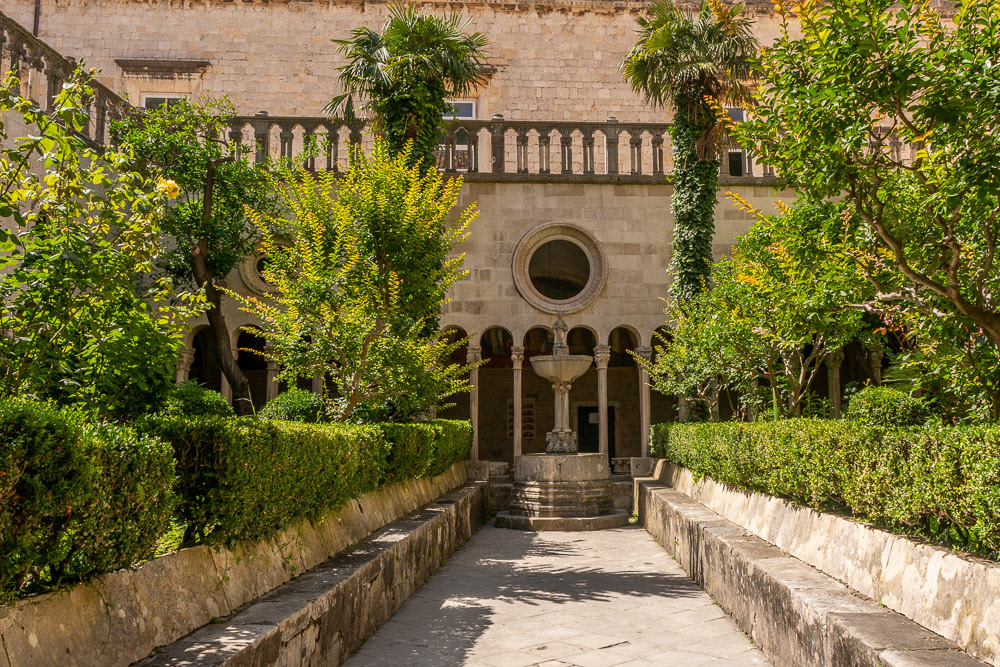
The central courtyard of the Franciscan Monastry.
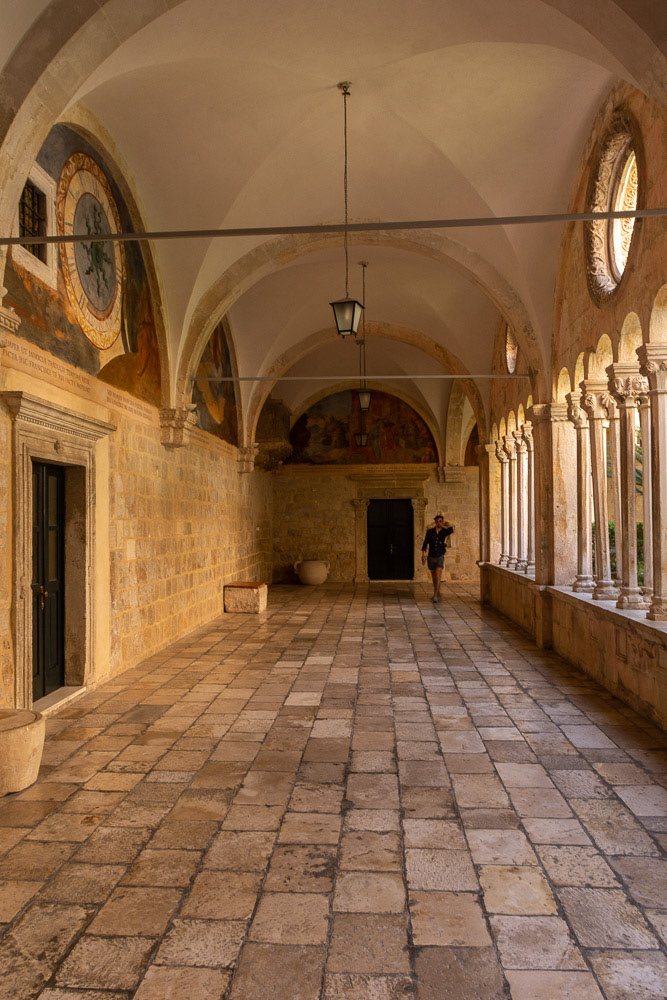
Inside the cloisters of the Franciscan Monastry.
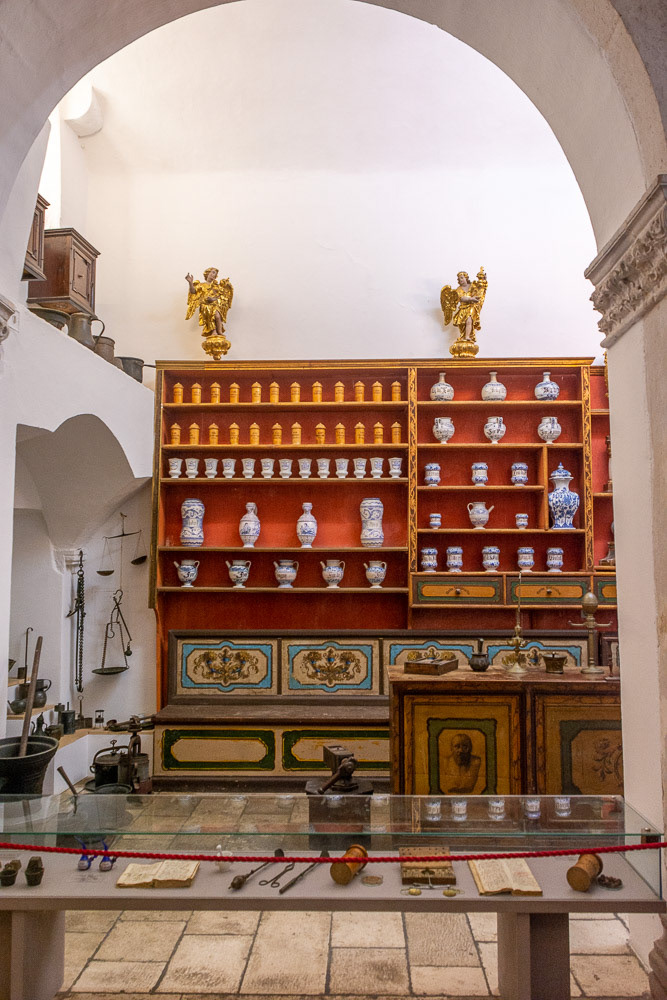
Inside the Old Pharmacy Museum - exhibits of various pharmaceutical tools, containers, grinders and similar from the times of old Ragusa are on display.
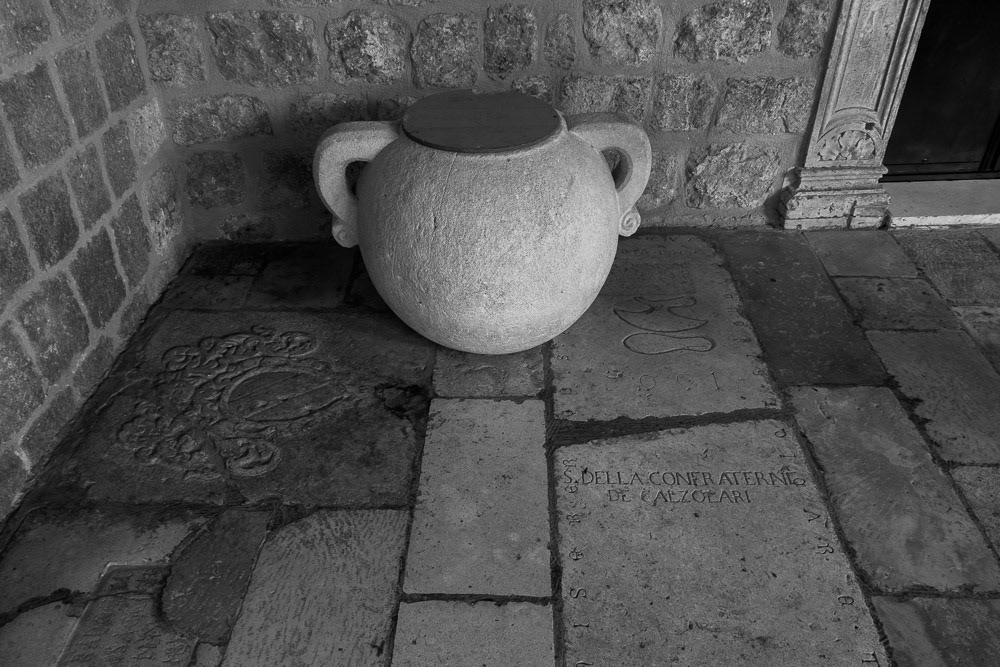
Franciscan Monastry - a medieval stone jar sits on enbossed paving slabs.
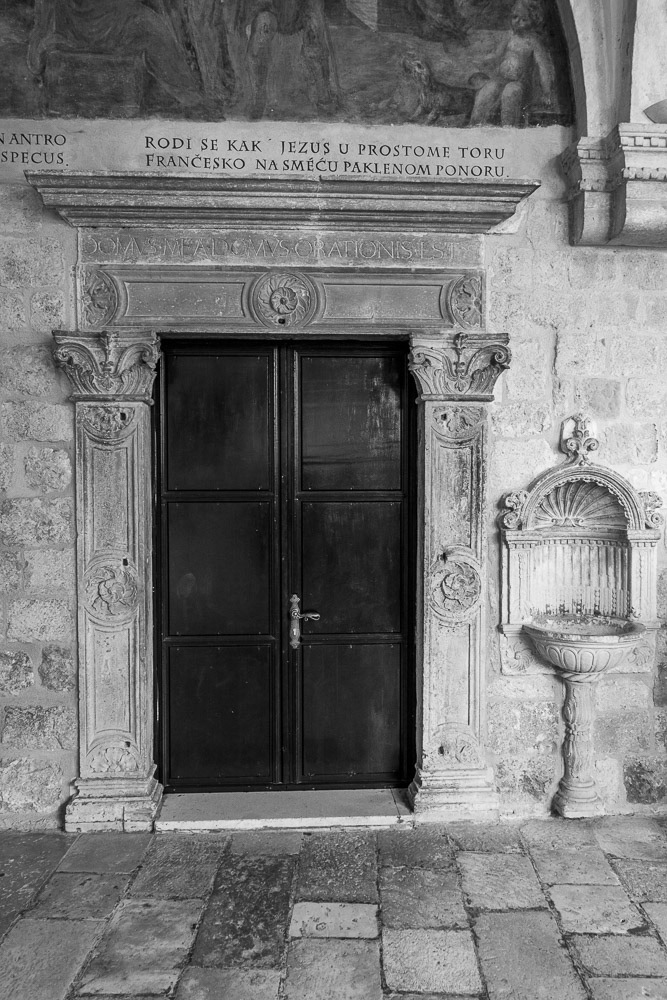
Franciscan Monastry Cloisters - drinking fountain beside panelled doors.
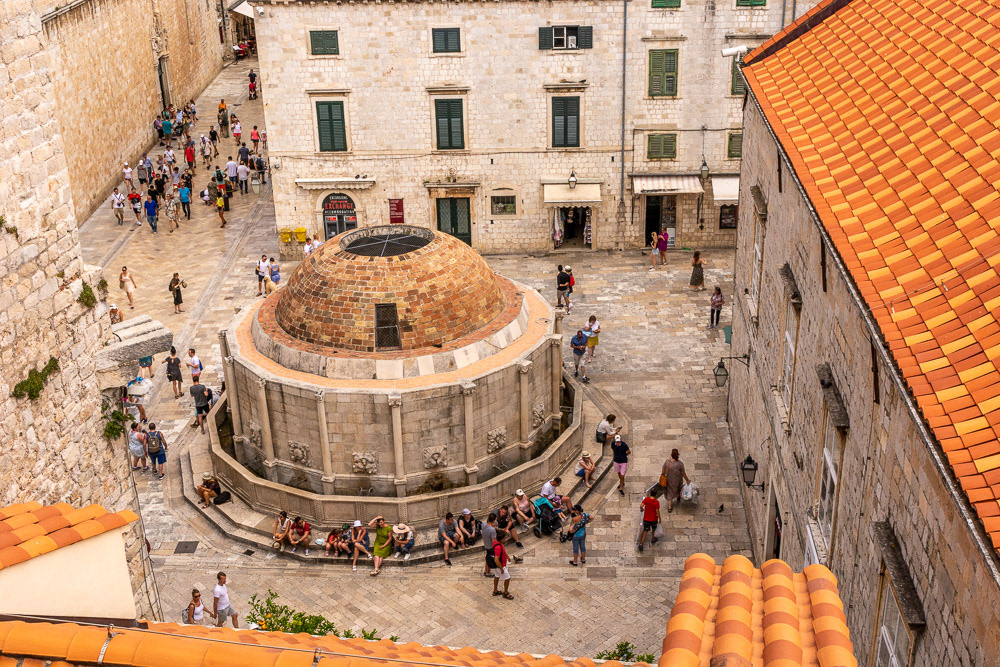
Onofrio fountain viewed from above the Pile Gate. Built 1435 to 1442, he also designed and constructed a 12 km long water supply system that brought water from the Knežica spring, Šumet River. Still in use and a popular resting place for weary legs.
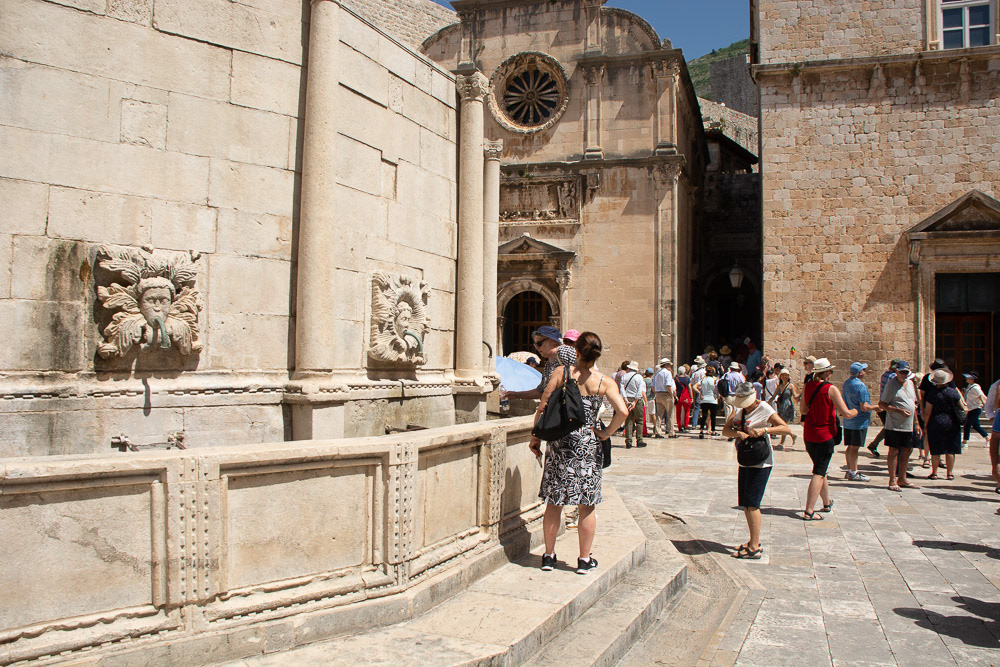
Onofrio fountain with the Franciscan Monastry and St Saviour church behind.
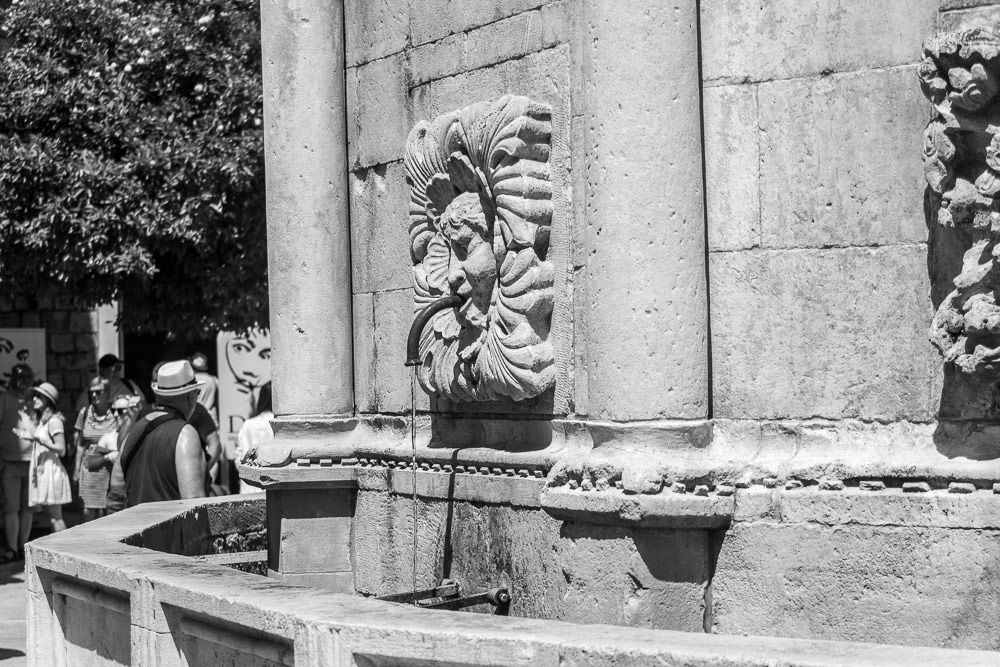
Onofrio fountain - still drinkable today. Designed in 1438, water pours out from 16 spouts.

A tourist boat enters the Old Town Harbour past the fort walls.
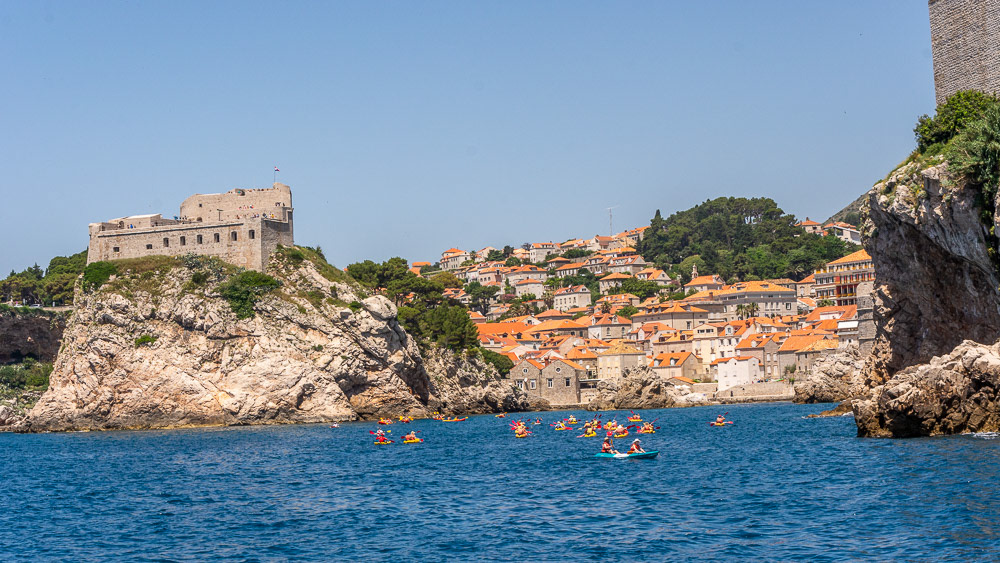
Kayaks in Kolorina Bay, Fort Lovnienac on the left.
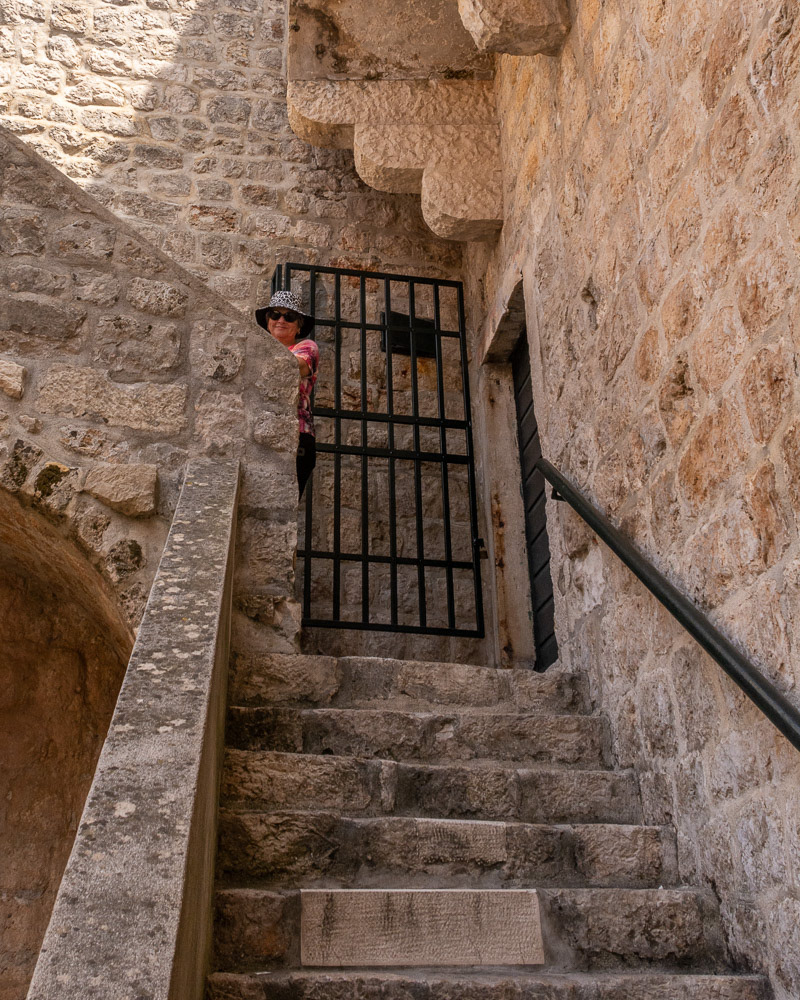
Stairs near the Ploce Gate provide access to the ramparts.
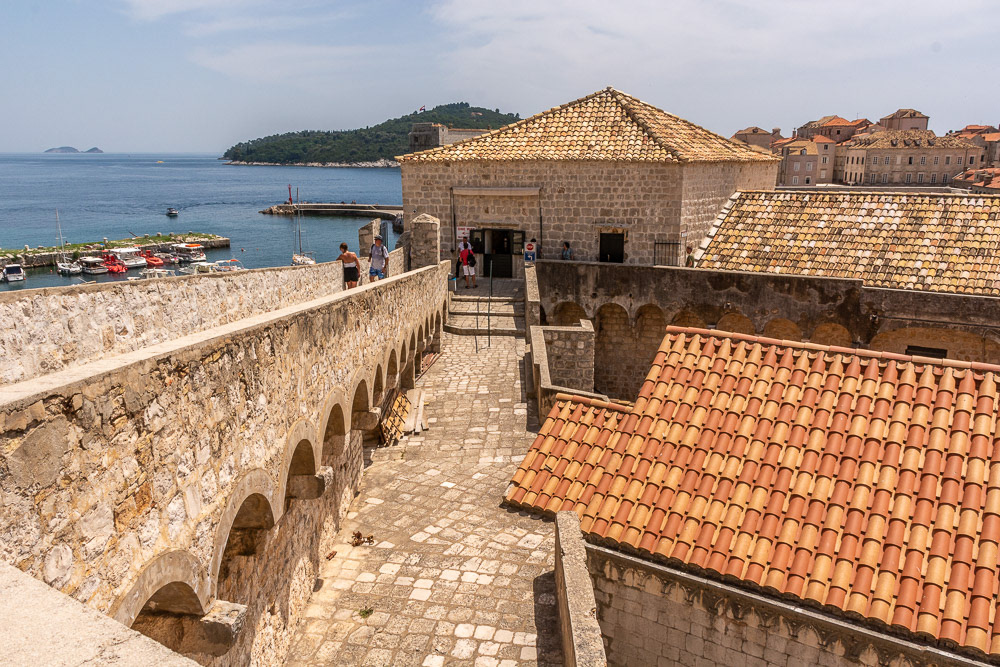
The ramparts of the Old Town afford spectaclur views over the old town and the surrounding area.
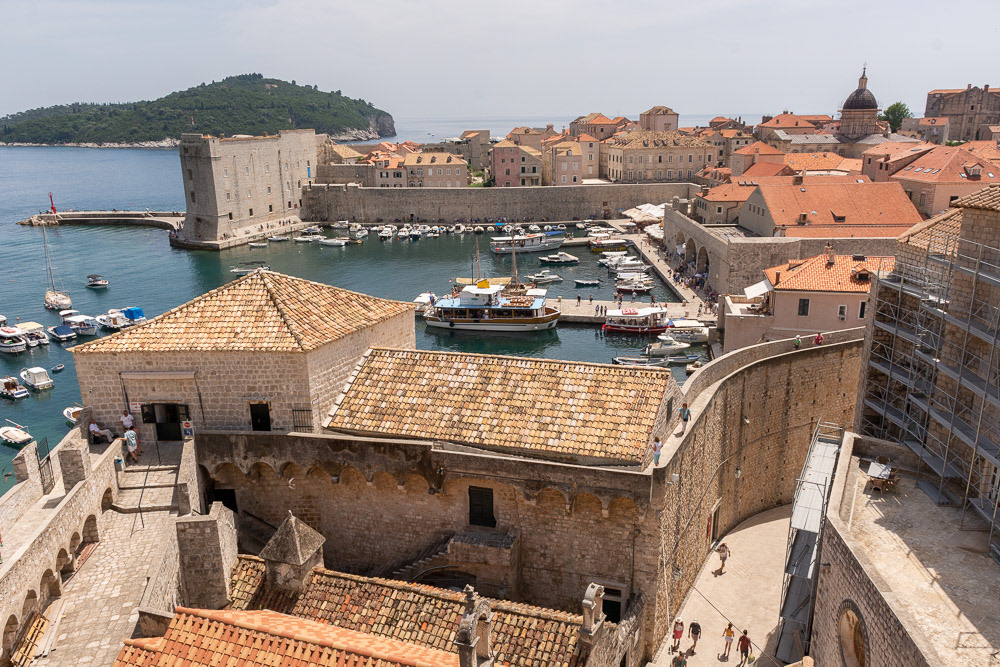
The old Port viewed from the ramparts above Ploce Gate. In the background is Locrum Island.
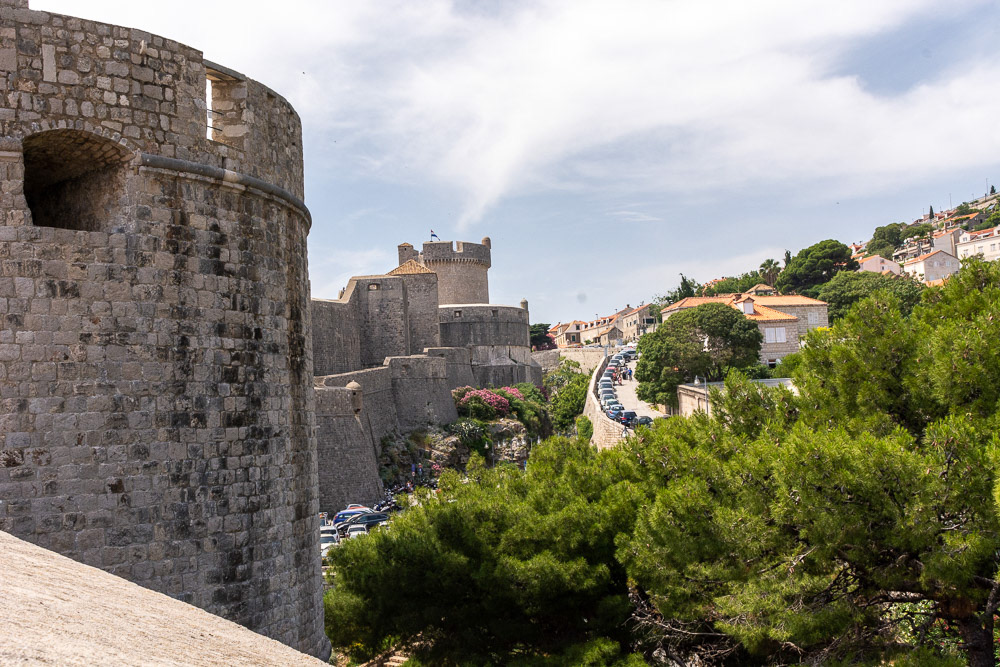
Ulica iza Grada (the street behind the city) adjacent the Old Town ramparts with Minceta Tower in the background.
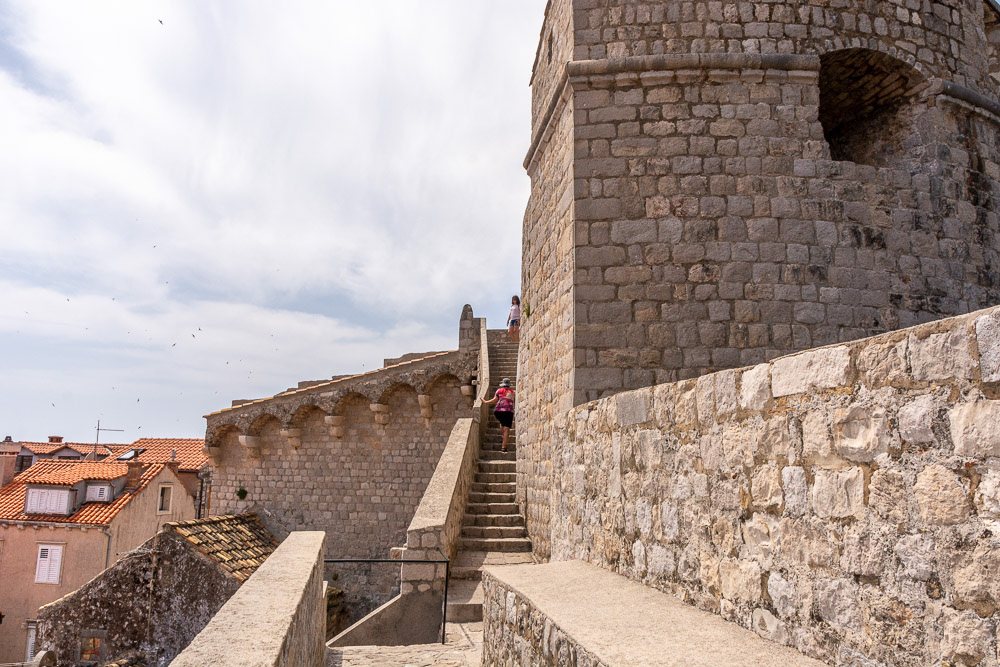
Climbing one of many flights of stairs along the wall.
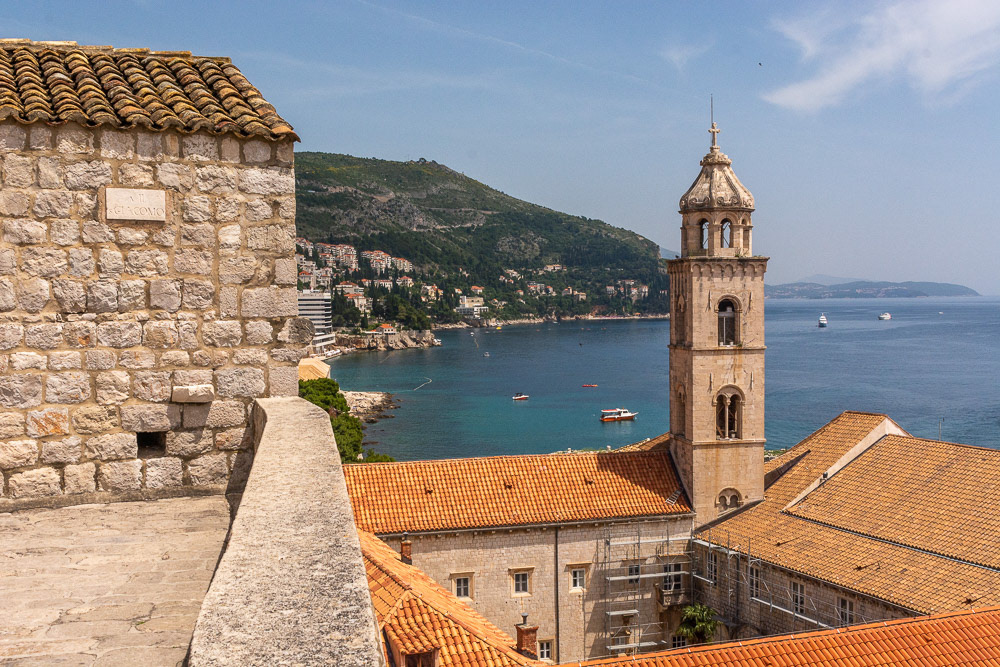
Looking along the Adraitic coast over Banje beach from the fortified walls.
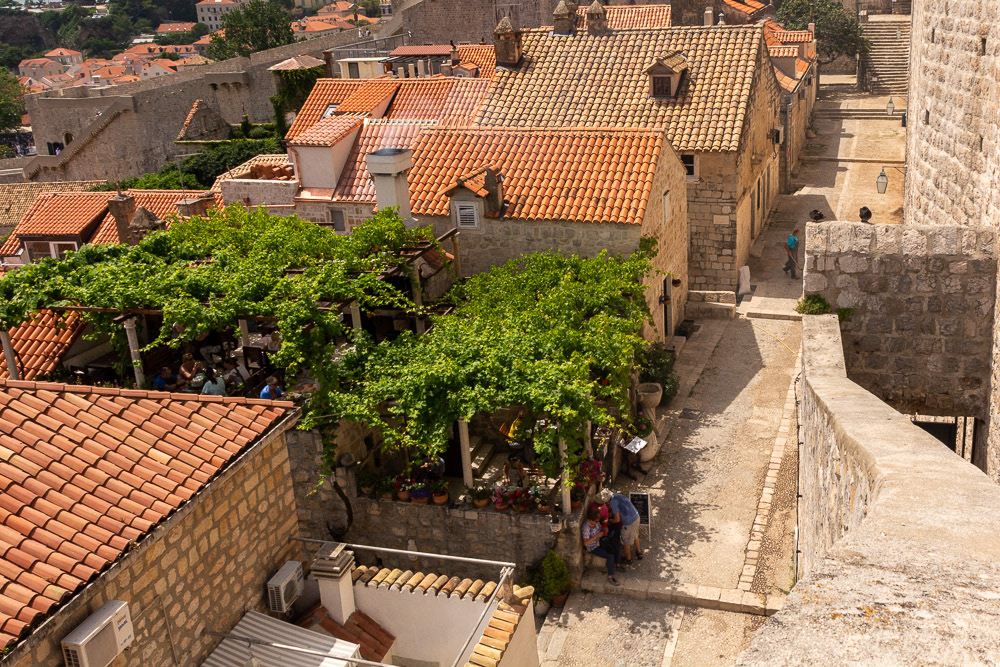
Grape vine covered pagolas provide a shady haven in the Old Town area consisting entirely of stone buildings and pavement.
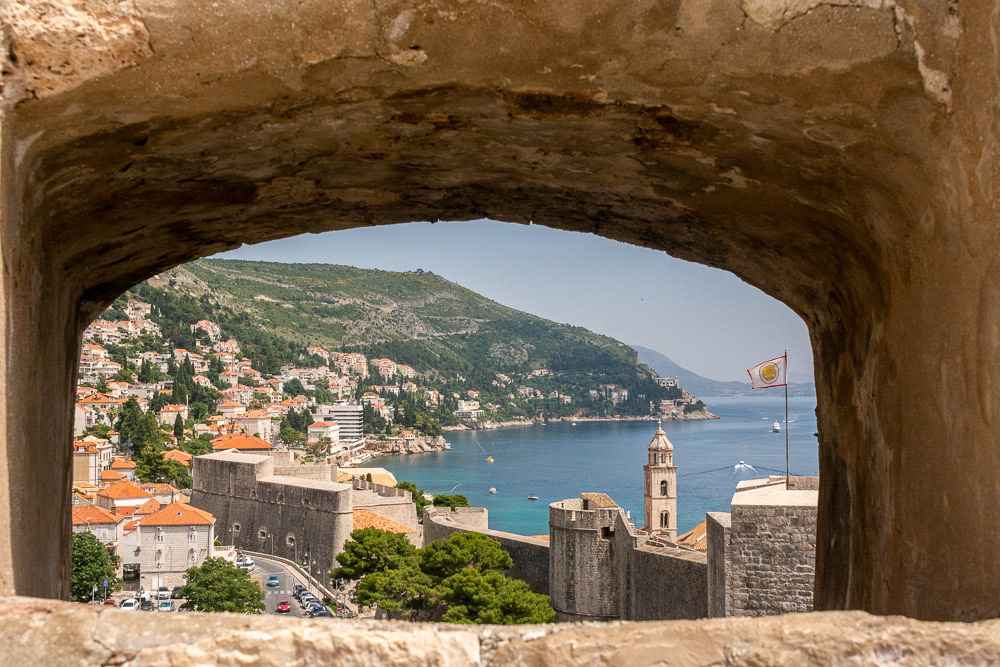
Rampart windows provide a birds eye view along the fortified walls and the Adriatic coastline.
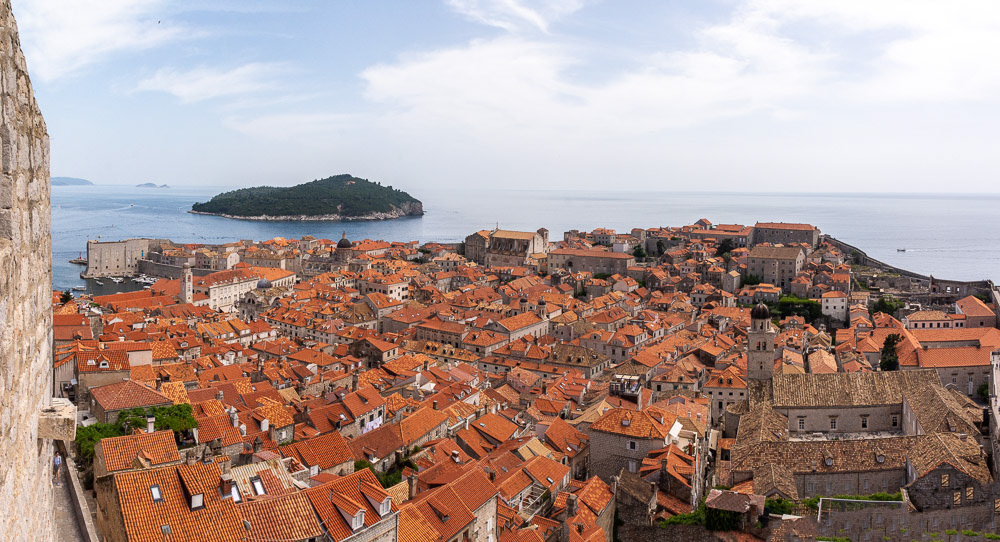
Terracotta roofs of Old Dubrovnik. Colour tells a story of of the extent of destruction during the Bosnian conflict.
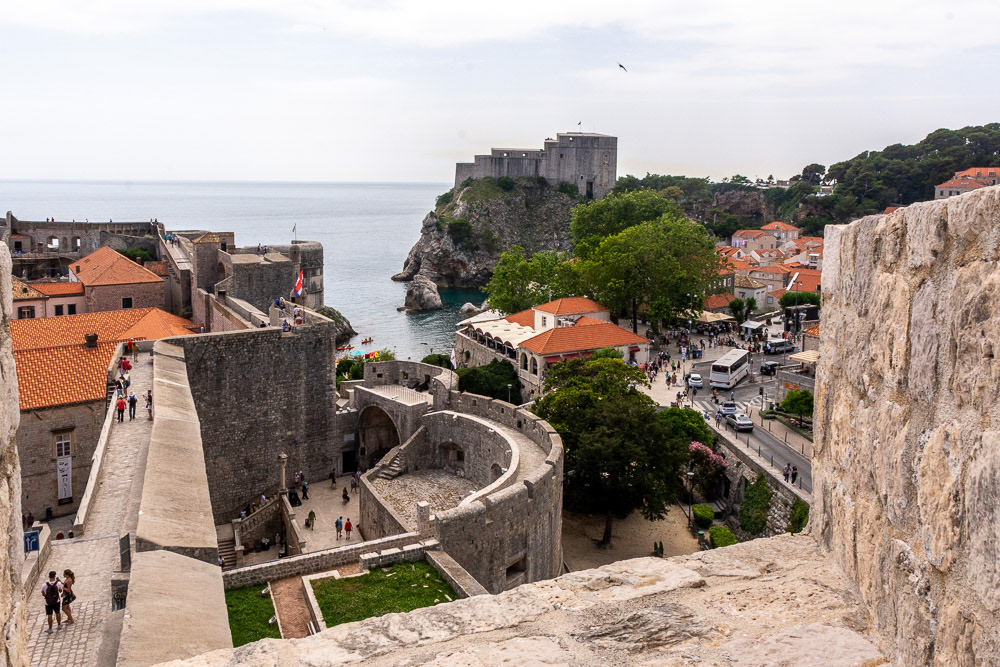
Looking over the Pile Gate to Fort Lovrijenac from the Minceta fortress walls.
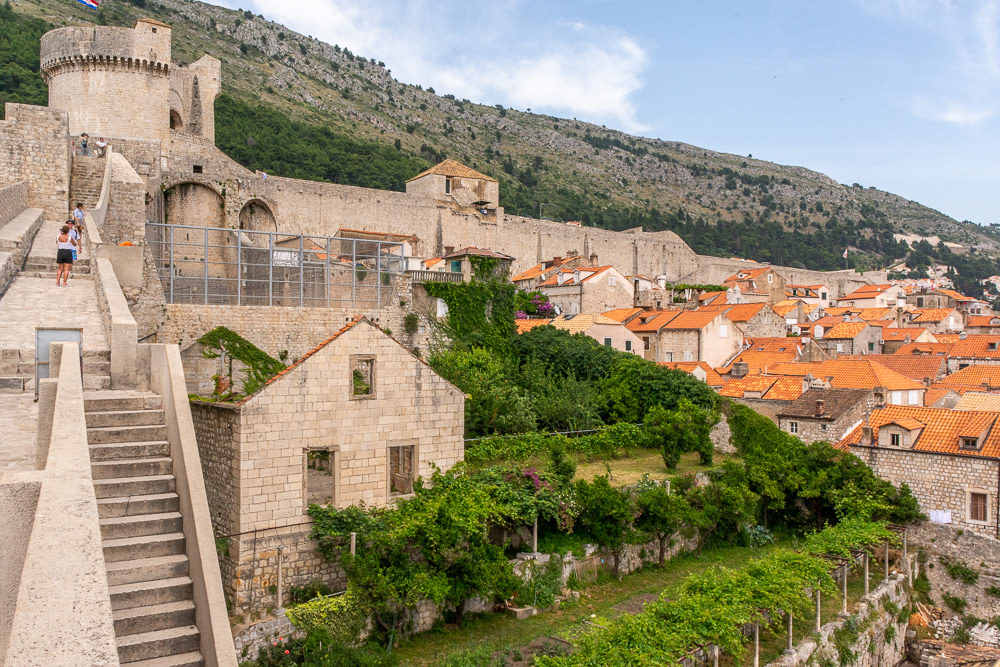
Green space inside the old city walls below Minceta Tower.
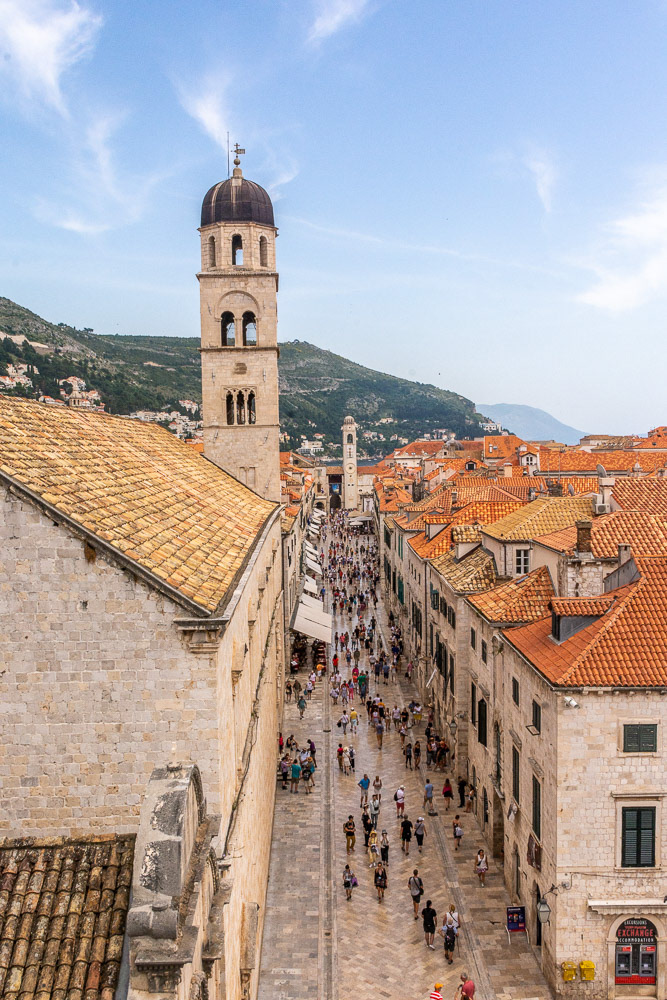
Stradun, Dubrovnik's main street viewed from above the Pile Gate.
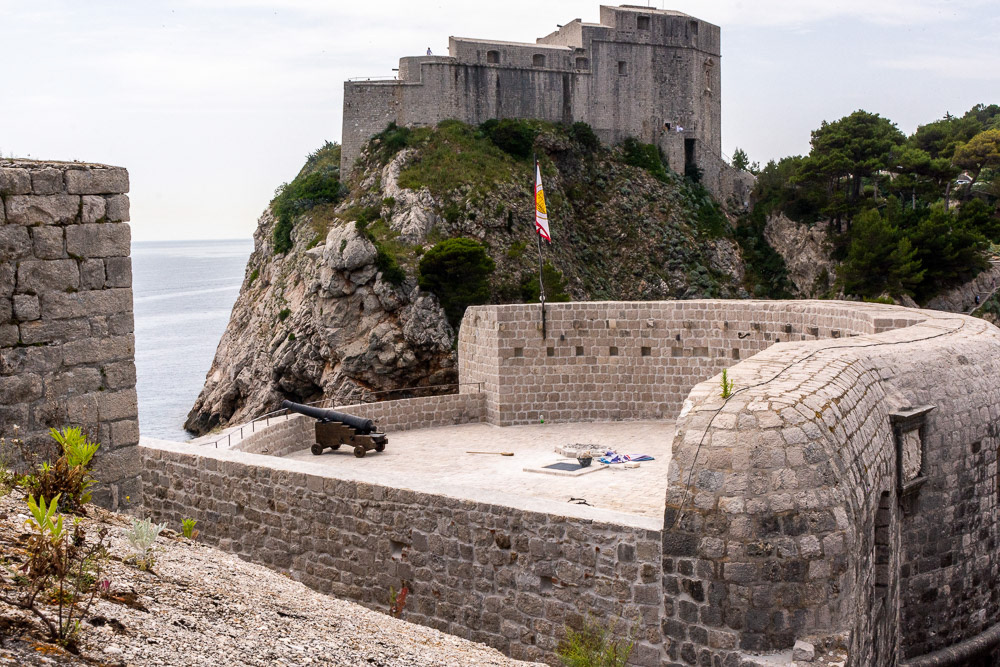
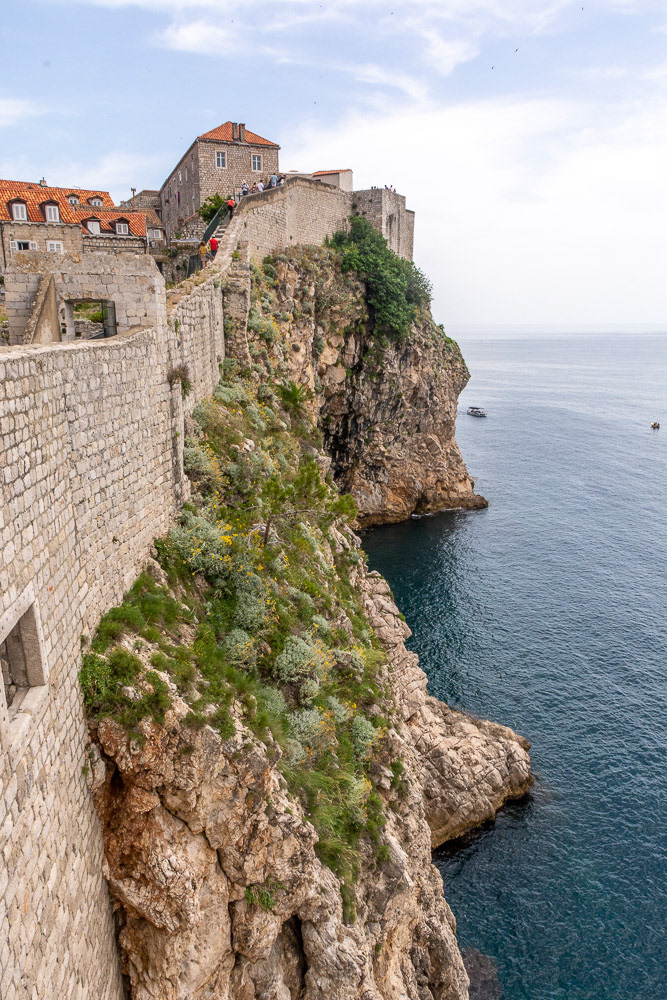
Stone walls rising high above rocky cliffs provide an inpenetrable defence from the sea.
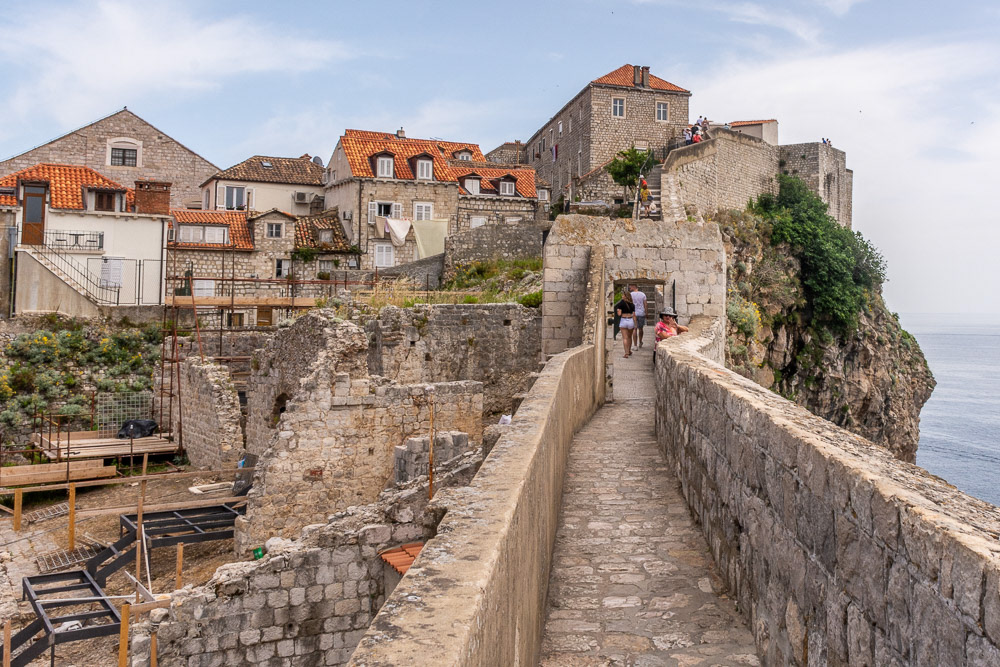
One of the section gates along ramparts.

Bar with a view - the perfect place for sundowners overlooking the Adriatic.

.....or if you prefer you can make your way down for drinks and a dip in the sea.
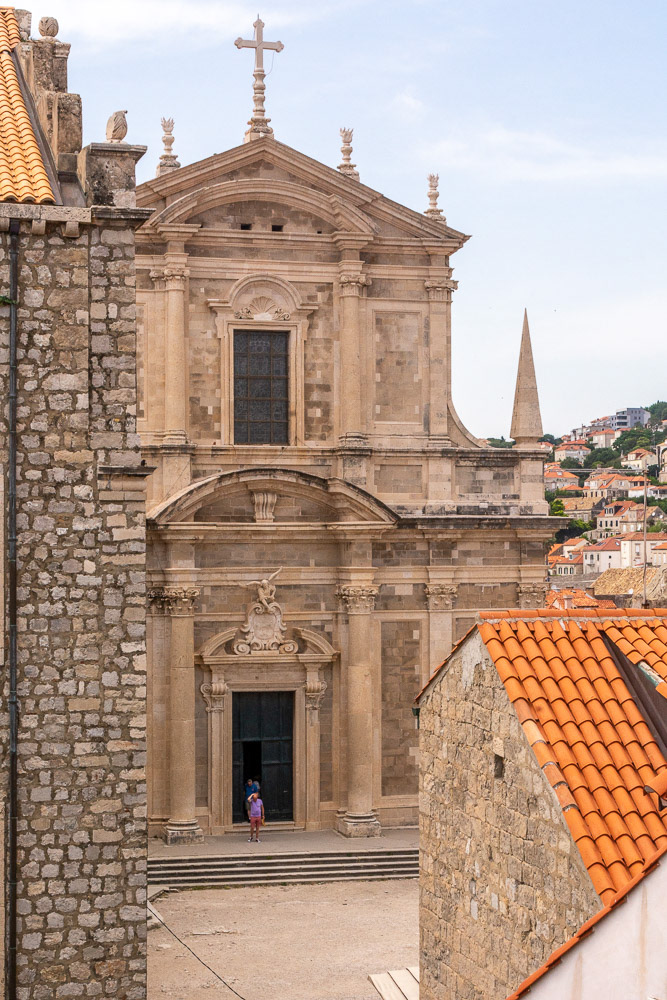
St Ignatius church at the top of a broad flight of stairs, this Jesuit church was built in the baroque style between 1699 and 1725.
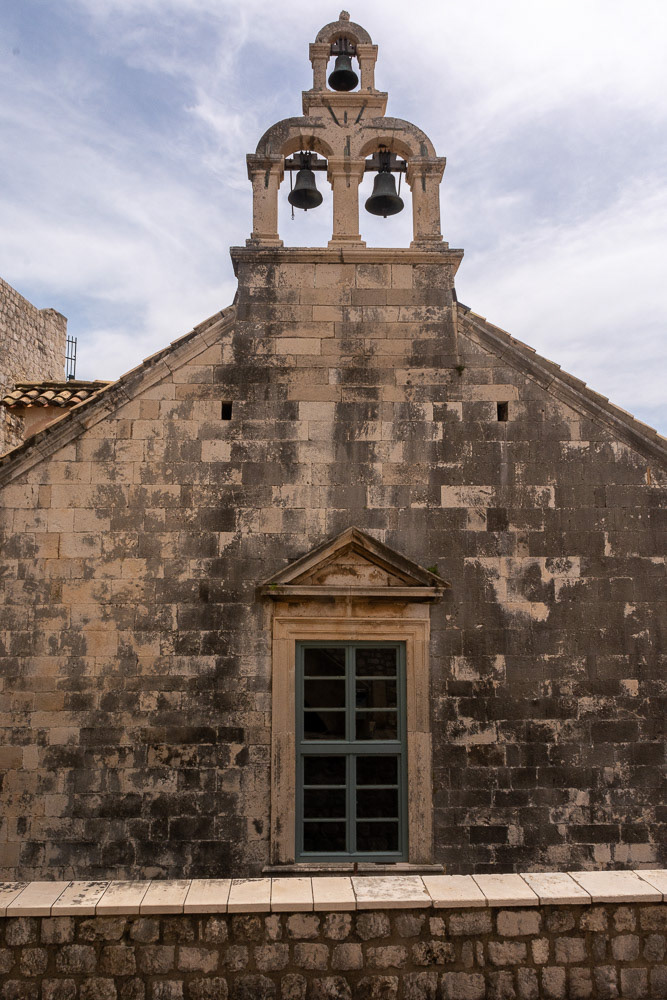
The Church of Our Lady of Mt Carmel in the Old Town Dubrovnik.

Looking over the Old Port with Ploce Vrata's stone bridge in the background.
A day trip to the Konavle region, called the "Golden Valley'of Dubrovnik. This southernmost region of Croatia extends from Cavtat to the Montenegro border in the south, while in the north borders it with Bosnia and Herzegovina.

Konavle - A local hostess prepares local produce for sampling, three flavours of Grappa - Walnut, Cherry or just plain firewater!
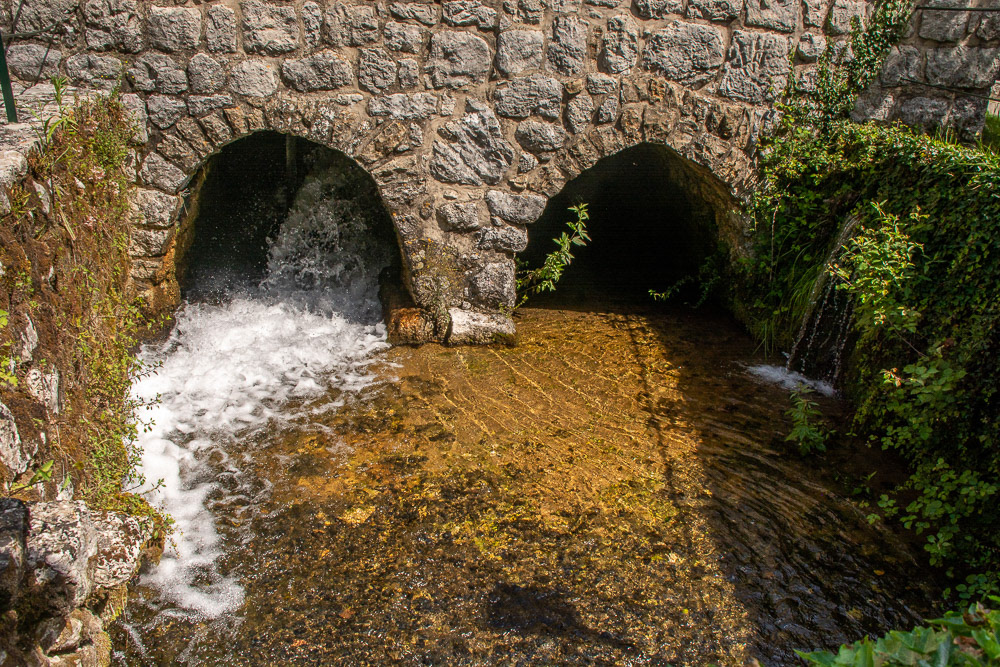
Konavle - water from the river Ljuta channelled through a series of canals and aquaducts to service mills for grinding and weaving have been in use since the 1400's.

Water from the river Ljuta channelled through a series of canals and aquaducts to service mills for grinding and weaving have been in use since the 1400's.

Pthway through the forest leading to the Textile Mill.
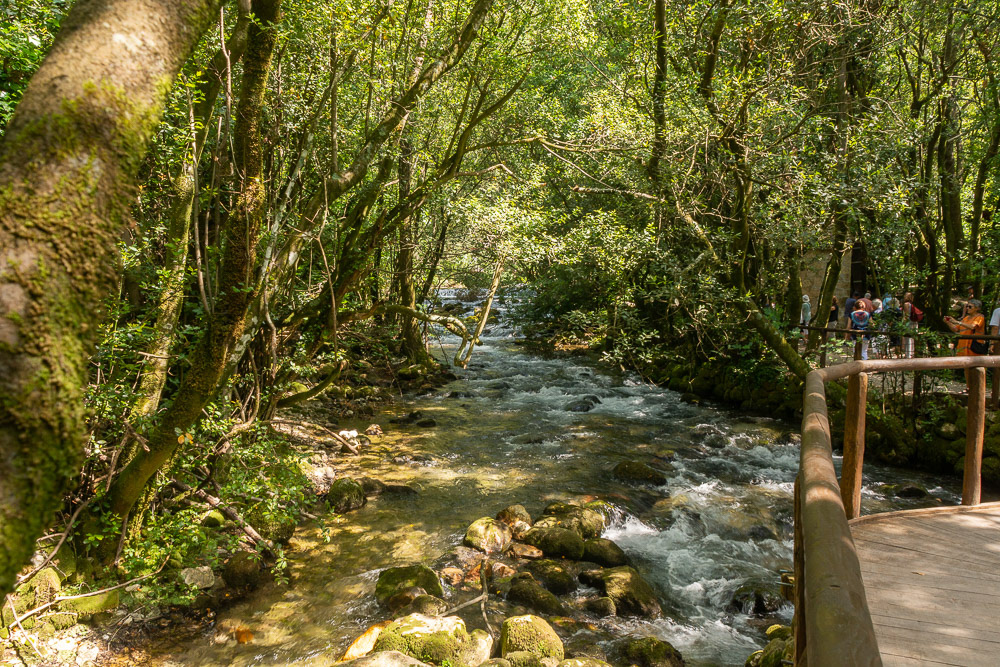
Water from the river Ljuta tumbles over moss covered rocks.

Water channelled through a timber chute from an aquaduct above powers the rater wheel for the mill.
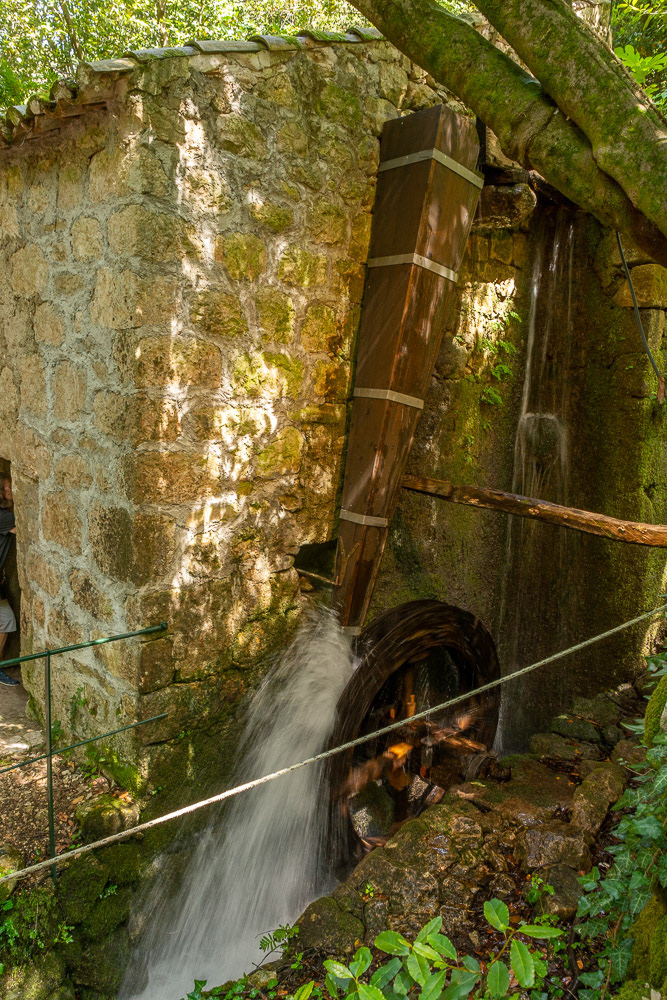
A side view of the chute and water wheel powering the mill inside the stone building.

One of the many aquaducts in the area - this one feeding the textile mill.

The owner demonstrates the operation of the ancient water-powered flour mill still in operation today.

A huge wooden mallet compresses the woven fibres to produce a heavy water proof textile fabric.
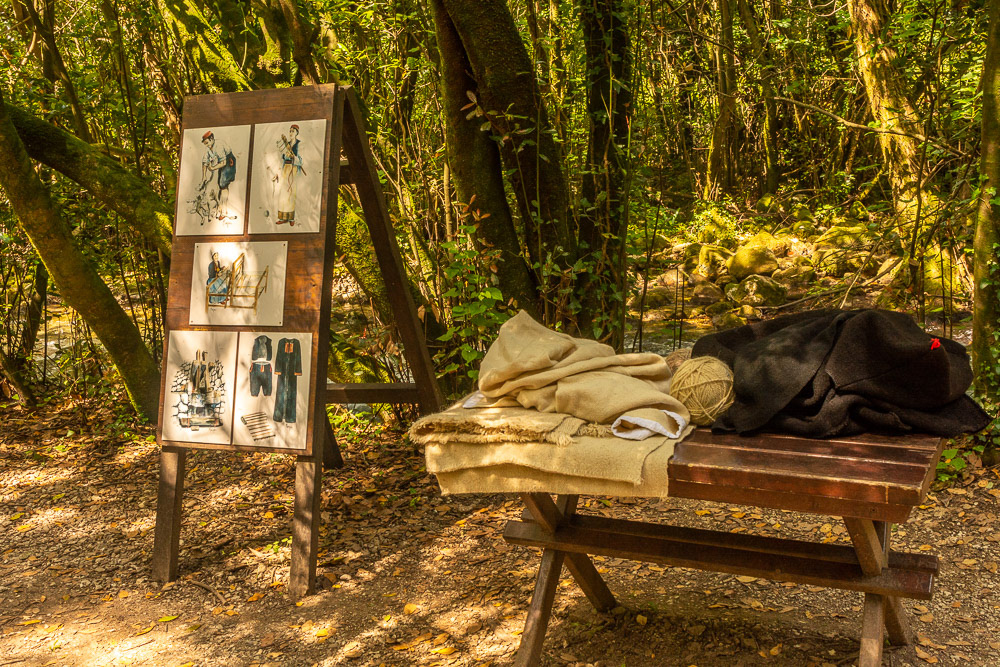
Types of material produced and examples of clothing produced - the dark fabric is dense for use in waterproof garments.
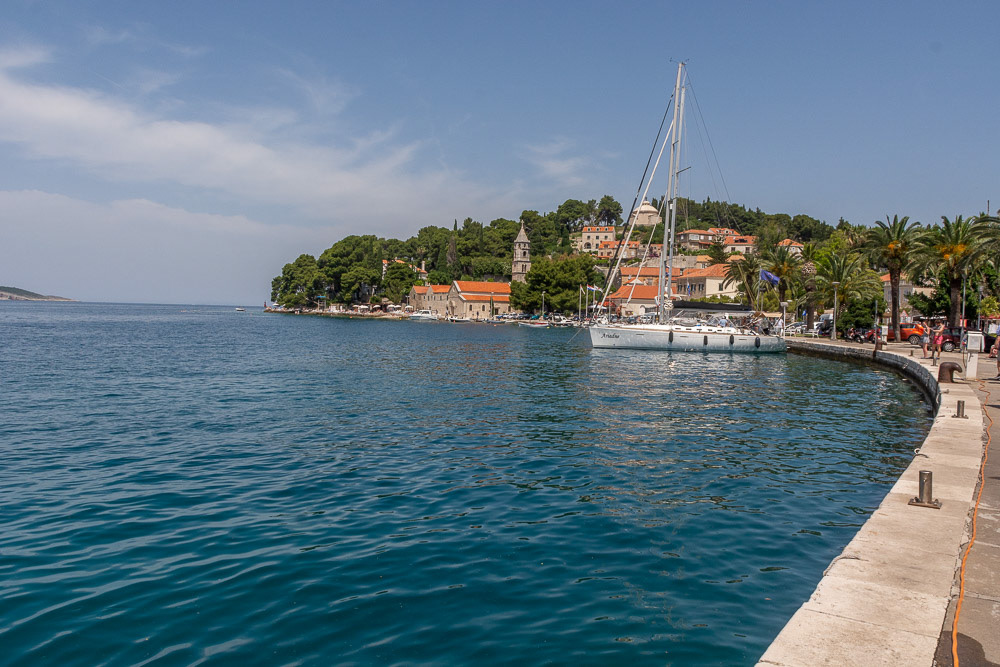
Cavtat has a beautiful deepwater harbour frequented by luxury yachts.
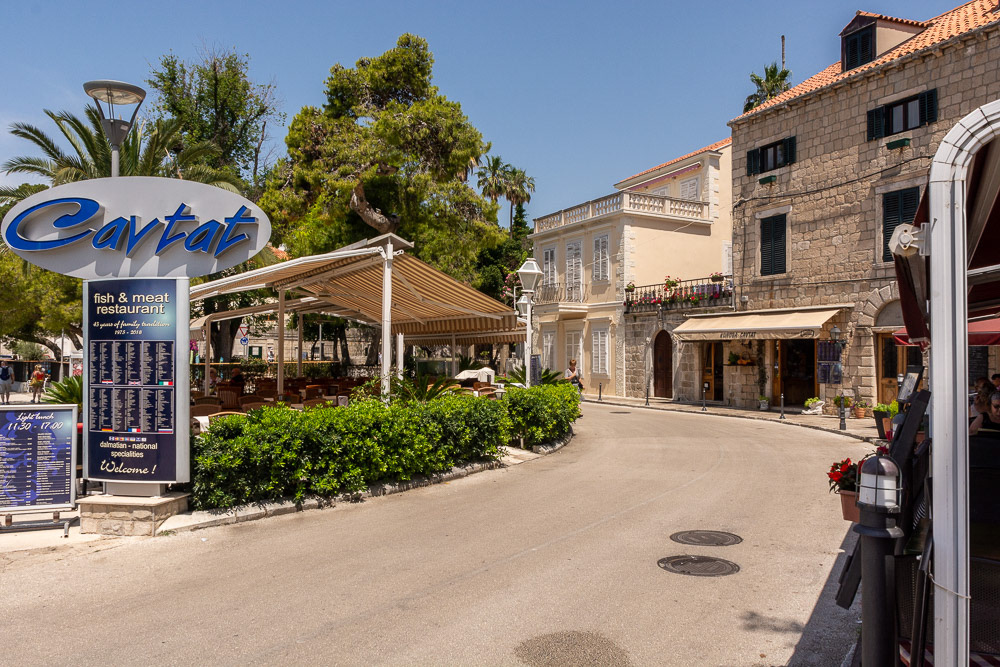
Located 15km south of Dubrovnik, Cavtat is a popular tourist destination.
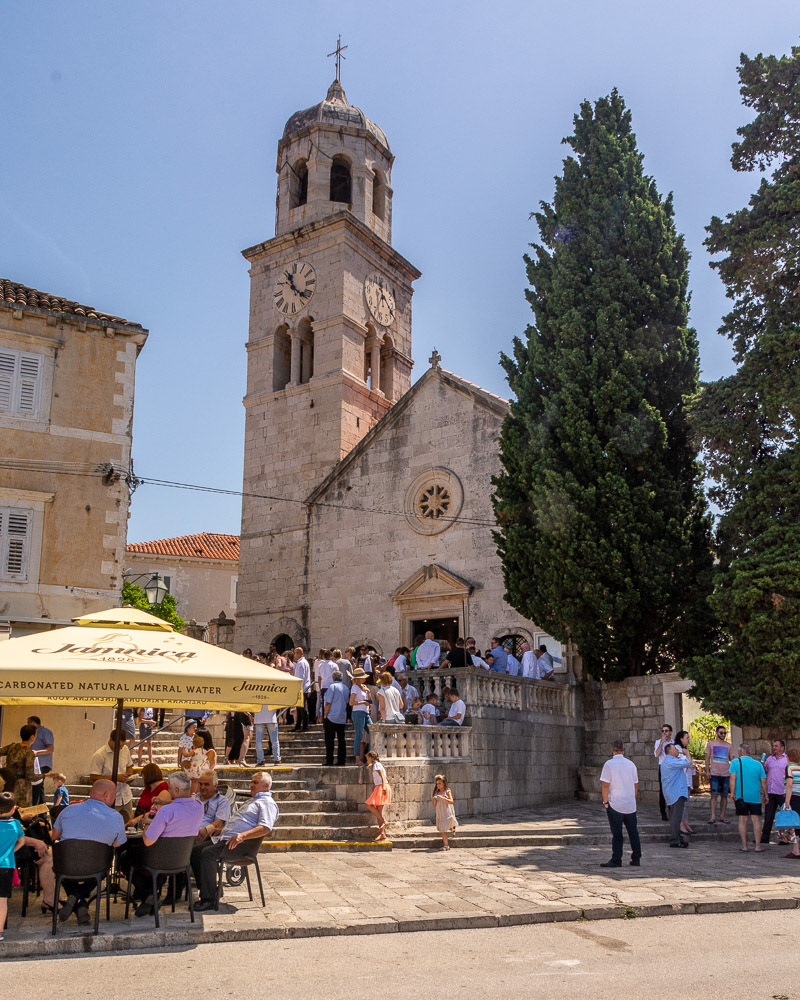
Cavtat - Locals gather outside a church in the old town.
We bid the Dalmatia coast farewell and head inland to Plitvice National Park one of the oldest and largest in Croatia. The park was founded in 1949 and is in the mountainous kast area of central Croatia at the border of Bosnia and Herzegovina.
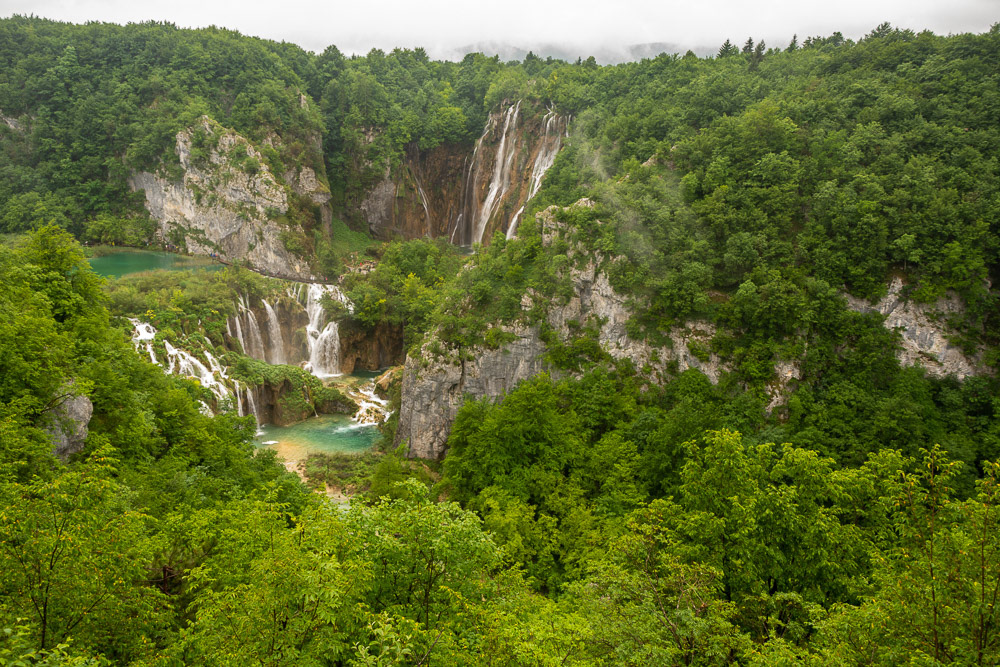
Our first glimse of Plitvice Lakes and even on an overcast and rainy day the view is spectacular.

Lake colours vary ranging from azure to green, grey or blue. The colors change constantly depending on the quantity of minerals or organisms in the water and the angle of sunlight.
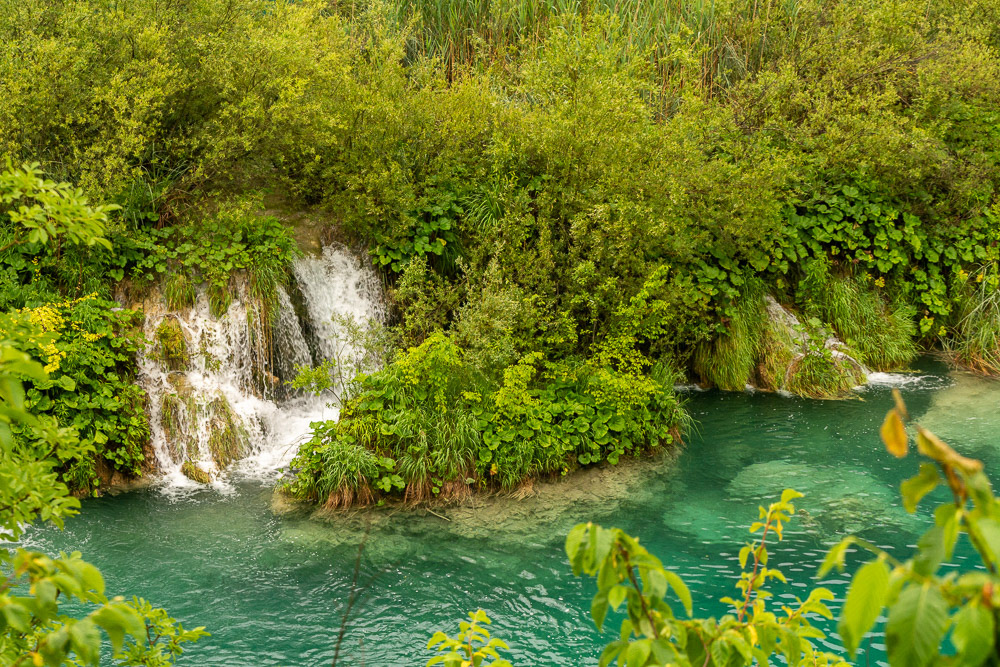
The travertine barriers divide the shallow lakes. They are the result of an interplay between water, air and plants. The travertine barriers grow at the rate of about 1 cm (0.4 in) per year.
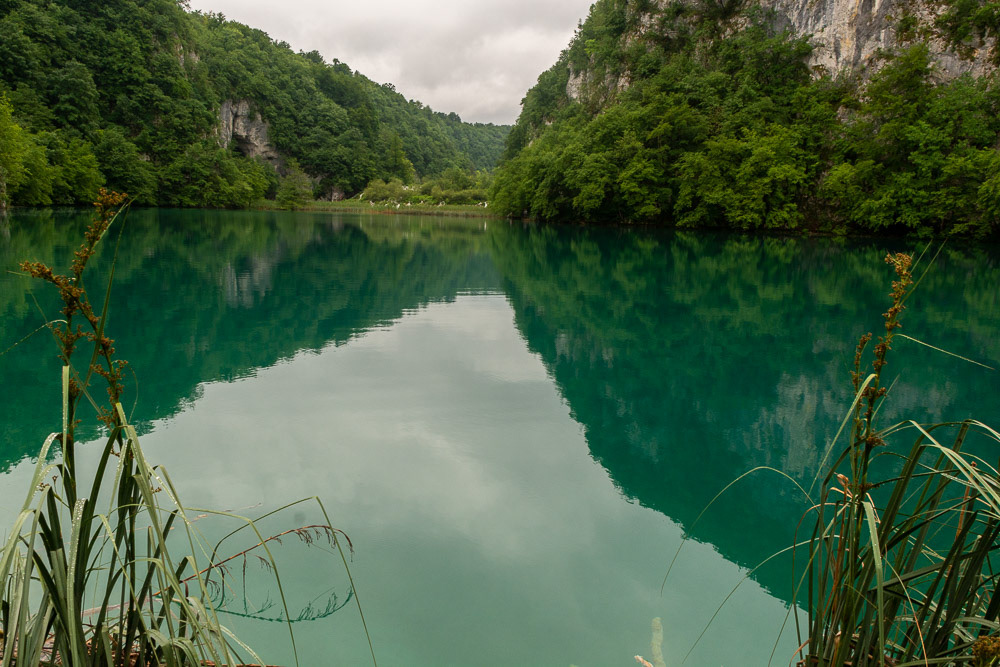
Reflections of the lower canyon walls in the still emerald green water.

One of the large waterfalls at the lower end of the lakes. Heavy overnight rainfall has ensured a spectacular water flow today.
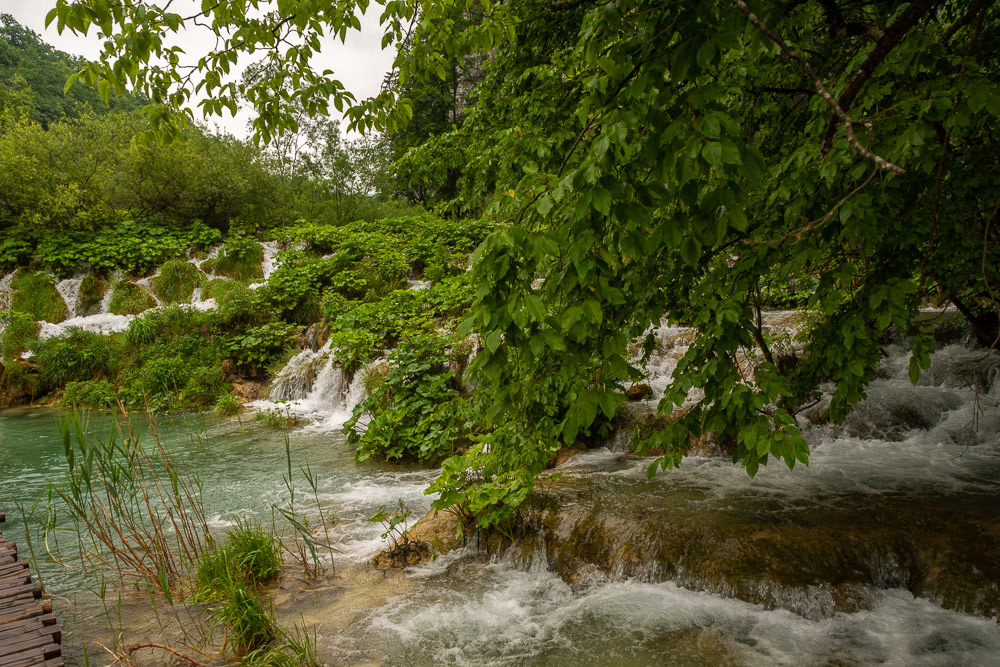
Water cascades over one the travestine banks that separate the lakes.
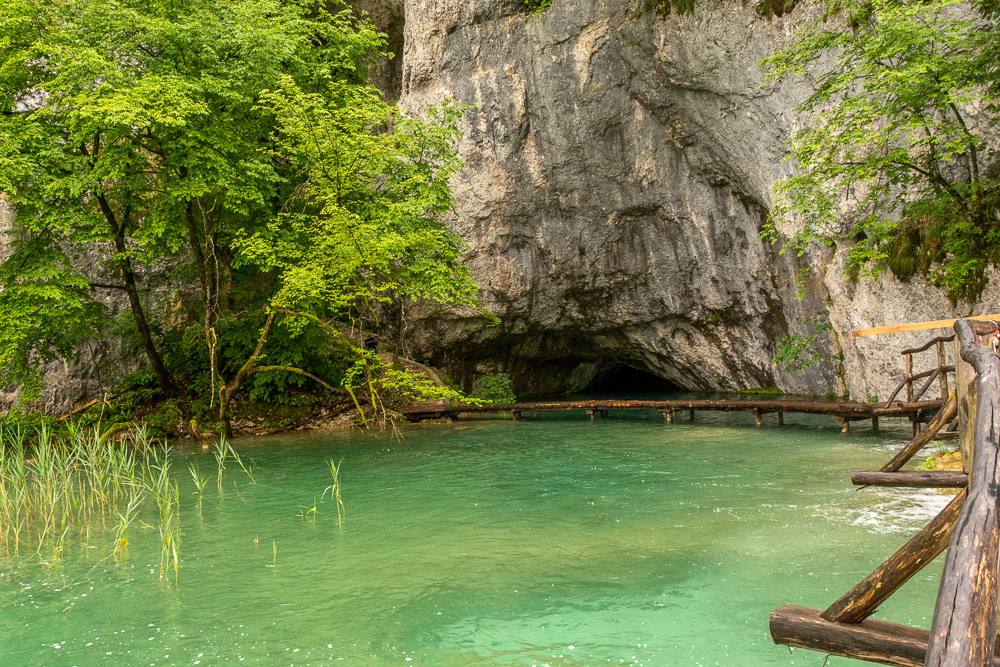
Timber boardwalks protect the sensetive travertine formations and allow public access through the lake system. This one leading to a cave.

Water cascades over one the travestine banks.
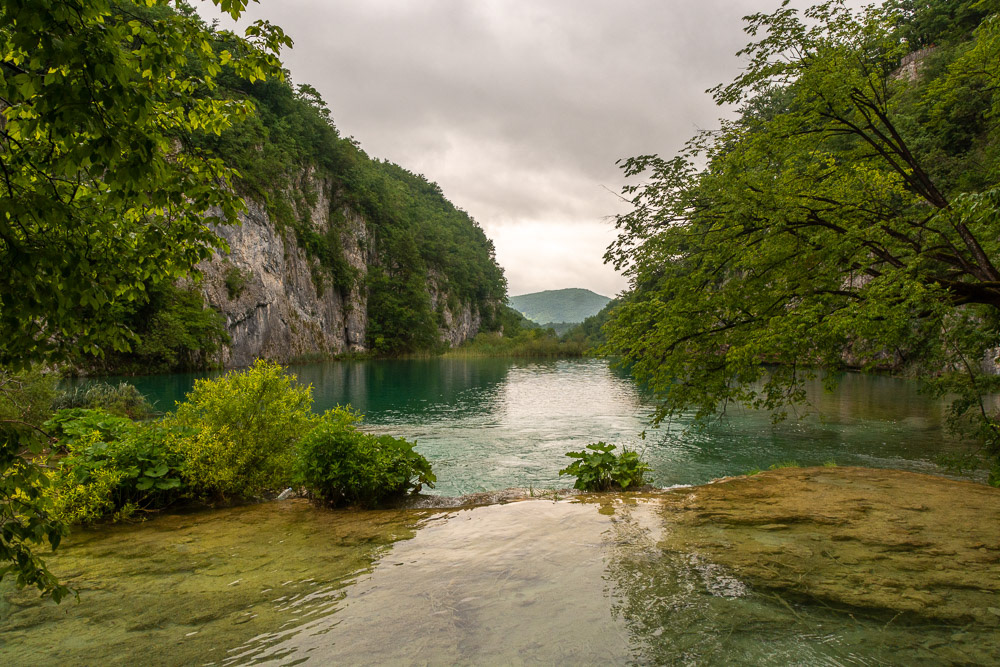
Looking down the canyon over banks and across lakes to distant mountains.
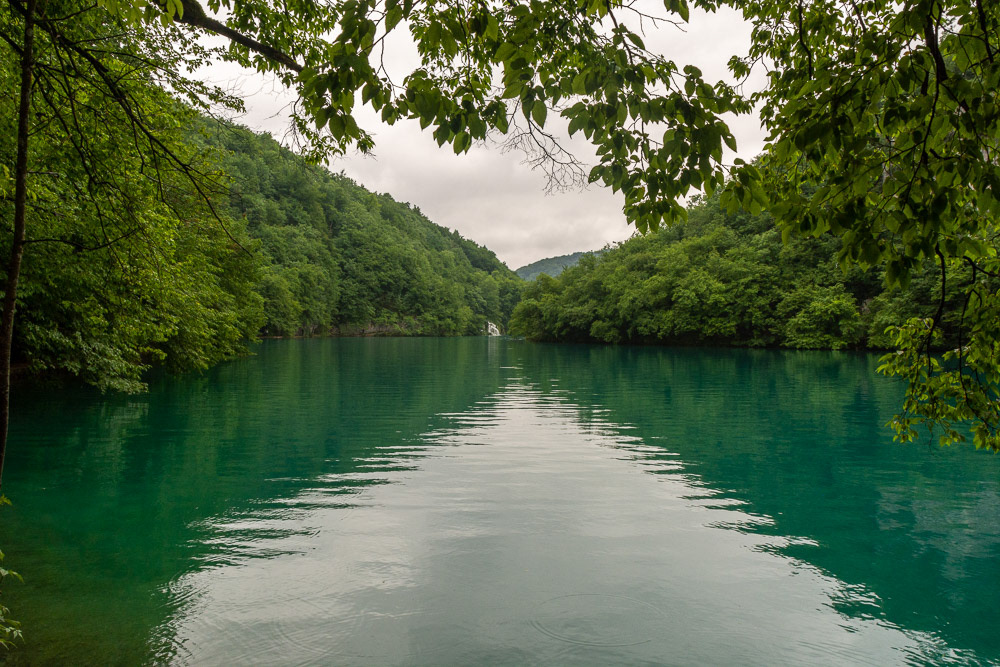
Reflections form an arrow of light pointing to a distant cascade.
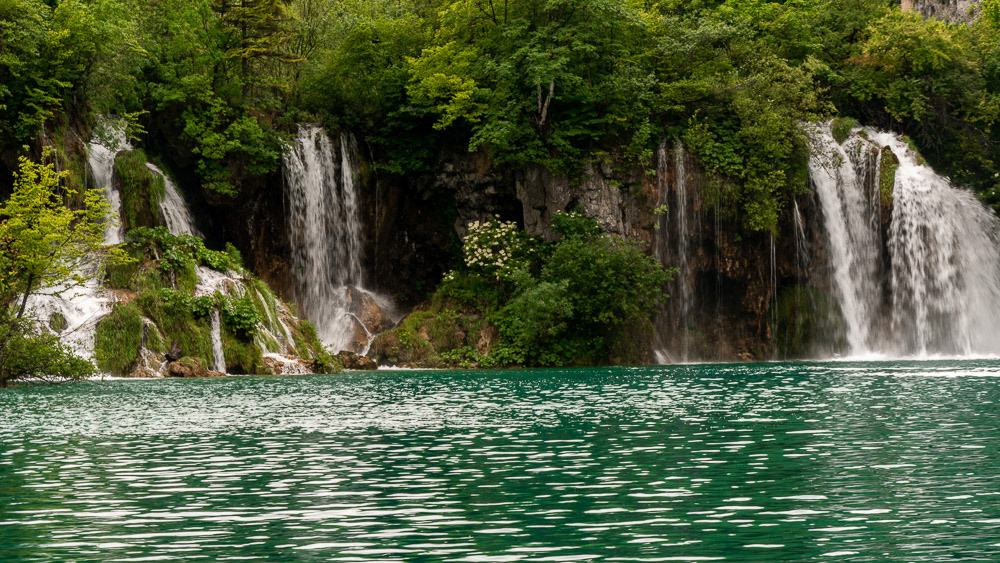
Cascades between the lush vegetation surrounding the lakes.
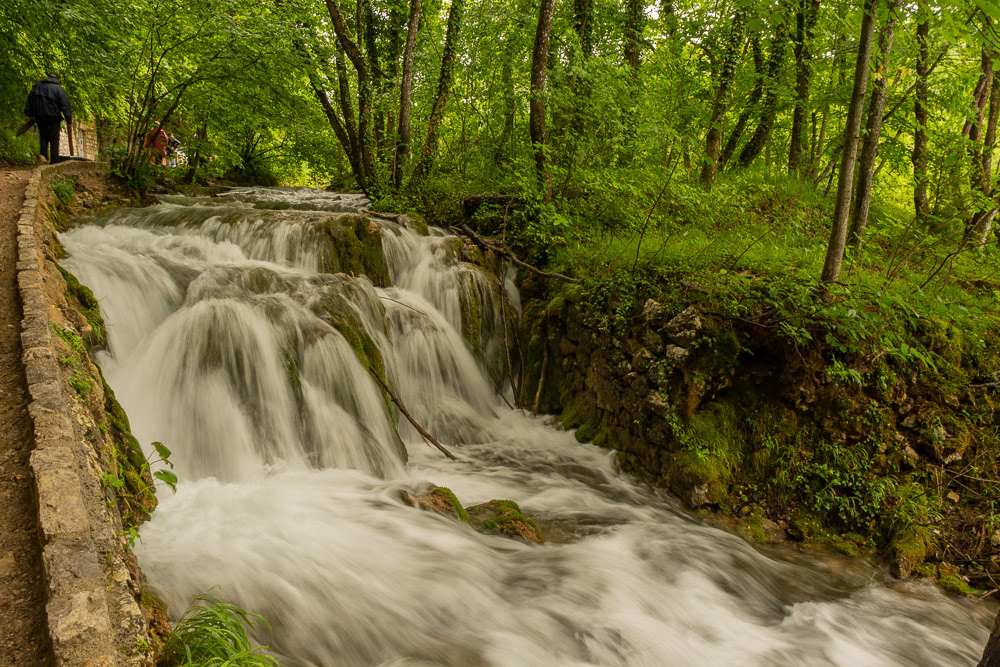
Water cascades down a rocky slope on its way to the lower lake.
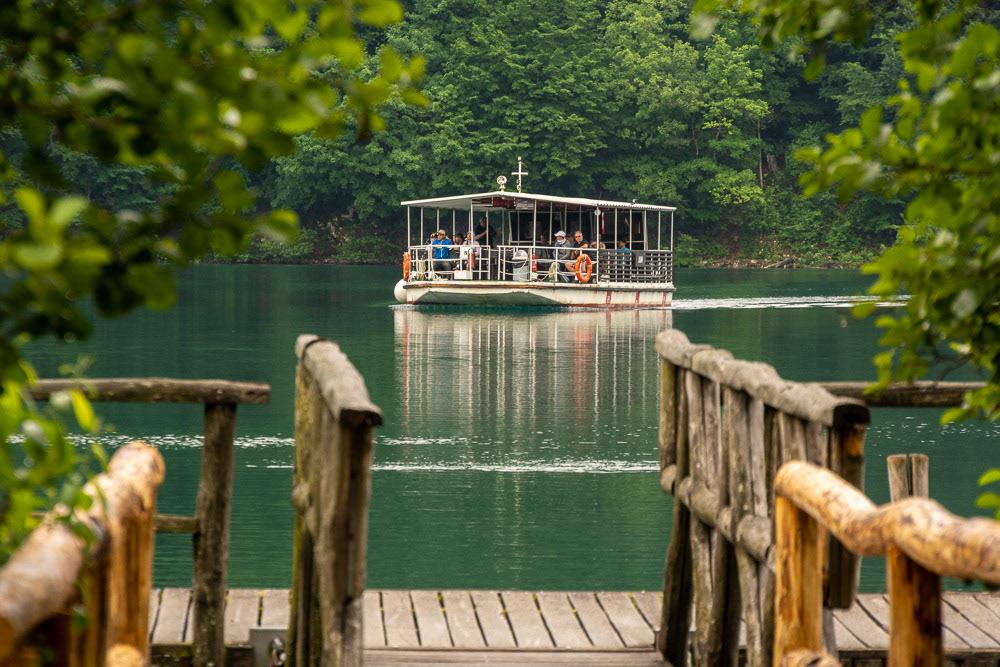
A barge approaches the lakside landing to transport groups across the lake.
Our next destination as we make our way to Ljubljana is Lake Bled in the Julian Alps in northwestern Slovenia..
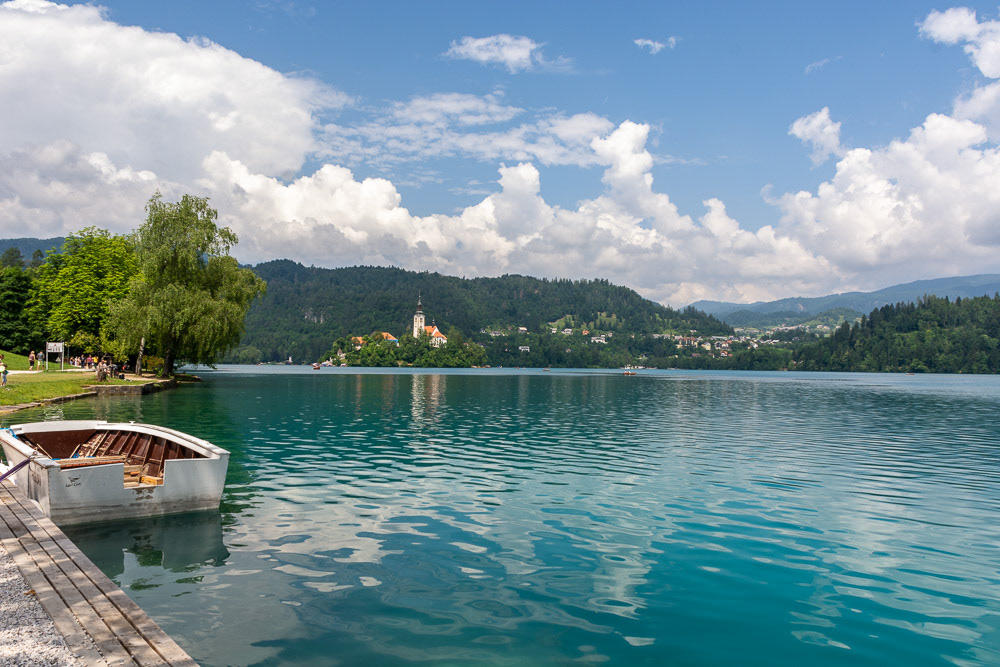
Lake Bled and a beautiful day for a boat trip to Bled Island (Blejski otok).
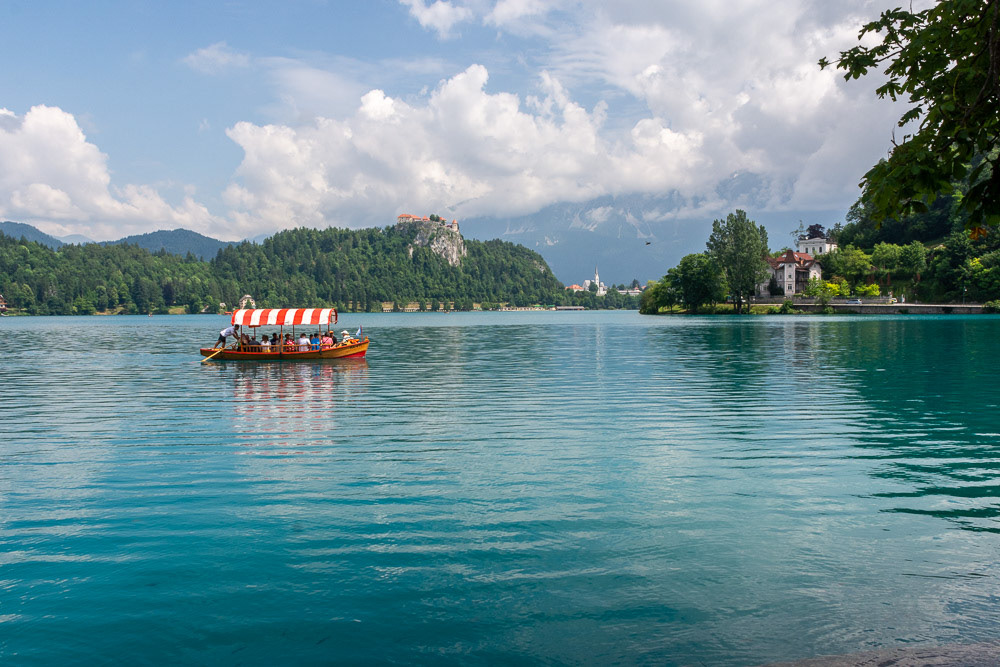
The traditional transportation to Bled Island, a wooden boat known as a pletna.

Bled Castle (Blejski grad,) a medieval castle built on a precipice above the city of Bled in Slovenia, overlooking Lake Bled.
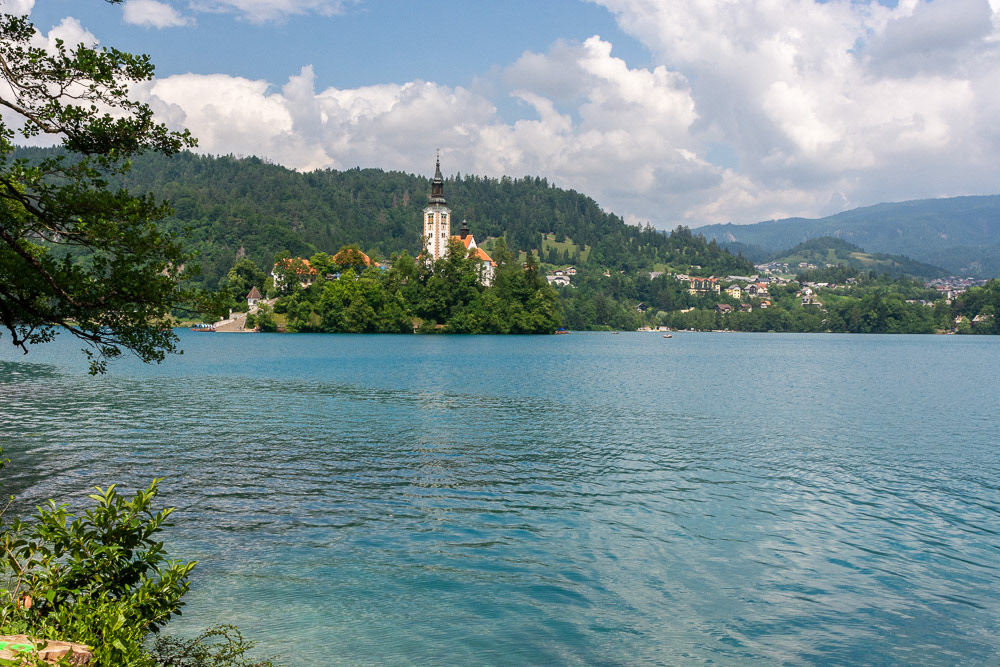
Bled Island and the pilgrimage church dedicated to the Assumption of Mary.
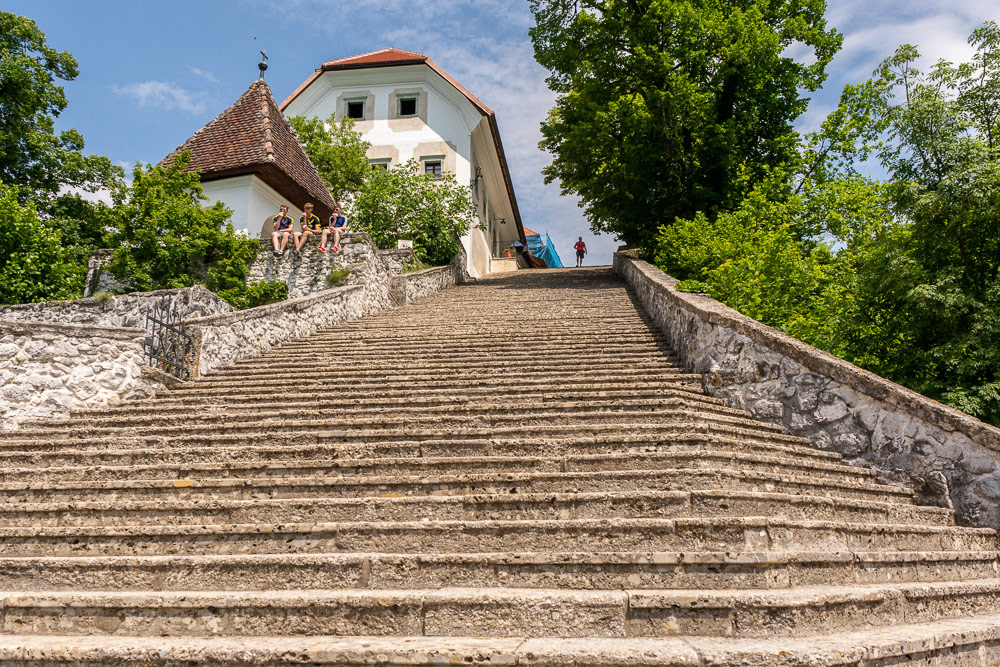
The Baroque stairway dating from 1655 with 99 stone steps leading up to the Assumption of Mary church on Bled Island.
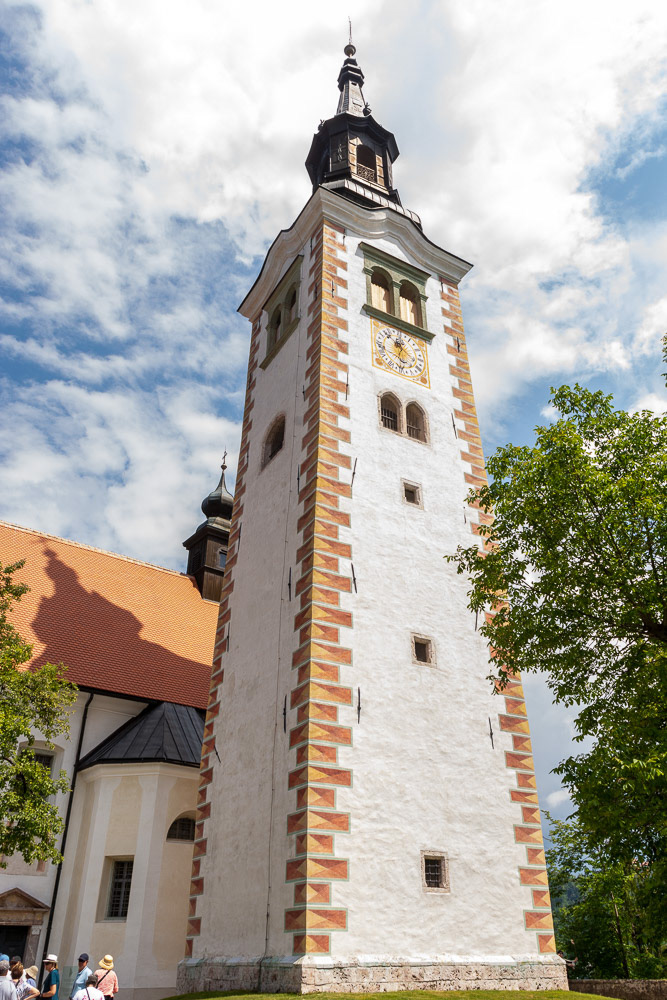
The Bell Tower of the Church of Mary on Bled Island.
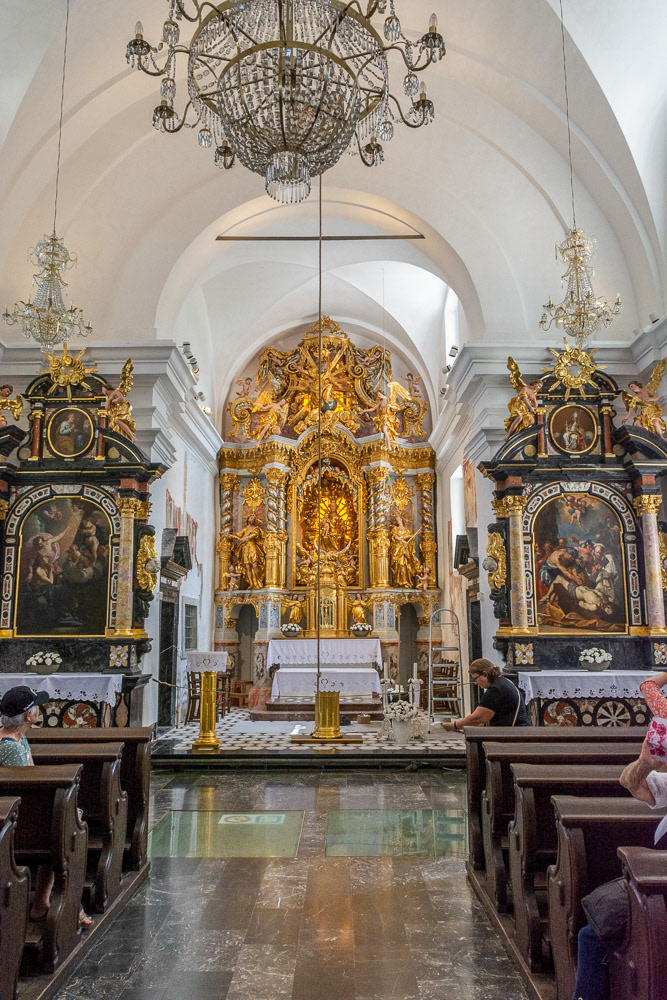
Church of Mary - the alter is dominated by a statue of Mary.
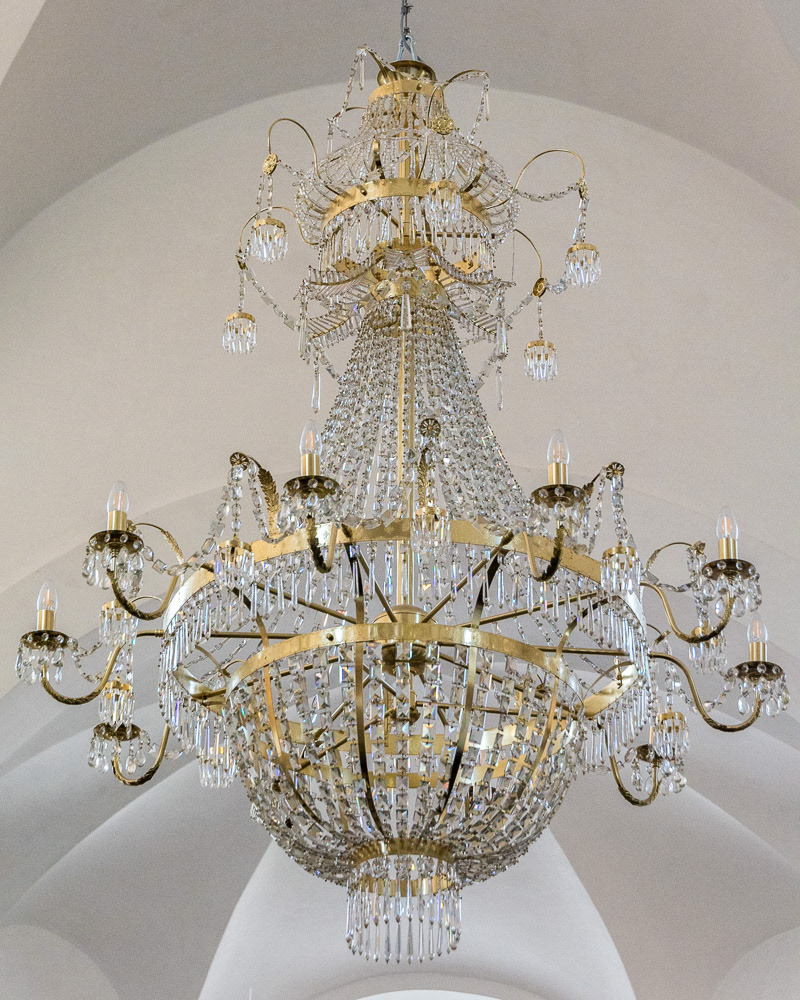
Church of Mary - guilded crystal chandaliers.
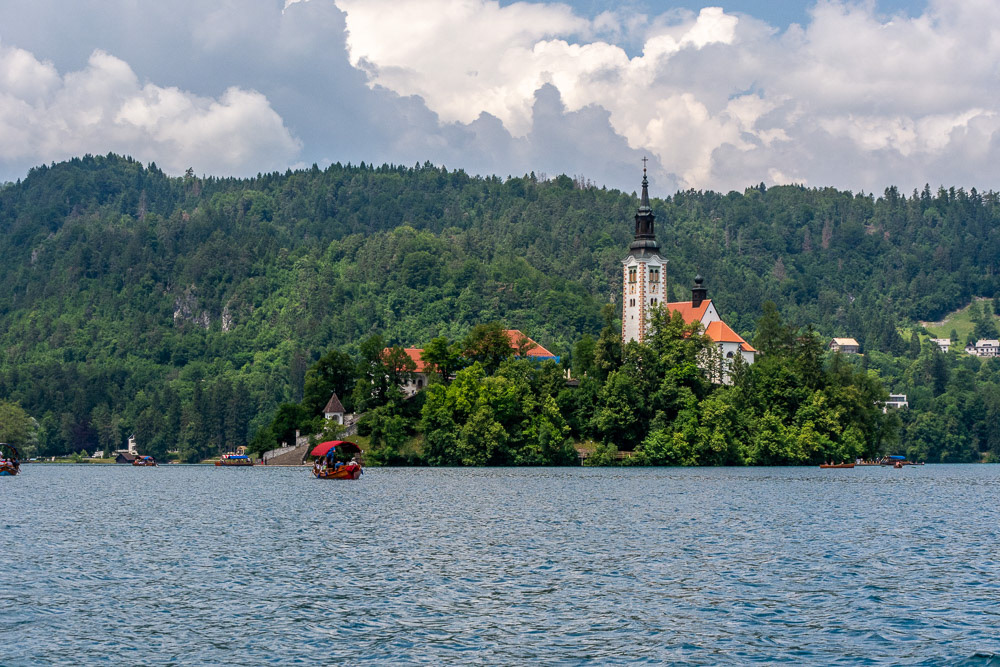
A plenta load of tourists in front of Bled Island with the Baroque Church of Mary and it's separate belltower.
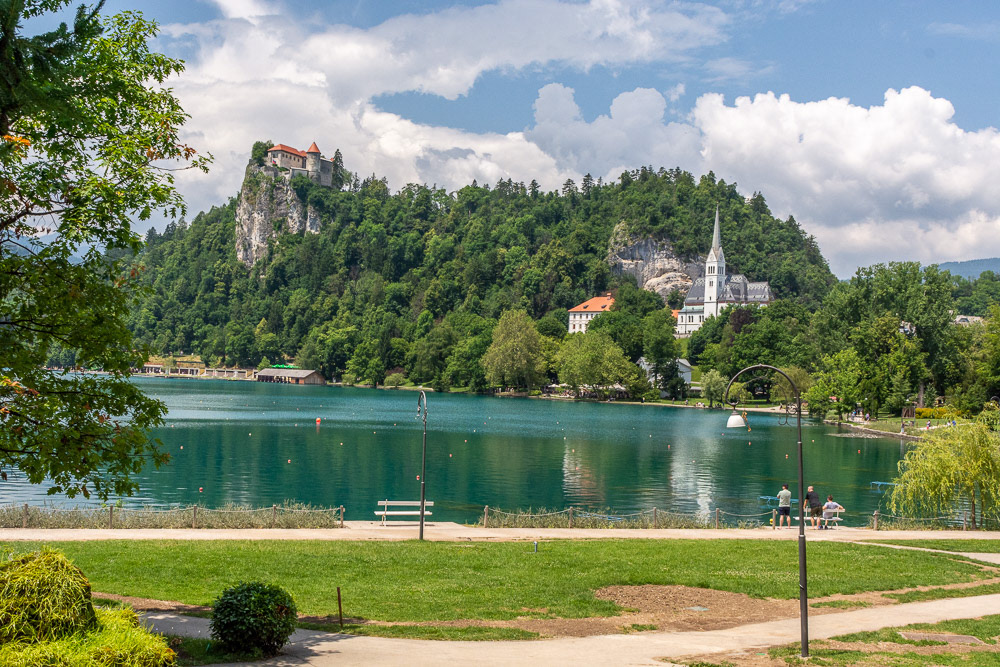
Bled Castle overlooking Lake Bled's regatta course - site of the World Rowing Championships.
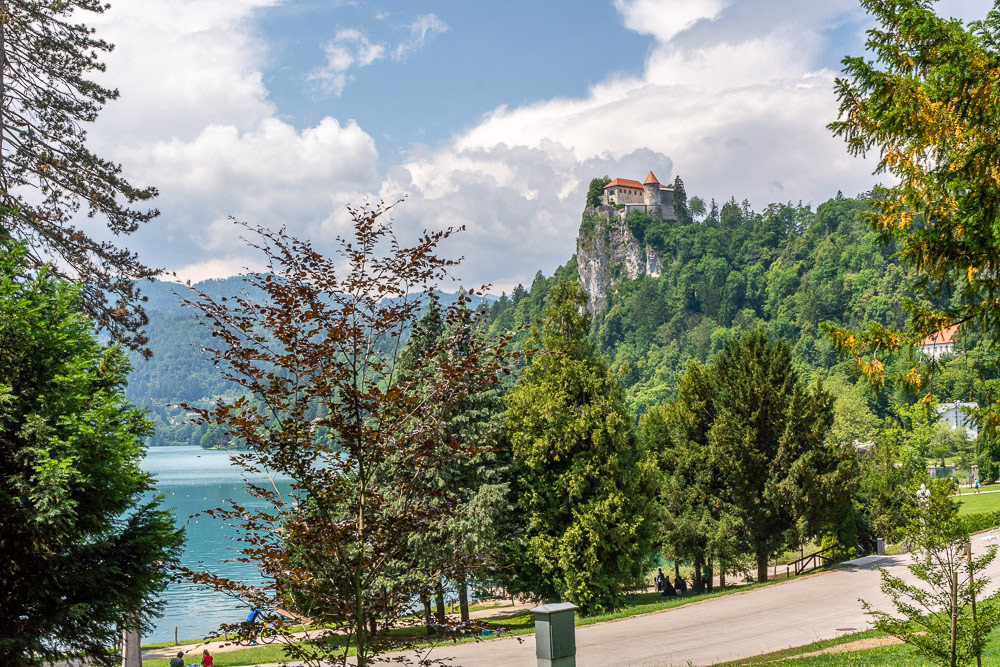
Bled Castle overlooking Lake Bled dominates the views around the lake and the city.
Ljubljana, the capital of Slovenia and our final destination of this trip, the cultural, educational, economic, political, and administrative centre of independent Slovenia.
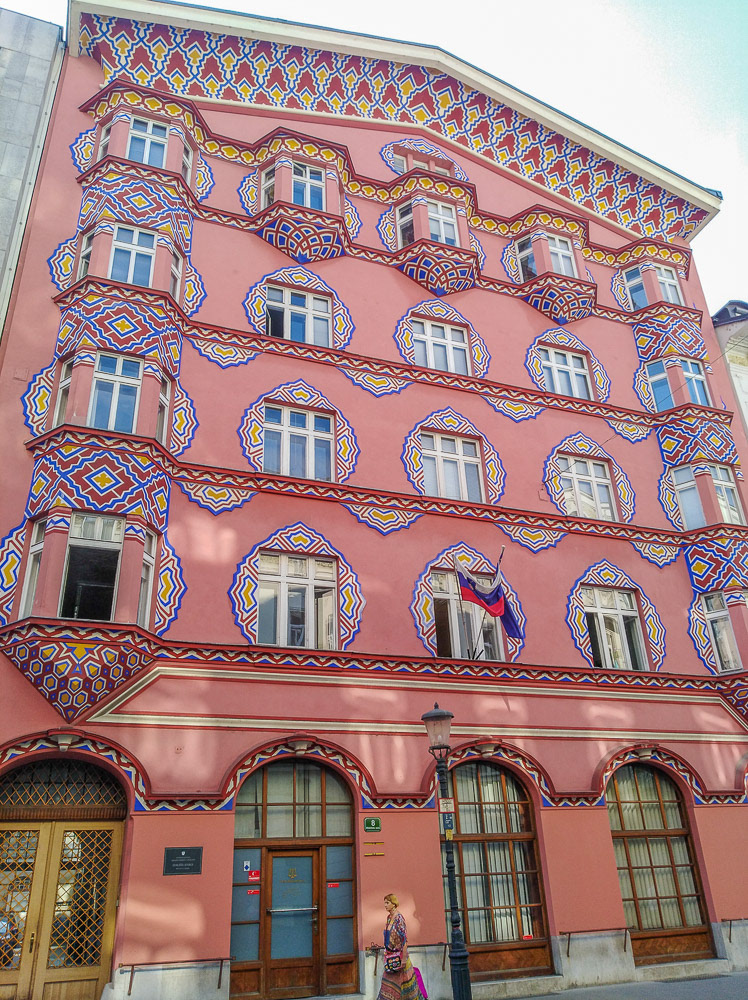
Art Nouveau excellence - in a former life a Cooperative bank now appartments.
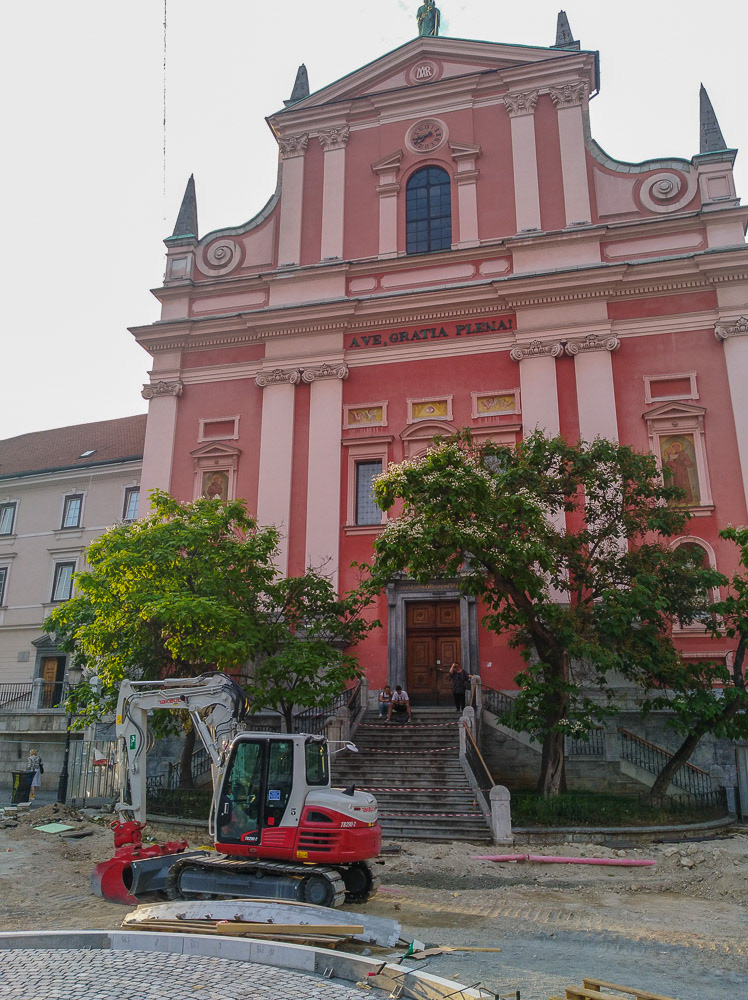
The Franciscan Church of Annunciation on Perseren Square.
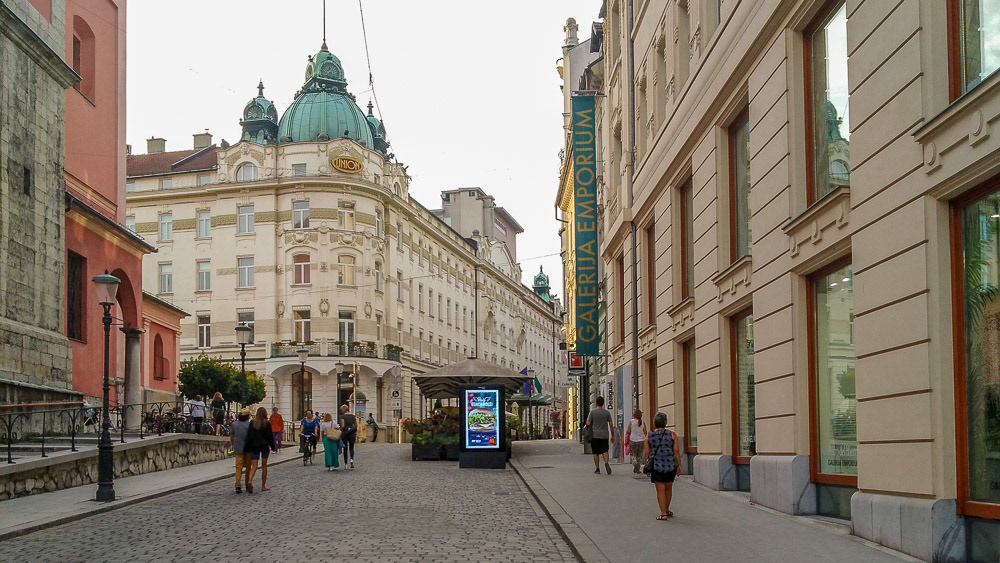
Exploring the streets in the Old Town area of Ljubljana.
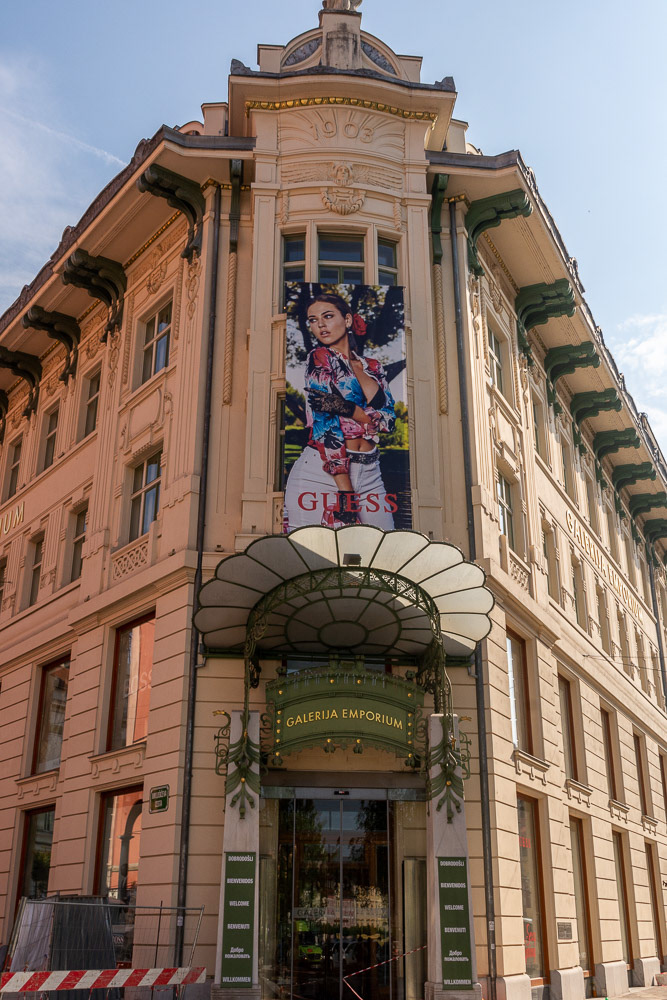
Galleria Emporium 1903 (Urbanc House) - the first department store in Ljubljana.
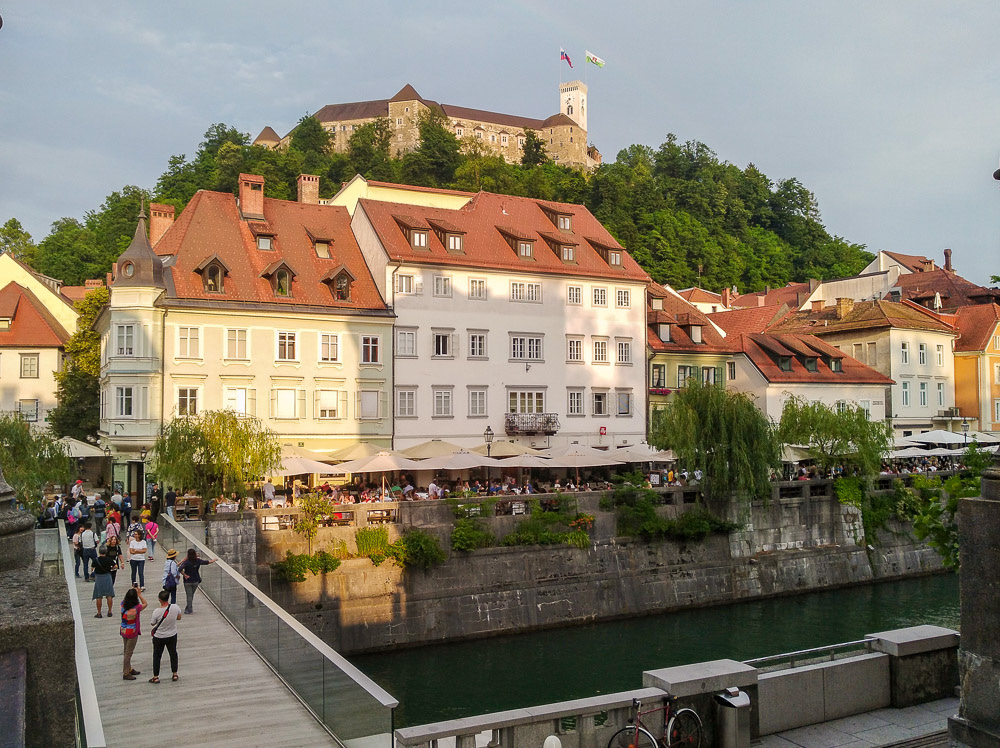
Ljubljana Castle high on the hill dominates the skyline behind the Old Town.
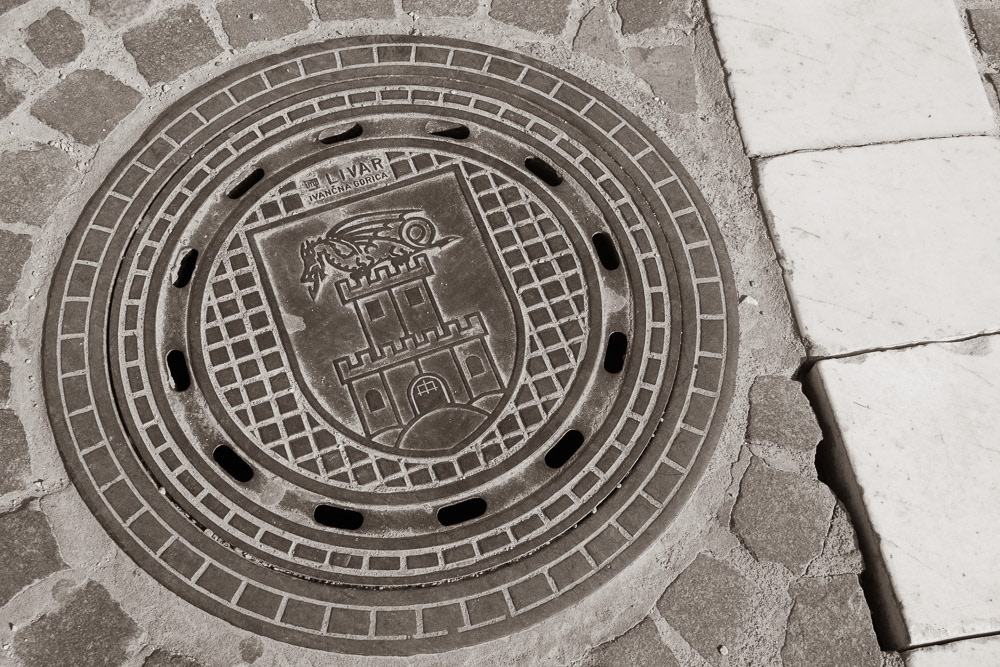
The city's coat of arms featuring the dragon on top of the castle, dating from the Duchy of Carniola, 1689.

The main building of the University of Ljubljna was formerly the Carniolan State Mansion.
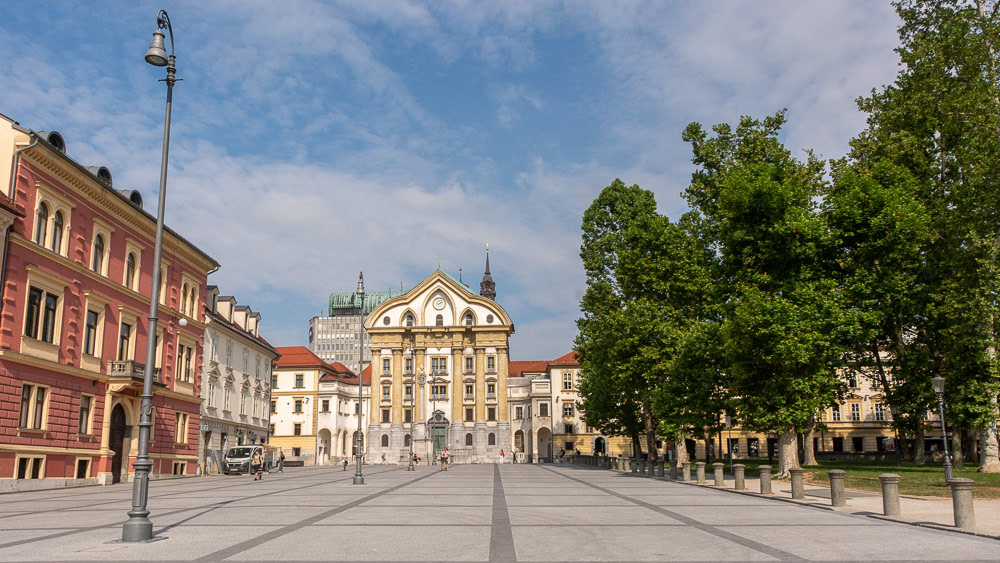
The Ursuline Churh of the Holy Trinity, another of the striking buildings facing Congress Square.
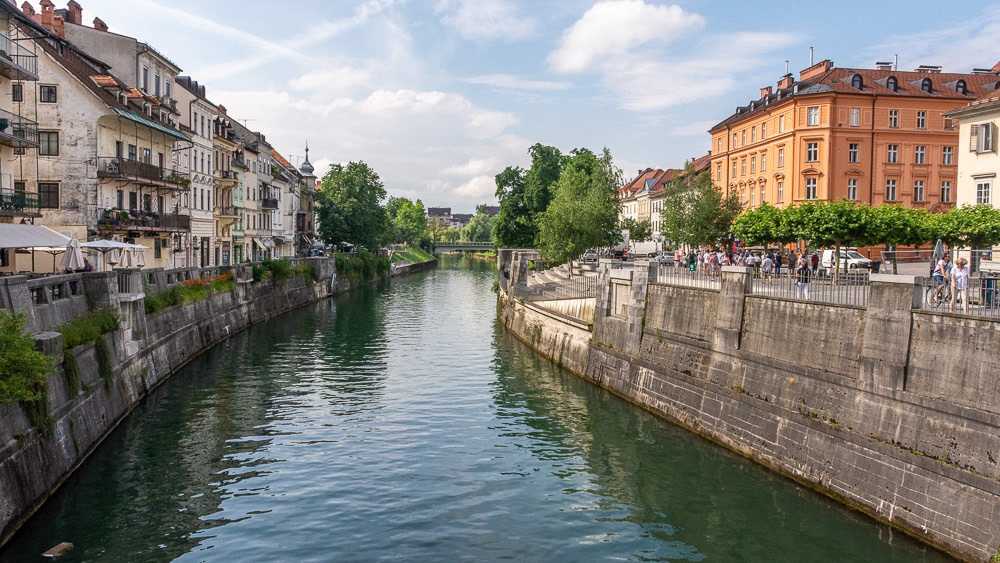
Ljubljancia River.
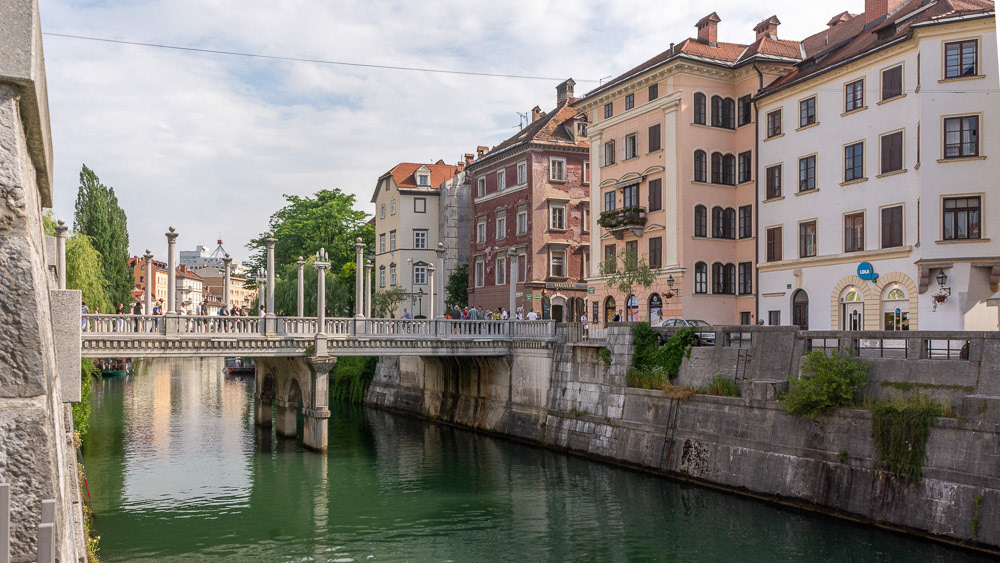
The Cobblers' Bridge is the third of Ljubljana's popular thoroughfares over the Ljubljanica river.
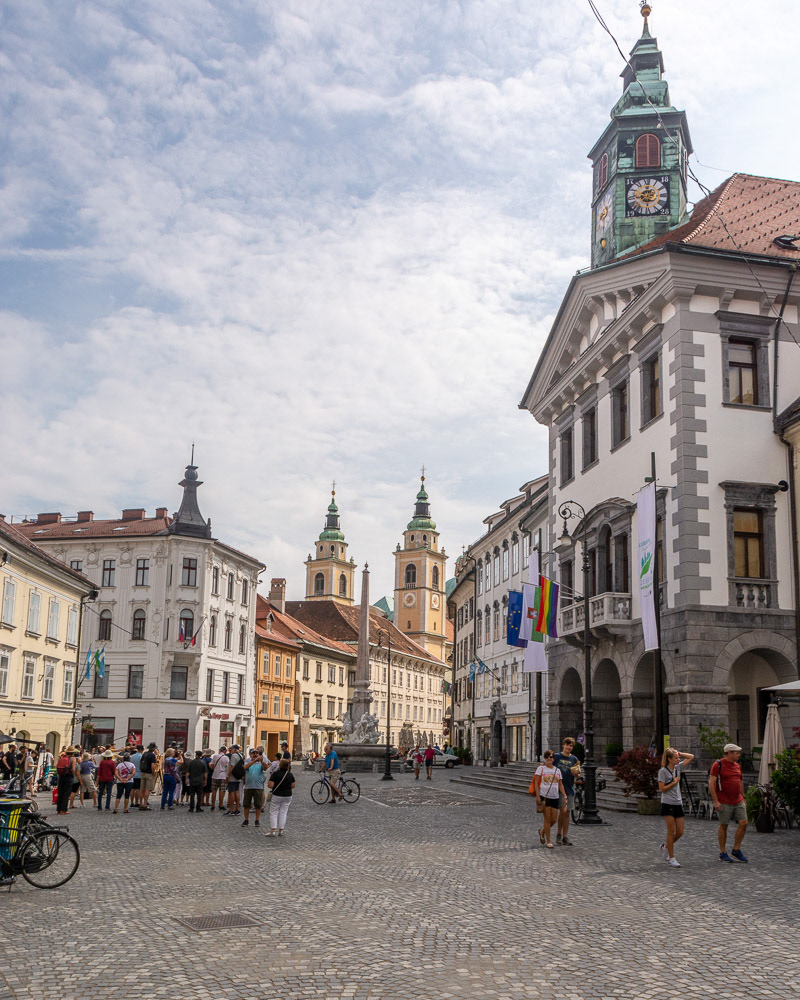
Old Town Square with Ljubljana Cathederal in the background.
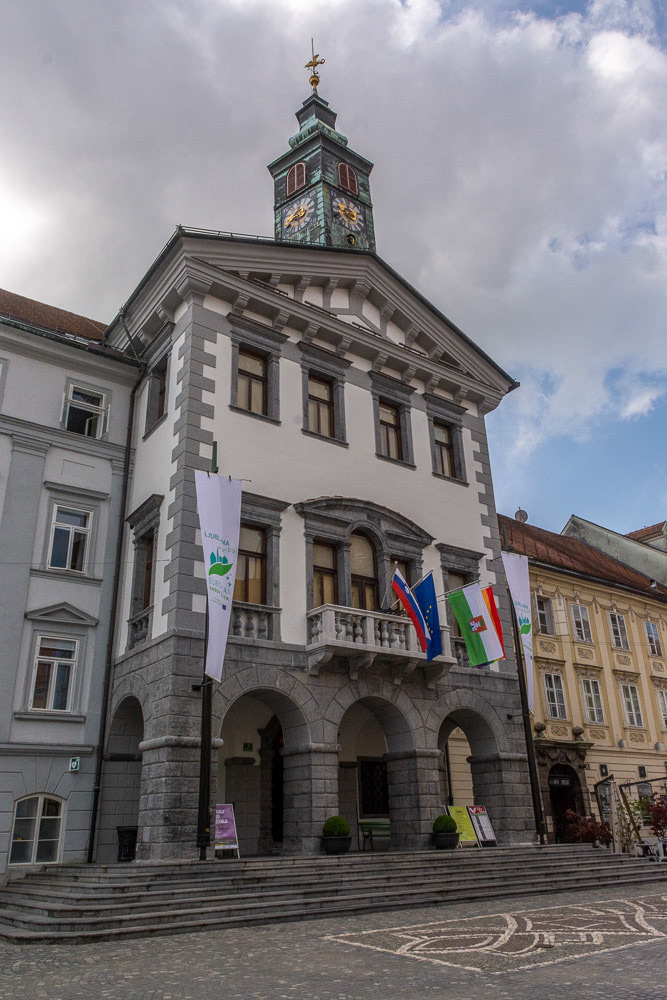
Old Town Hall fronts the Old Square.
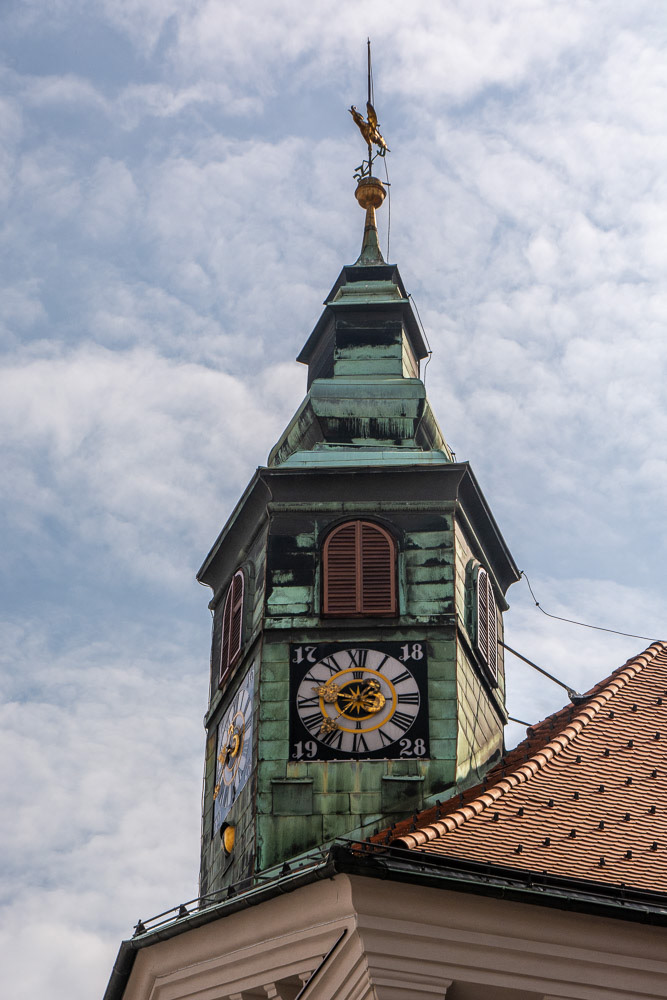
Town Hall Clocktower.
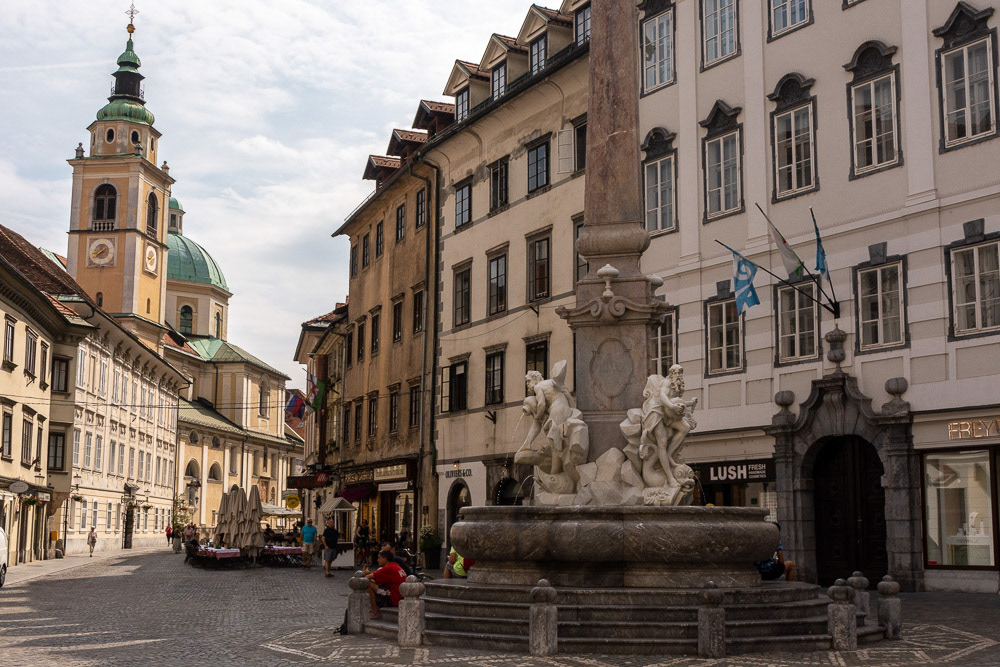
The Robba Fountain, one of Ljubljana's best known Baroque monuments, also known as The Fountain of Three Carniolan Rivers, stands at the edge of the Mestni trg (Town Hall square.)
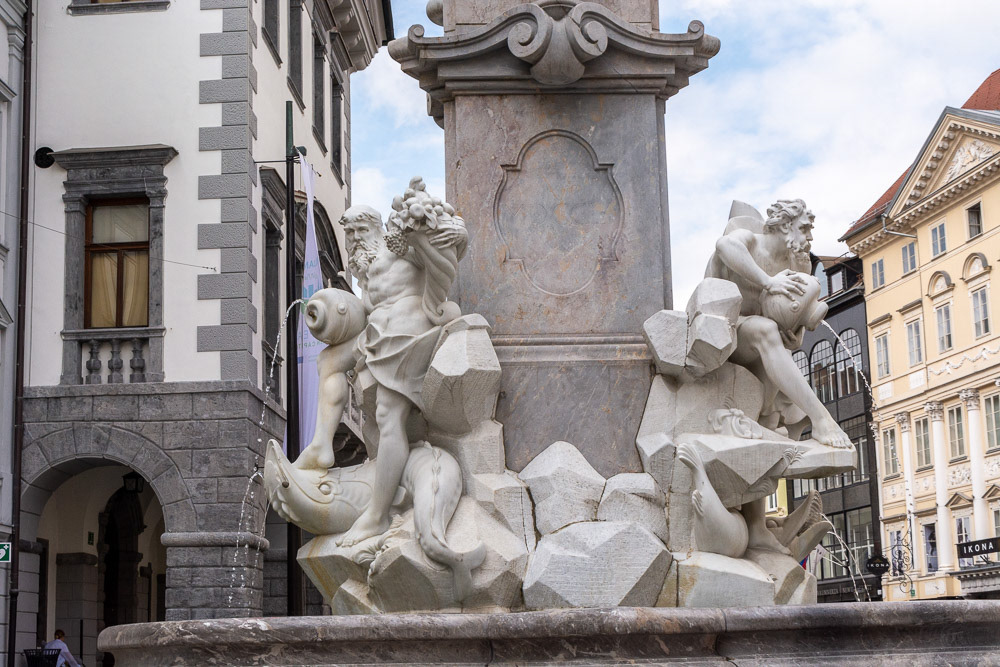
The Robba Fountain - The fountain consists of three male figures with jugs, supposedly represent the gods of the three rivers of Carniola: the Ljubljanica, Sava and Krka.

The side door, now named the Ljubljana Door, was redesigned by Mirsad Begić, who decorated them with portraits of the 20th-century bishops of Ljubljana.

A famous local restaurant in the old town serving indeginous Slovenian cusine.

A local woman waits paitently at her flower stall for customers.
